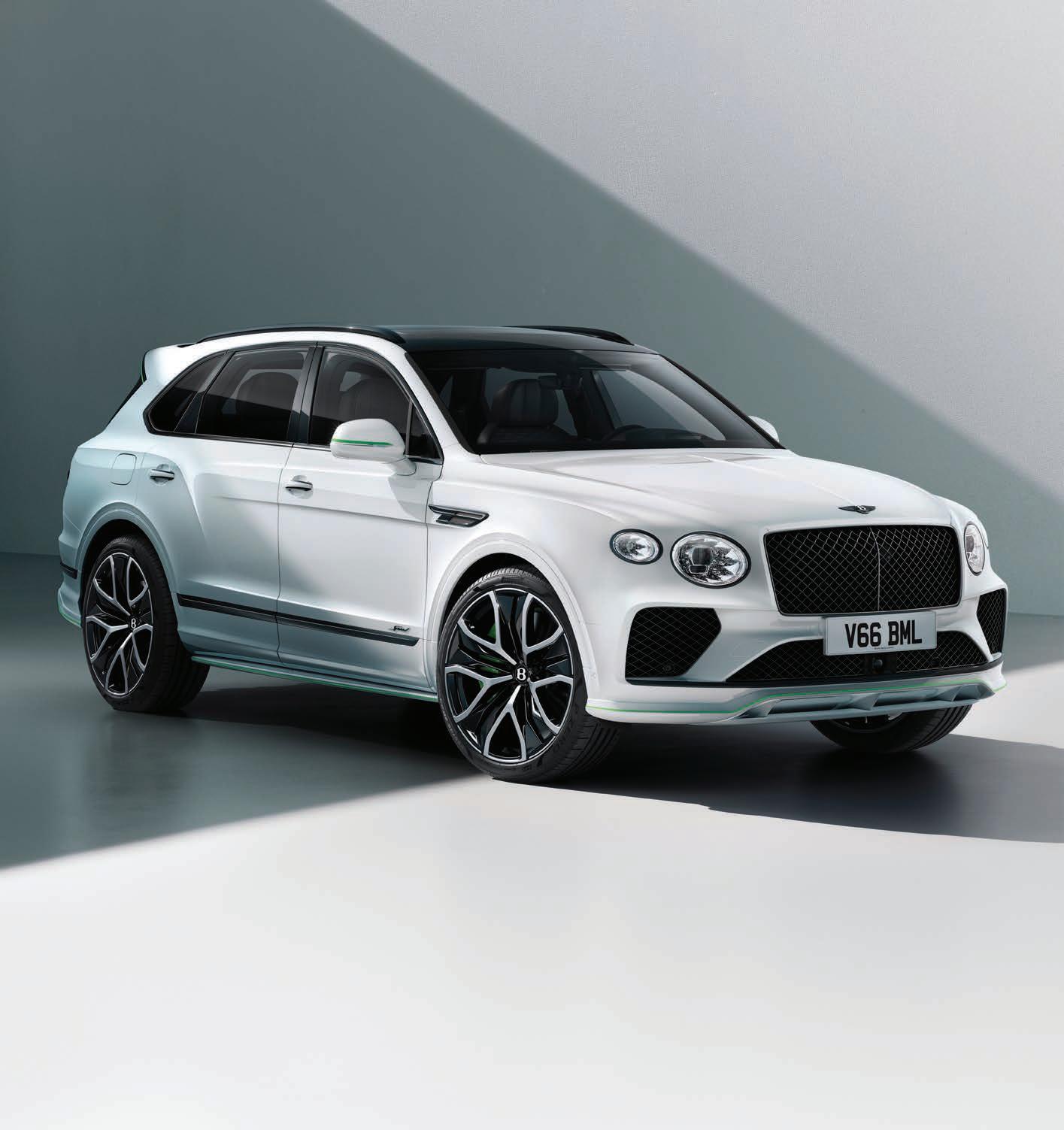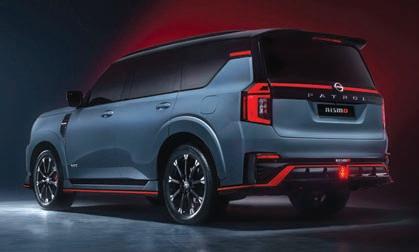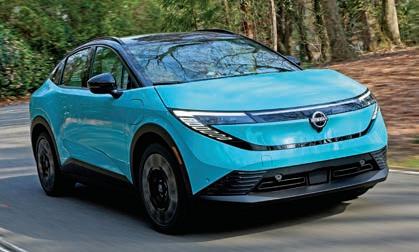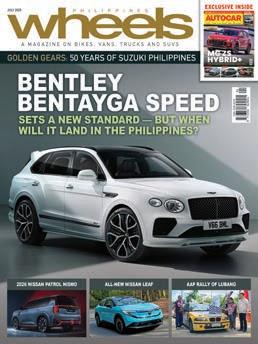



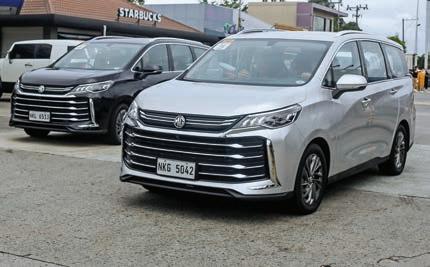

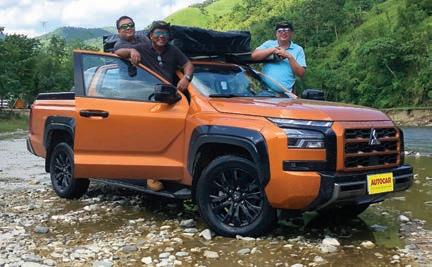










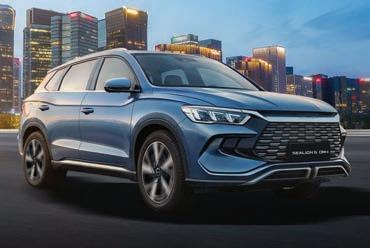
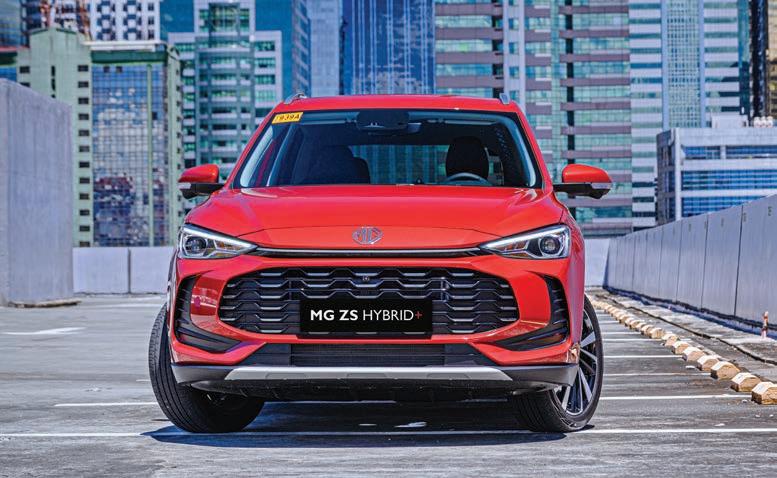

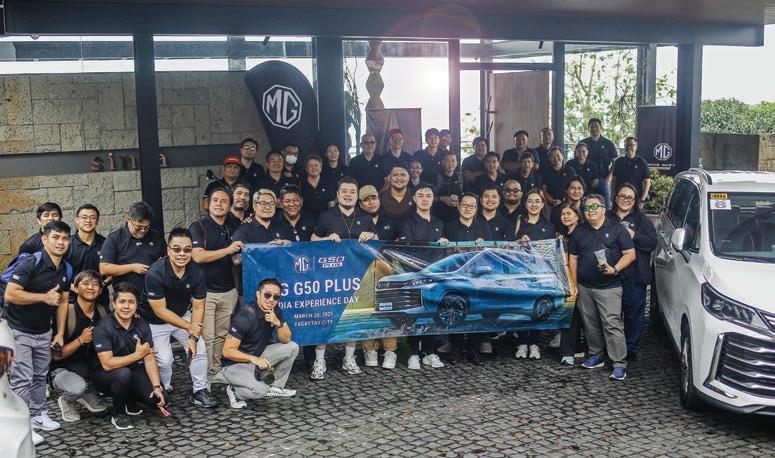
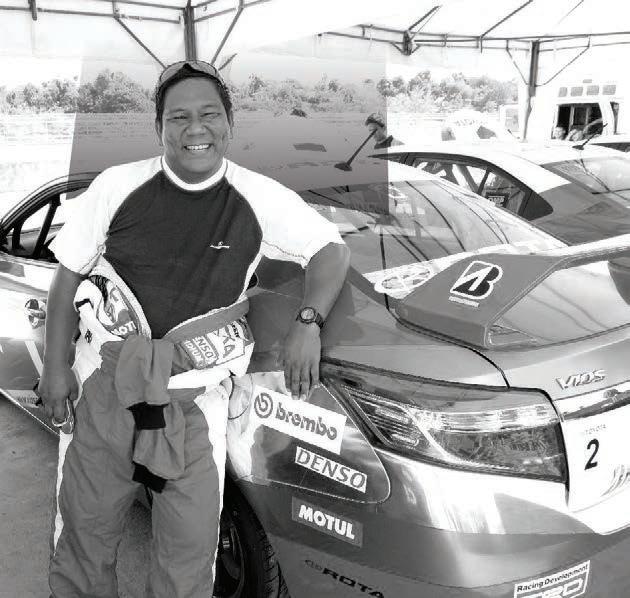
Eleven years.

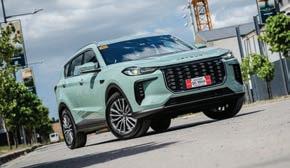
In an industry that moves as fast as the cars we write about, that number means something. It means we’ve survived the bumps, the detours, and the dead ends — and somehow, we’re still on the road, engine running strong.
Autocar Philippines turns 11 this month, and while that might not seem like much to some, for us — for a niche print magazine in the digital age, in a country with unpredictable roads both literally and figuratively — that’s worth celebrating.
We’ve covered hundreds of cars, countless launches, test drives from BGC to the boondocks. We’ve driven on racetracks, mountain passes, muddy trails, and yes, through heavy EDSA traffic, just to bring you the stories that matter. From hybrid supercars to humble city runabouts, we’ve told their stories — and in doing so, we’ve told ours too.
But perhaps our proudest moment came not in a shiny showroom or behind the wheel of a six-figure sports car. It came in the middle of silence — the kind only a lockdown can bring.
In 2020, when the world hit pause, we kept printing. When borders closed and businesses folded, Autocar Philippines kept rolling off the press. Not out of stubbornness, but out of commitment. To our readers. To the industry.



To the very idea that even in isolation, we had stories worth telling. That the love for cars doesn’t quarantine.
We were one of the very few — if not the only — motoring publications that kept physically reaching readers when everything else went purely digital. That wasn’t easy. But nothing worth doing ever is.
Today, we stand not just as a magazine, but as a chronicle of how Philippine motoring has evolved in the last decade. We’ve seen the rise of electric vehicles, the return of old brands, the birth of new ones, and the unstoppable march of tech into every dashboard.
We’ve also grown — not just in pages, but in voice. Our reviews are sharper. Our columns more fearless. Our writers, now seasoned veterans and rising talents alike, remain driven by one thing: passion.
To our advertisers, industry partners, and loyal readers — thank you. You kept the wheels turning. To the team behind every issue — from editorial to design to distribution — you are the unsung pit crew that keeps this machine running.
We’re 11 years in — and we’re just getting started.
Here’s to more stories. More miles. More drives.
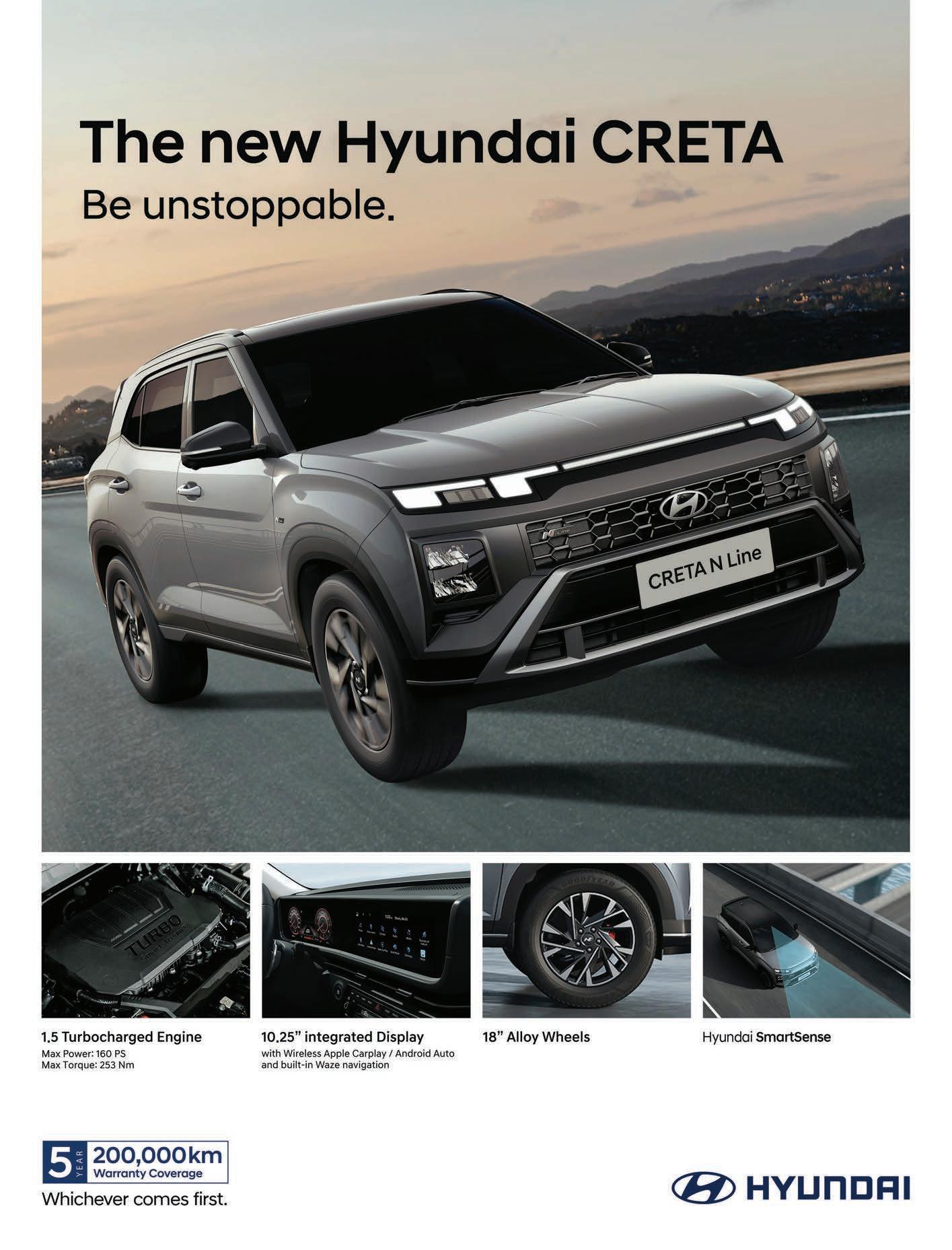

Achieving sustainability is crucial to securing the future of motor racing.
The British Truck Racing Championship (BTRC) is working with Truck Sport UK, and the British Automobile Racing Club, to develop strategies and actions that help ensure they meet their commitments to reducing carbon emissions and creating a more positive impact on the world.
As part of this initiative, the BTRC is working in partnership with Silvey Fleet and BWOC to reduce CO2 emissions by using Renewable Diesel (HVO) for all its race events.
Silvey Fleet is a leading multi fleet fuel card and fleet management solutions provider while BWOC, one of the United Kingdom’s largest fuel suppliers, specialises in bulk supply of liquid fuel products. Together, they will be supplying Renewable Diesel (HVO) for racing events throughout 2025.
The fuel industry is undergoing a major shift as it transitions to new, more sustainable energy sources. Both Silvey Fleet and BWOC are playing their part in this evolution by offering innovative new products and services that can help customers reduce CO2 emissions, including Renewable Diesel (HVO), EV charging and carbon offsetting.
Made from 100% renewable and sustainable feedstocks, Renewable Diesel (HVO) can reduce greenhouse gas emissions by up to 90%. It is a safe and easy alternative that can be used in place of conventional diesel without having to make any engine modifications and many vehicle manufacturers have approved it for usage in their engines1.
Renewable Diesel (HVO) is available on several Silvey Fleet fuel card networks, providing customers with easy access to this greener fuel
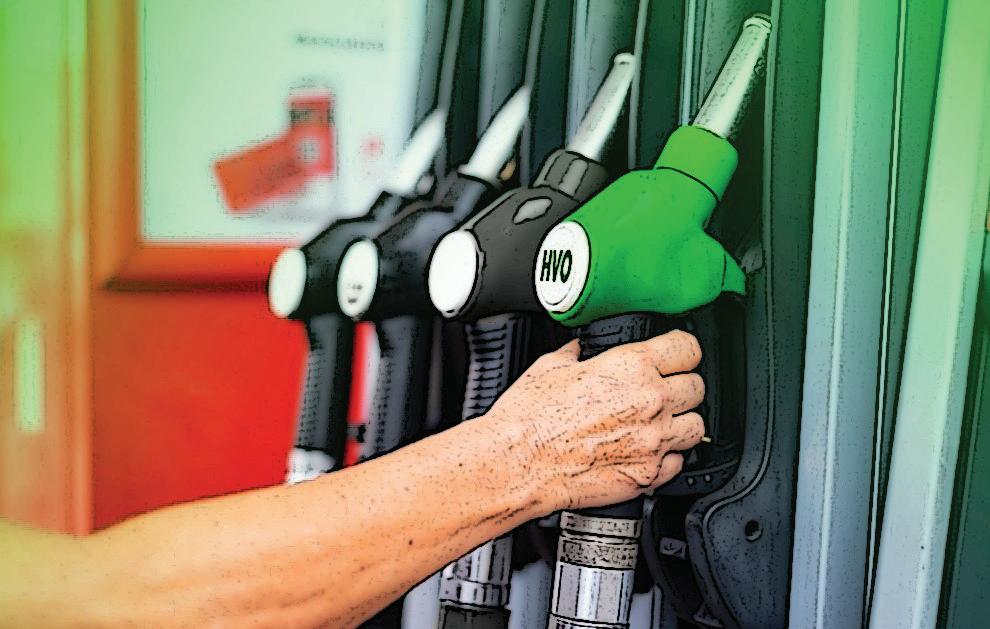
alternative.
BWOC offers customers nationwide bulk supply of Renewable Diesel (HVO). With access to multiple supply points nationwide, the company offers security of supply with sustainability ensured through the ISCC-EU certification scheme.
“Partnering with the BTRC is an exciting opportunity for Silvey Fleet, allowing us to demonstrate our commitment to offering customers sustainable solutions, and play our part in shaping the energy transition,” says Miriam James, Managing Director of Silvey Fleet. “It is a prime example of how companies can collaborate and take action to decarbonise and contribute towards a more sustainable future.”
“We want to help customers decarbonise by offering innovative fuel solutions that can help reduce their CO2 emissions,” explains Amy Jones, Managing Director of BWOC.
“Supplying Renewable Diesel (HVO) to the British Truck Racing Championship will help ensure the organisation meets its commitment to reducing carbon emissions and enhance the positive impact racing can have on the world.”
Benefits of Renewable Diesel (HVO) are its made from 100% renewable and sustainable feedstocks, up to 90% greenhouse gas emissions savings, ban be used in its pure form or mixed with conventional diesel, no engine modifications required, excellent cold flow properties and shelf life, free from FAME, sulphur, aromatics and metals, meets BS EN 15940.
HVO is chemically similar to conventional fossil diesel BS EN 590 Diesel, meets BS EN 15940 and is approved by a wide range of vehicle manufacturers.
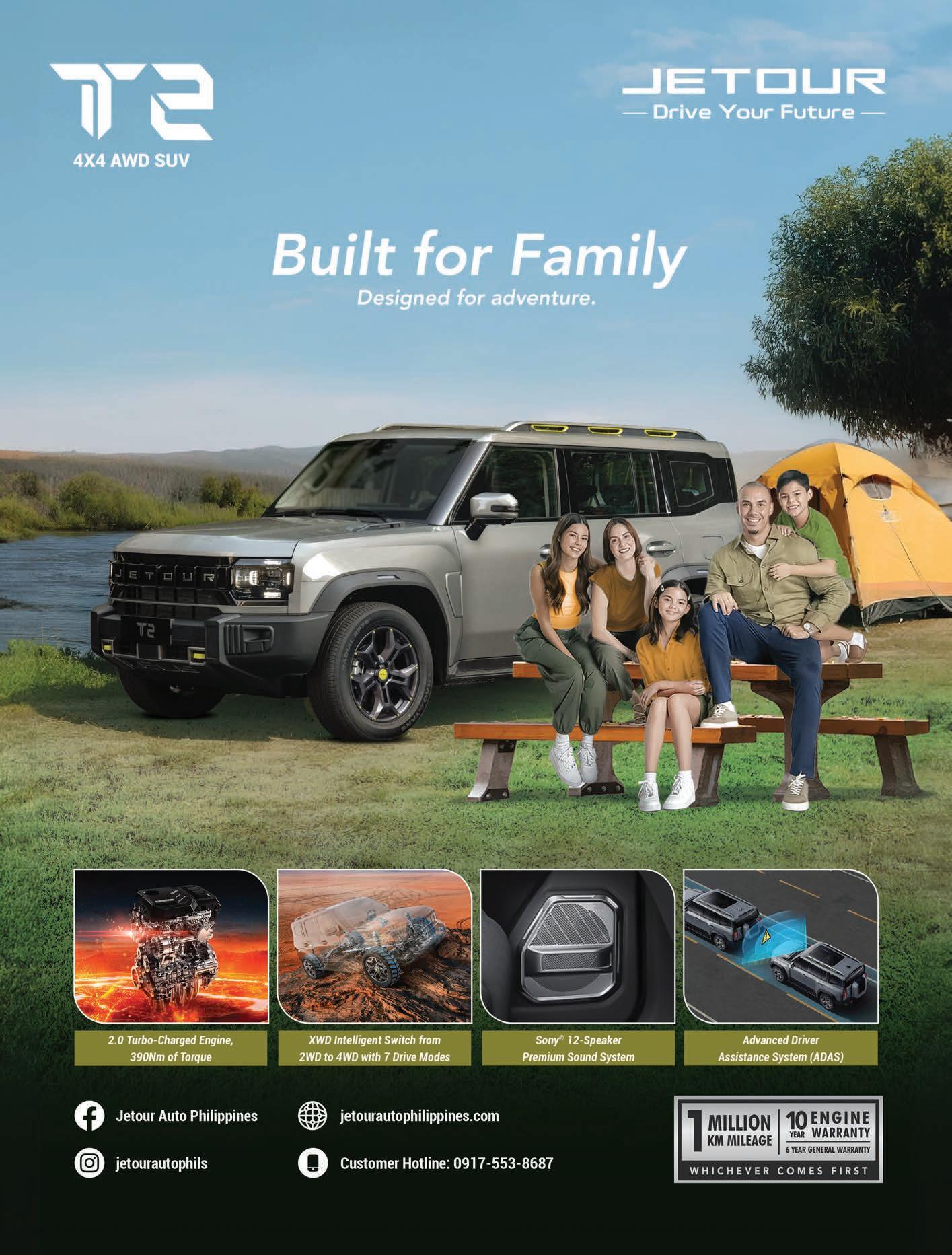

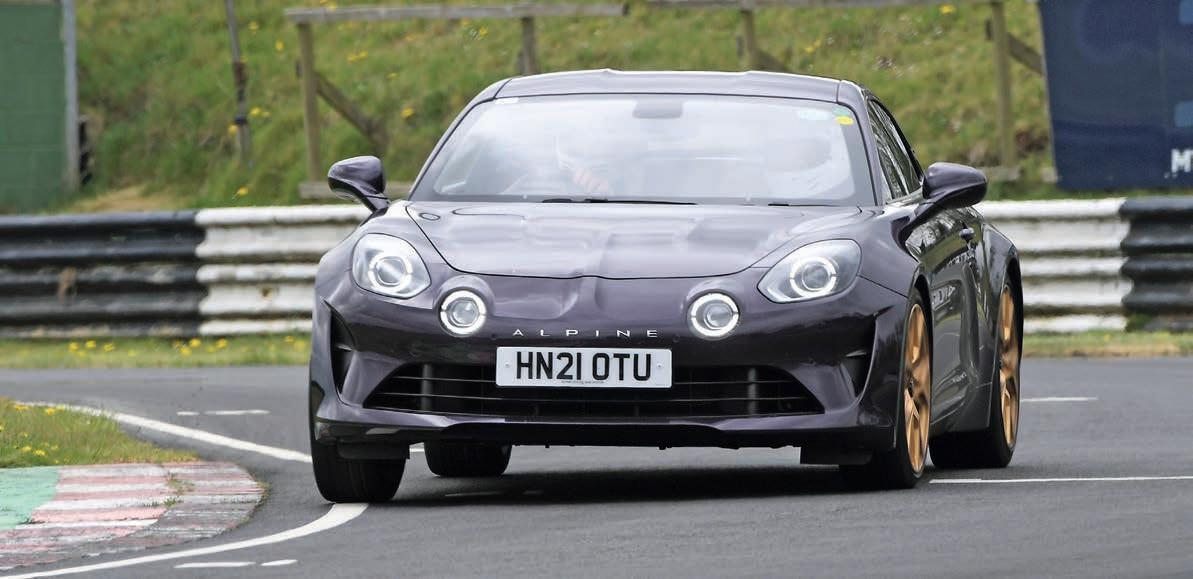
Ever since two people whose judgement I trust, Matt Prior and Jonathan Palmer, decided the Hyundai Ioniq 5 N was A Good Thing, I’ve been desperate to drive one – and it happened this week. A handsome example has just departed our place after an action-packed few days and I’m feeling the loss.
This, you will recall, is a 2.2-tonne electric crossover that can transform itself into a highperforming hot hatch if you take a firm grip. It will accompany your progress with a faux-ICE soundtrack so convincing that at times you can simply forget you’re in an EV. Sceptics (I was one) need convincing about such play-acting, but the system’s noises and actions are so faithful to your inputs that you need skill to make it work well.
The Steering Committee, as so often, posed the key question (“would you want one?”), and I suppose I would have to answer in the negative. But it would be the car’s cost (£65k), size (4.7m long) and consumptions (brakes, tyres and energy) that would stop me.
Find me an EV the size and shape of a Ford
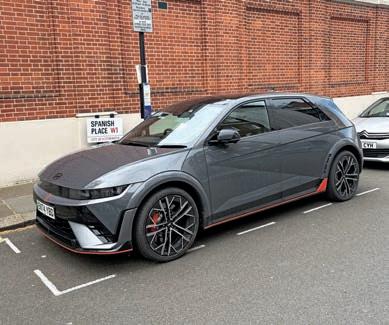
“It strikes me as a minor miracle Clarkson is still doing this”
Escort Twin Cam with matching soundtrack and I’ll be hooked.
TUESDAY
With our Alpine A110, my son Jon and I set off to Castle Combe circuit, near Chippenham, for the annual Guild of Motoring Writers’ track day, a friendly affair that provides a decent test for your car without getting too serious.
Having owned this car for three years and campaigned it here and there, we’re getting to know its limits quite well, so we were able to match the field – even Porsches, of which there were several. The car was on track for two hours solid but once again showed no ill effects, which I read as a big benefit of light weight.
I’m a serial car swapper but keep labelling this Alpine a keeper. However, it’s also ‘just’ a base model with 249bhp and I keep seeing others of our car’s vintage and value with 288bhp –16% more poke. This was starting to look like a danger sign until a wise friend pointed out that the two early versions have exactly the same peak torque: 236lb ft, derived at just 2000rpm. No wonder they get out of corners so well.
THURSDAY
Every week or two, I think I might be in the market for a used Tesla. I’ve never connected this desire to the machinations of Elon Musk and am always surprised when others do: there’s so much more to building a million cars a year than one weird bloke’s personality and politics. Anyway, low-mile Model 3s (my favourite) are
such superb value that I can’t forget it. There’s a Hampshire specialist I follow called R Symons, and I’m having trouble not typing that name into every search bar I see. Getting over it, but it’s not easy.
Nose in The Sunday Times over breakfast, I came across Jeremy Clarkson’s review of the Ford Mustang Dark Horse. He assessed it with typical off-the-wall brilliance and gave it four stars. It’s always a good ST week when JC does the test. What usually stands out, and did this time, is the joy he derives from writing his stuff. A professional cynic, he would never admit to anything resembling joy, but you can feel it. It always strikes me as a minor miracle that Clarkson is still doing this, given everything that competes for his time (farm, pub, TV, brewery, health, being a celeb). It all goes to prove what Peter Robinson taught me half a century ago: that compared with reading and writing about cars, nothing else is remotely as important or as much fun.Otamenimi, unt,
Do you have a thing about interesting cars nearby that are apparently unloved? I do. This Mk5 Ford Mustang is in a nearby village and I keep thinking it deserves a better life. My pipe dream: swap it with the owner for a healthy Hyundai i10, then find some restorer to give it a new future. All, of course, after I’ve won the lottery…



EDITORIAL TEAM
IRA V. PANGANIBAN Editor-in-Chief
EDGAR QUESADA Associate Editor
NEIL PAGULAYAN Executive Editor
BINKY SIDDAYAO Technical Editor
OLSON CAMACHO Off Road Editor
MATT PRIOR | KRIS LIM | BINKY SIDDAYAO Columnists
JOHN REY SAN DIEGO Staff Writer
WILLIAM HERRERA | LUIS GERONA | RANDY PEREGRINO Contributors
ANJO PEREZ Senior Photographer
BONG BOADO | KEITH MARK DADOR | LOUIE CAMACHO
MARK QUESADA | ALAN RANCH SEVILLA | RANDOLPH DE LEON
ARNOLD RIODEQUE | BOBS JEROME | MEMERT MONTELOYOLA
Photographers
RAYMUND RAVANERA Graphic Designer
SPECIAL THANKS TO
SAIC Motor Philippines, Inc.
Felix Jiang President
Karl Magsuci Vice President for Operations
Steven Zhu Deputy Director for Marketing Department
Uzzi Asuncion Marketing Head for PR and Events
Arnel Tiong Marketing Head for Communications
Jun Cajayon Director of Sales and Business Development
Maiko Viar Manager for Market Intelligence
Yen Infantado Advertising and Digital Officer
Raz Munarriz PR and Events Officer
EDITORIAL TEAM
ANJO PEREZ Editor-in-Chief
RICA SISON, JOSEPH BAUTISTA, LARA CAMACHO Contributors
WILLIAM HERRERA, NEIL PAGULAYAN
MARK QUESADA Photographer
JOHN REY SAN DIEGO Staff Writer
RAYMUND RAVANERA Graphic Designer
Contact us at info@wheelsph.com
Wheels Magazine is published monthly, a registered trademark of Asian Media Ventures, Inc. in cooperation with Gulf News. Copyright 2015.
IN MEMORIAM
Alan Ranch Sevilla • Earl Manalansan • Dino Ray Directo III • Edward Dangan II
Editor Mark Tisshaw
Editor-in-Chief Steve Cropley
Magazine Editor Rachel Burgess
Acting Managing Editor James Attwood
Digital Editor Murray Scullion
Editor-at-Large Matt Prior
Deputy Editor Felix Page
Road Test Editor Matt Saunders
Deputy Road Test Editor Richard Lane
Road Tester Illya Verpraet
News Editor Will Rimell
Autocar magazine and the Autocar logo are trademarks of Haymarket Media Group Limited, United Kingdom and used under license by Autobrands Media Ventures, Inc. Content reproduced from Autocar magazine © Haymarket Media Group Limited 2011 all rights reserved.
The views and opinions expressed within Autocar PH magazine are not necessarily those of Haymarket Media Group Limited or those of its contributors.
Autocar magazine is published in China, Greece, India, Indonesia, Malaysia, Philippines, Poland, Singapore, Thailand, and United Kingdom.
www.haymarket.com

Published by ASIAN MEDIA VENTURES, INC.

No.44 Gng. Aurora Quezon Ave BF Manresa, BF Homes, Parañaque City Telephone No. (02) 8-9259179
CORPORATE TEAM
Chairman of the Board GEORGE APACIBLE
President IRA V. PANGANIBAN
Vice President RONALDO TRINIDAD
Secretary OLSON CAMACHO
Treasurer EDGAR QUESADA
Board Director ANJO PEREZ
Director for Sales and Marketing CAROL “DANG” B. DORIA
Administrative Head KAITE S. BELGICA
The views and opinions expressed within Autocar Magazine are not necessarily those of Asian Media Ventures, Inc. or those of its contributors. While every care has been taken in the preparation of this magazine, the publishers cannot be held responsible for the accuracy of the information herein, or any consequences arising from it. In case of all product reviews, judgements have been made in the context of the product based on Philippines prices at the time of review, which are subject to fluctuation and only applicable to the Philippines market.

Its July already, and we are now right in the second half of the year. With the calendar half done, it is also that time of the year that rains the most. Being in the middle of the wet weather season, here are some of the new models that poured into the local automotive industry in the past month.
WORDS BY JOHN REY SAN DIEGO
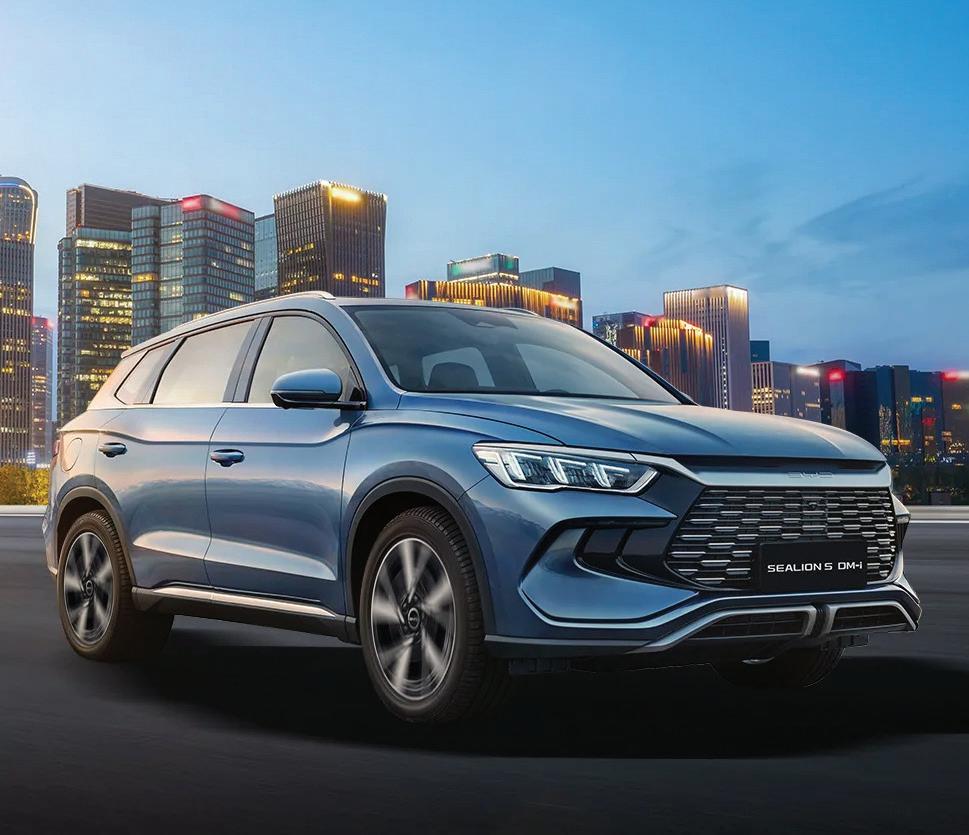
In celebration of Hyundai Motor Philippines’ third anniversary, the Korean auto brand officially announced the return of the KONA nameplate in the country. The subcompact crossover returns with a 1.6-liter hybrid system mated to a 6-speed Dual Clutch Transmission with 141 Ps of power and 144 Nm of torque. This is paired with Smart Regenerative Braking and e-Motion Drive features.
While the KONA retains its reputable character in supporting the active lifestyle of consumers, its all-generation comes with new features and conveniences, promising an exciting experience for those who are looking for more meaningful drives as they pursue their daily grind.
Stepping inside the KONA, a contemporary cabin which follows a ‘living space’ design welcomes you with a driver-centric cockpit highlighted by a dual 12.3-inch panoramic instrument cluster and infotainment display. Wireless Apple CarPlay and Android Auto come standard in the KONA, as well as a wireless charging pad with a built-in cooling fan and Type-C USB ports.
The BYD Sealion 5 DM-i, a smart, electrified subcompact SUV engineered for everyday practicality and value. Designed for first-time buyers and urban professionals, this new addition to BYD’s Super DM-i lineup delivers reliable performance, long-range efficiency, and a full suite of modern technology.
The Sealion 5 DM-i is powered by BYD’s Super DM-i hybrid system, pairing a 12.96 kWh Blade Battery with a fuel-efficient internal combustion engine. This results in an electric-first driving experience that delivers a combined range of over 1,000 kilometers and an electric-only range of up to 71 kilometers.
It supports up to 3.3 kW AC charging and features Vehicle-to-Load (V2L) functionality, allowing it to power external devices, ideal for outdoor use or emergency situations.
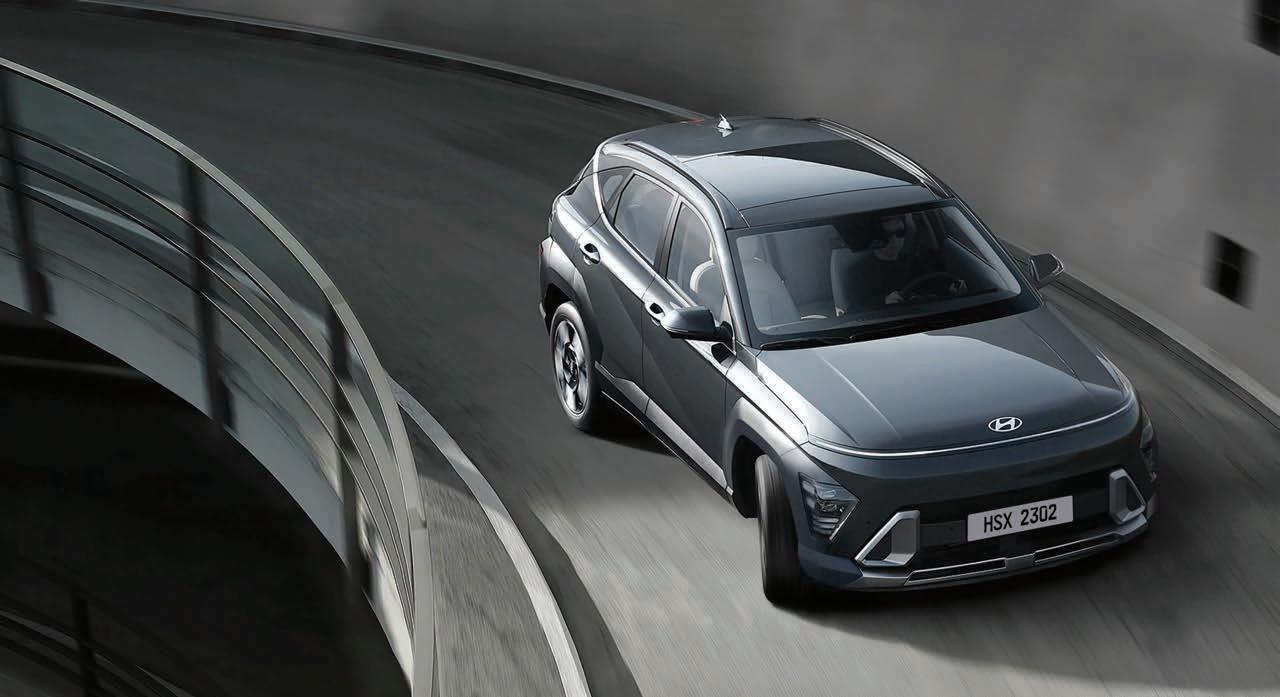

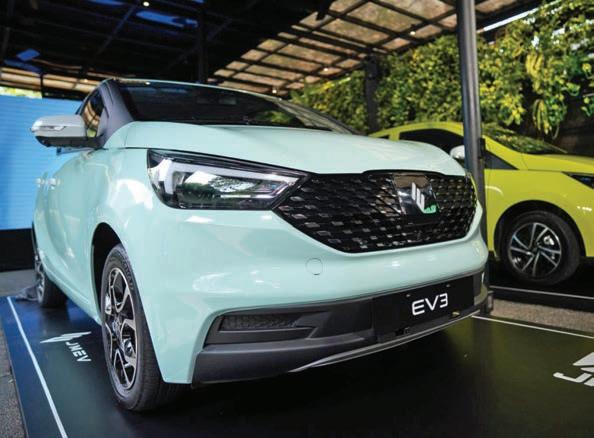
The EV2 is a sleek compact sedan that offers spacious seating for enhanced comfort. It features a full glass tailgate with a wide opening angle to improve rear visibility. Equipped with 14-inch aluminum alloy blade wheels, a 9-inch central touchscreen, and a high-strength body reinforced with front anti-collision beams, the EV2 also comes standard with essential safety features including ABS with EBD, an automatic locking system, hill start assist, and a tire pressure monitoring system. The EV2 offers a driving range of up to 201 kilometers.
The EV3 builds on this with added premium features such as dynamic lighting on the front grille, a 10.1-inch HD touchscreen, a wider body for greater passenger comfort, and keyless start entry. Safety is elevated with a 360-degree camera system, ABS with EBD, seat belt reminders, ISOFIX child seat anchors, hill start assist, TPMS, and a high-strength body reinforced with front anti-collision beams made from 1500 MPa thermal-formed steel. Also, it can offer driving range of up to 330 kilometers.

Lynk & Co officially launched the special edition variant of the 06, the 06 Origin SE. The special model pays tribute to the brand’s rich Swedish lineage and a nod to its identity as a Special Edition model that features specs from the higher-tier Hyper Halo variant.
Powering the Lynk & Co 06 Origin SE is a finely-tuned, Inline-four cylinder 1.5-liter turbocharged engine capable of producing 181 PS and 290 Nm of torque.
The 06 Origin SE’s exterior features Aurora Borealis-inspired LED daytime running lights and LED Energy Cube tail lights that accentuate its stylish profile, while 18-inch alloy wheels complement the SUV’s sporty character.
Inside, the 06 Origin SE boasts a modern and comfortable interior. The 10.25 HD Instrument Cluster and 12.3 inch Color Touch Screen Display provide intuitive controls and access to a range of features. The dynamic audio system delivers clear and immersive audio, while integrated leather style semi bucket seats offer excellent support and comfort.


Mitsubishi Motors Philippines Corporation officially launched the latest iteration of the Mitsubishi Mirage G4. Being one of the brand’s key models, the latest Mirage G4 features updates such as exterior enhancements, new LED tail lights and new LED headlights that are exclusive to the GLX CVT and GLS CVT variants. It also comes with a new machine finished two-tone alloy wheel design.
Safety has also been improved to the subcompact Mitsubishi sedan as Hill Start Assist (HSA) and Active Stability Control (ASC) are now standard across all Mirage G4 variants. Overall ease of use during daily drives has been improved with updates like Apple CarPlay and Android Auto connectivity,
Despite numerous updates, the Mirage G4 is still powered by its trusted 1.2-liter MIVEC engine that is paired with either a CVT transmission system or a manual gear box.


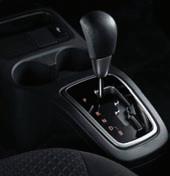
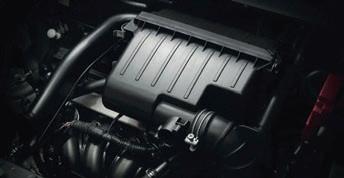
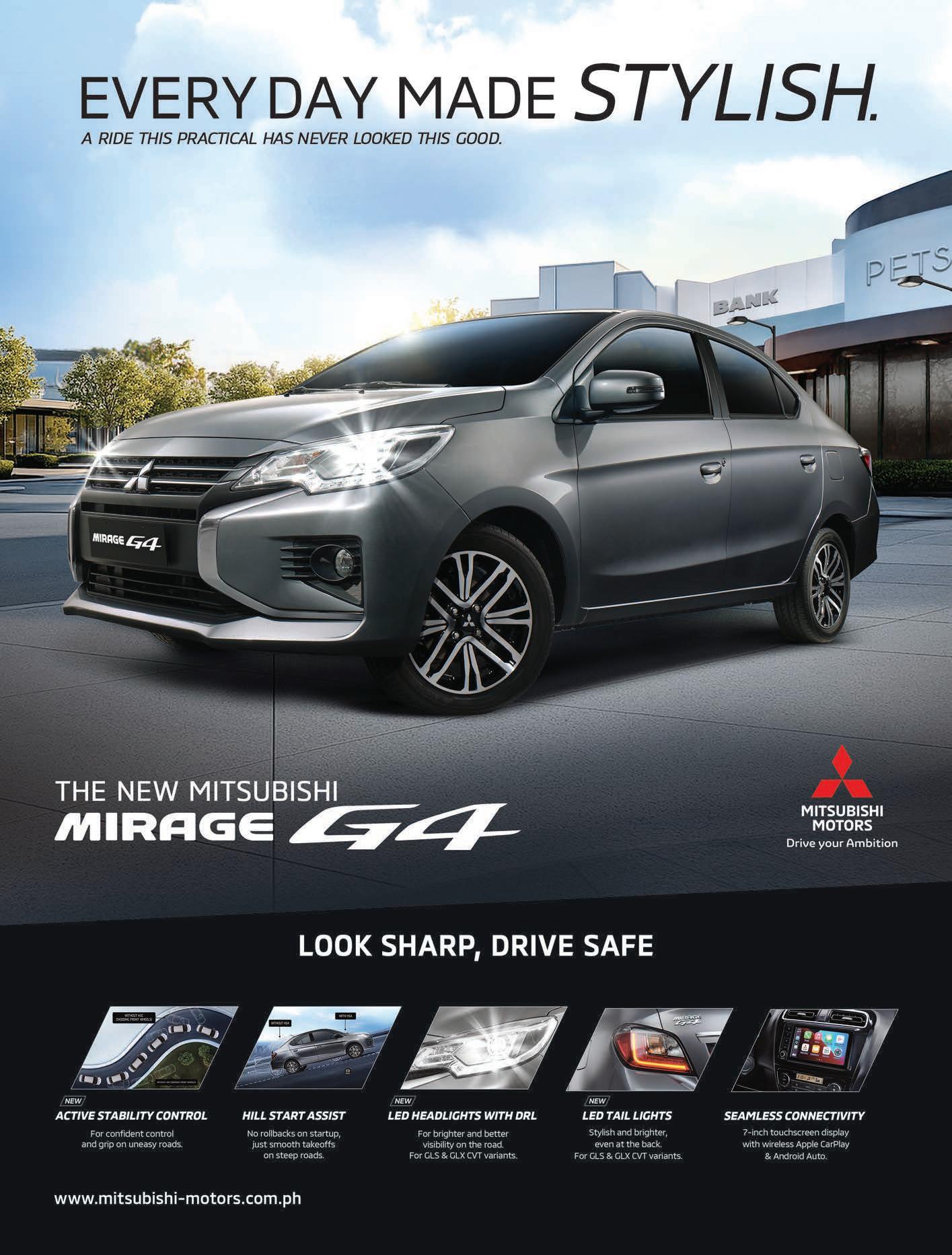
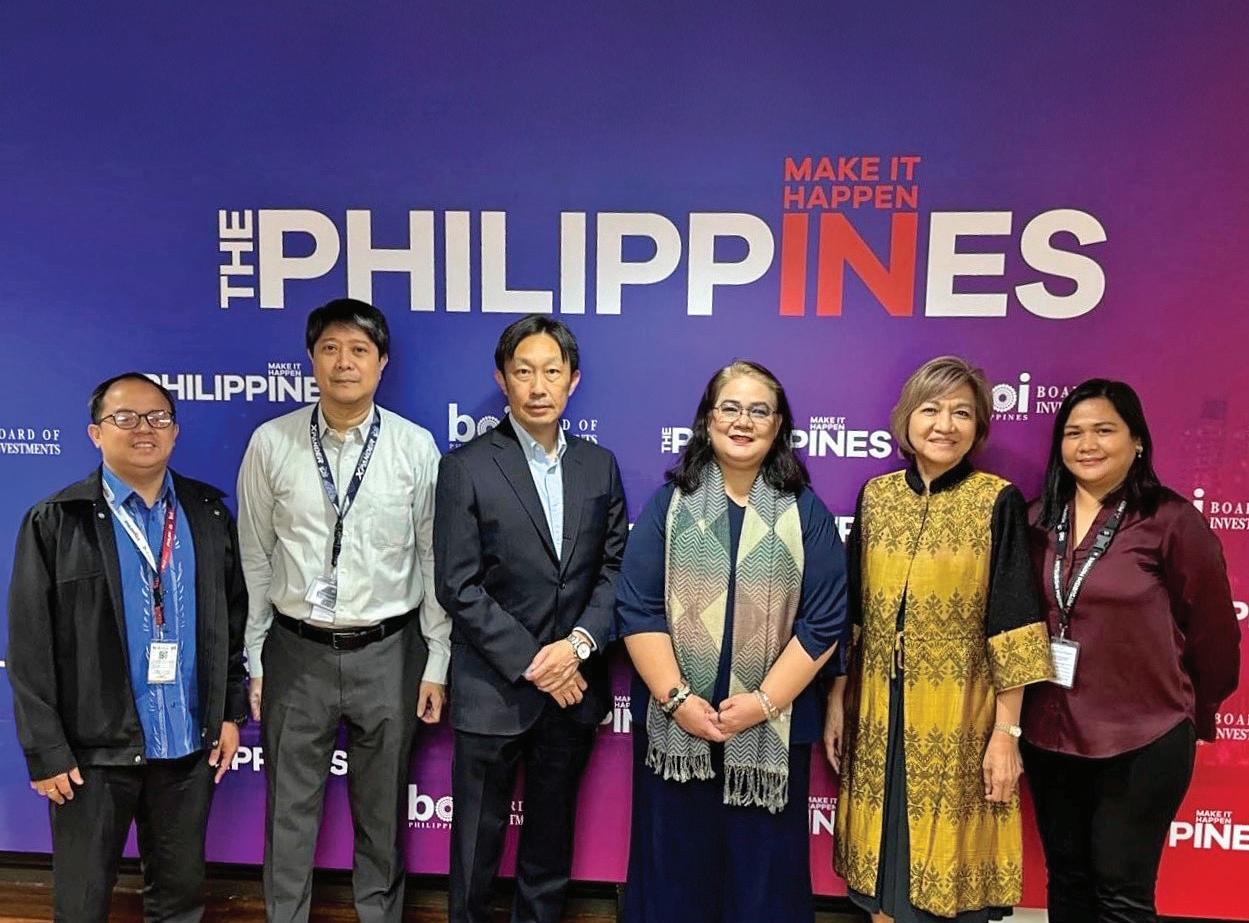
Mitsubishi Motors Philippines Corporation (MMPC) reinforced its commitment to the Philippine economy during a strategic meeting with the Philippine Board of Investments (BOI), led by Executive Director Corazon Halili-Dichosa at the agency’s Makati office.
The meeting underscored MMPC’s intent to remain one of the leading companies in the country’s rapidly expanding automotive sector. As one of the most active investors
in local automobile manufacturing, MMPC has poured more than PhP11.6 billion into its local production and operations over the past 10 years. The company is also set to invest an additional PhP7 billion over the next five years, demonstrating its strong outlook on the country’s economic resilience and growth potential. The company expressed confidence in government-led initiatives to drive industry growth, highlighting its role
ensuring the Philippines remains a major contributor to Mitsubishi Motors’ ASEAN performance and global presence.
The BOI earlier stated that such programs are designed to bolster the country’s investment climate through strategic alignment of
incentives, streamlined regulatory procedures, and broader support mechanisms for highimpact and innovationdriven industries.
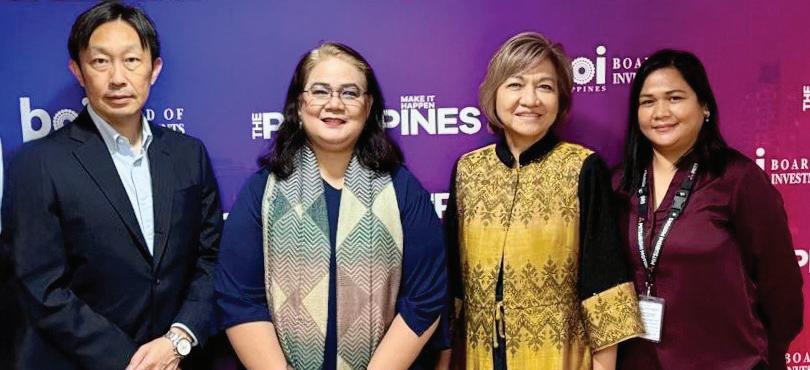
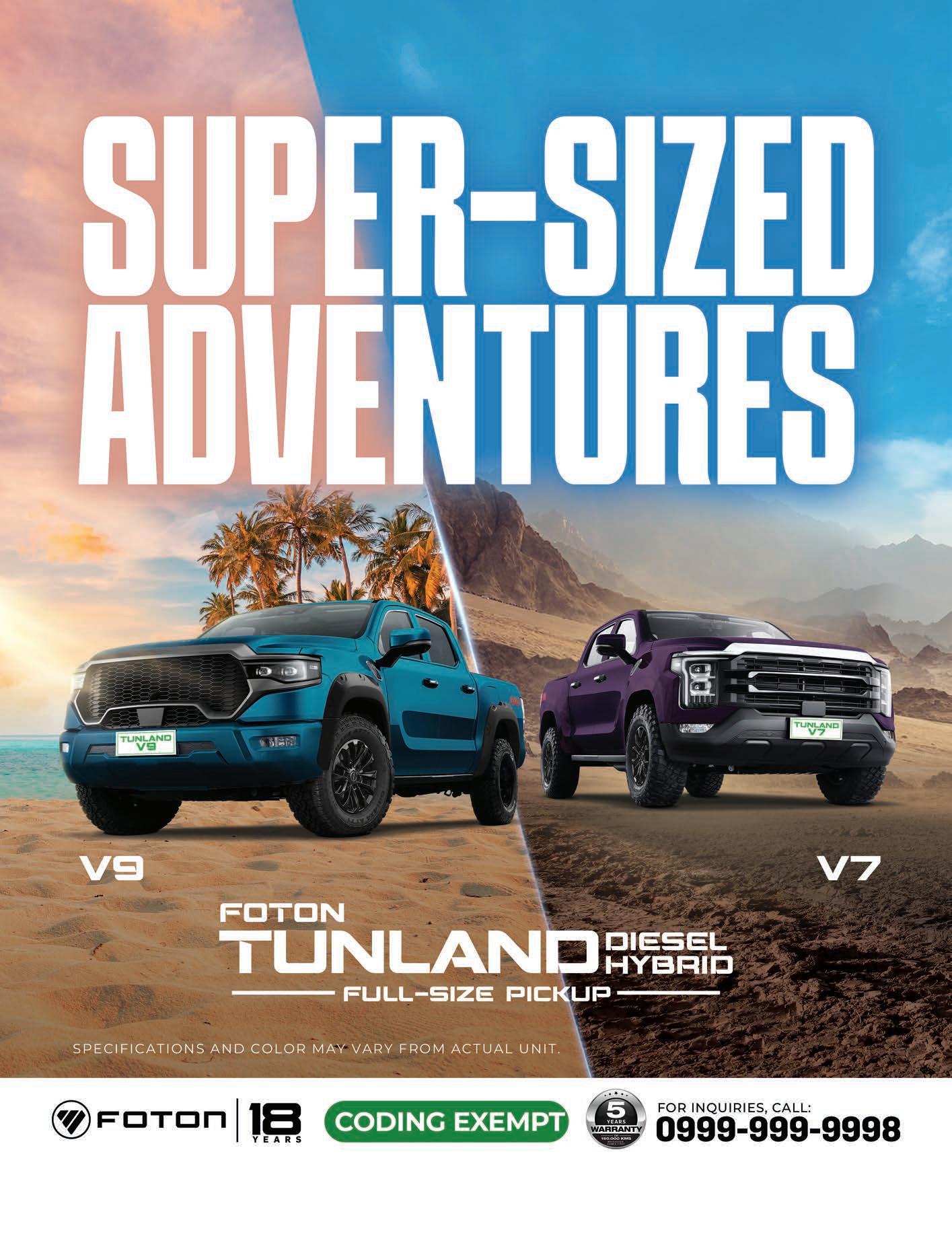
Honda Cars Philippines, Inc. (HCPI), Honda Philippines, Inc. (HPI), and Honda Safety Driving Center (HSDC) are staying committed to road safety awareness. Last June 16, 2025, Honda invited government representatives, media friends, and customers to the Honda Safety Driving Center for its One Honda Road Safety event to reiterate road safety practices and its advanced driver assist system technology.
The day was split into an insightful morning program and practical safety demonstrations in the afternoon. The road safety awareness seminar in the morning tackled topics on safe driving and riding behavior, hazard prediction, tips on preventive maintenance and common vehicle emergencies, and vehicle safety technology.
To put these lessons into practice, demonstrations took place in the afternoon through test drives and rides. Test drives for models equipped with Honda SENSING, Honda’s advanced driver assist system, were available at the venue. HCPI also offered test rides to experience the Collision Mitigation Braking System (CMBS) which helps warn, mitigate collision, or lessen the severity of frontal collision. Participants got to hop on a Honda HR-V as authorized personnel drove it towards a car dummy posing as a reallife obstacle and see how the car alerts the driver
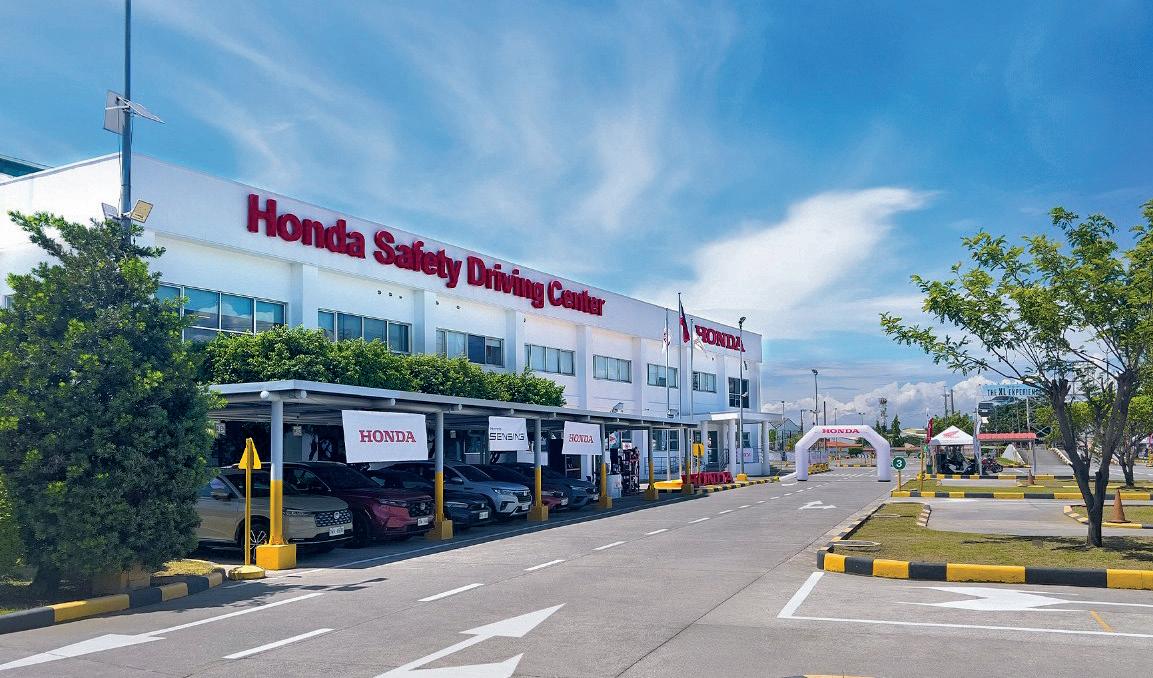
and applies brakes to avoid collision.
Other Honda SENSING features include:
• Adaptive Cruise Control (ACC) with Low Speed Follow (LSF)*
*LSF is available on Honda Civic, HR-V, CR-V, and Civic Type R models equipped with Honda SENSING
• Lane Keeping Assist System (LKAS)
• Road Departure Mitigation (RDM) with Lane Departure Warning (LDW)
• Auto High Beam (AHB)*
*Included with the All-New CR-V RS e:HEV CVT variant is the Adaptive Driving Beam (ADB), an intelligent LED headlight that helps enhance visibility as well as adjusting the height of the light beam to avoid
dazzling the car in front and pedestrians.
• Lead Car Departure Notification (LCDN)
On the other hand, HPI’s latest motorcycle lineup comes with features designed to keep riders safe. The Anti-Lock Braking System (ABS), and Combined Braking System (CBS) technology helps provide smooth, controlled braking and improves overall braking efficiency. RoadSync, on the other hand offers convenience and easy access to calling, messaging, navigation, and music while riding which is now present with The All- New PCX160 model.
Other safety features on Honda motorcycles include:
• Emergency Stop Signal (ESS) a safety
feature that flashes hazard lights when the bike brakes suddenly, warning drivers behind.
• Automatic Headlights On (AHO) Automatically turns on the headlights when the engine starts, helping keep the rider visible anytime.
Amid the numerous vehicular accidents in the Philippines lately, Honda conducted this event to reaffirm its commitment to its 2050 safety goal of a collision free society, having no road accidents involve any Honda vehicle, and its 50% halfway goal by 2030. Achieving this goal would mean a great deal to Honda as it promotes the safety of everyone sharing the road, not just drivers. Honda would like to remind
everyone to always stay safe and actively educate themselves on road safety awareness and education to work towards this goal together.
For more information on Honda’s safety advocacy, visit https:// global.honda/en/safety/ policy/. Learn more about Honda SENSING at https://www.hondaphil. com/technology/hondasensing and view Honda SENSING-equipped models at https://www. hondaphil.com/virtualhonda. Latest models and dealerships of HPI may be found at https://www. hondaph.com/. Lastly, explore HSDC’s driver learning and training services for both cars and motorcycles at https:// www.hondaph.com/ training-courses.
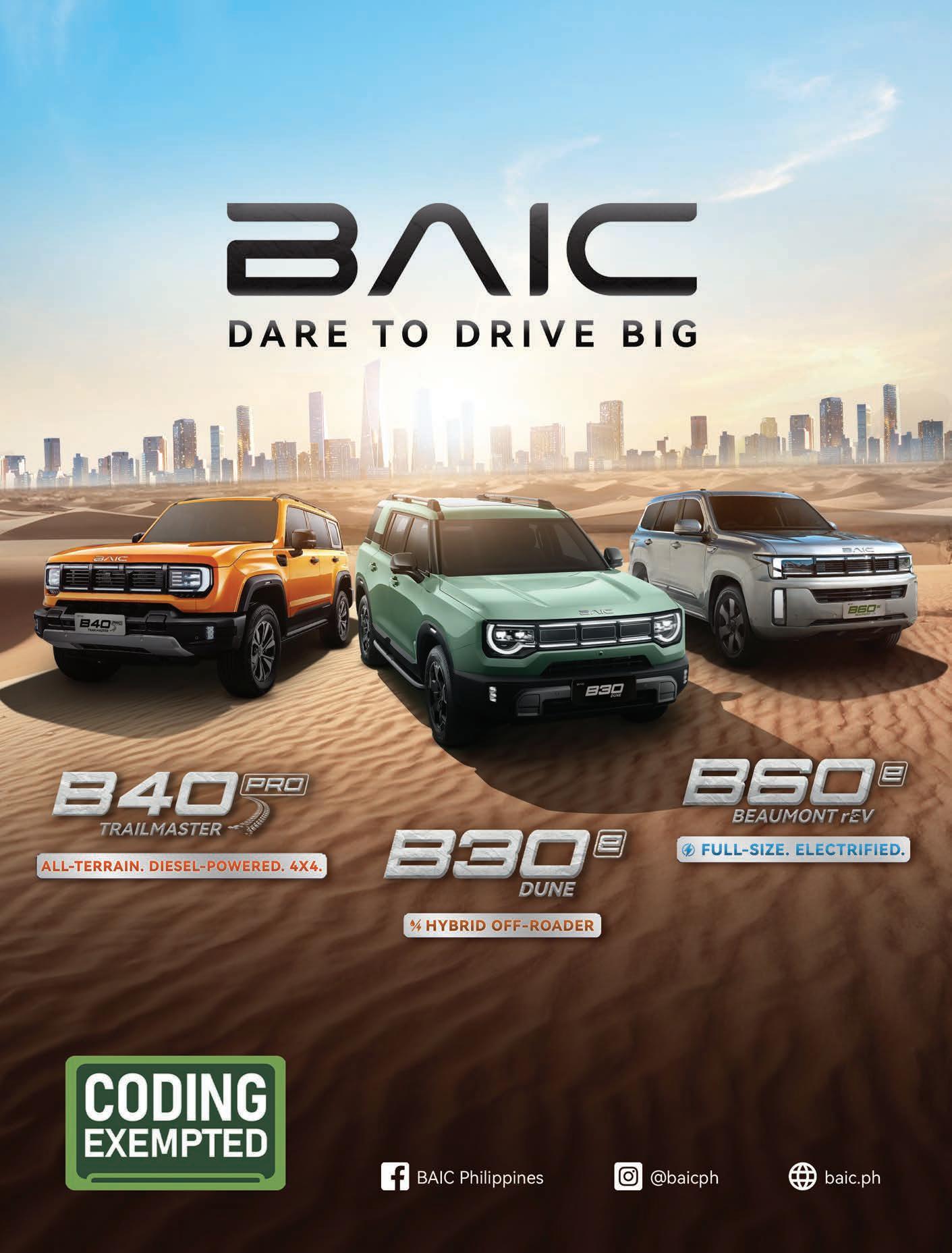

There’s a playful irony behind the name of Small Laude, where her seemingly diminutive moniker is in stark contrast to her expansive social media presence and her unabashed, outspoken nature. The allegory continues as Small Laude enters her driving era in a big way with the Lynk & Co 06—a crossover SUV that delivers a stylish and sophisticated experience befitting of Small Laude’s largerthan-life character.
Small Laude has become a standout figure in the Philippine social media landscape as a content creator who balances elegance, humor, and authenticity, delivered with her signature candid
storytelling. She’s relatable and brings effortless glamor in everything she does— just like the Lynk & Co 06, which features a stunning exterior design, a premium cabin, and Swedish design and engineering from top to bottom.
“This partnership with Lynk & Co feels so aligned with who I am and what I love,”
Small Laude shares.
“When I first saw the 06 in Pastel Lilac, I was like, ‘Okay, this is me.’
It’s chic, spacious, and super techie… but not intimidating! Which is why I got my own unit! And after spending more time with it, I love the comfortable seats and all these smart features that make life easier. As someone who gets really busy with
managing my business, while doing vlogs on the side, it’s my happy little bubble on wheels.”
“Distinctly Dynamic” in both form and function, the Lynk & Co 06 pairs bold design with top notch driving and safety features. It is equipped with a 1.5L 4-cylinder turbo engine paired with a dualclutch transmission that delivers 181Ps and 290Nm of torque, balancing performance and efficiency. Inside, the car’s 12.3” HD touchscreen infotainment system is ergonomically designed for easy operation, while wireless charging ditches the cable chaos.
Safety also takes the front seat with features like a 360° panoramic camera
with 180° transparent chassis view; blind spot detection, adaptive cruise control, lane keep assist, and lane departure warning, among the 06’s standout ADAS features.
And now, the 06 just became more accessible with a new 06 Origin SE, which is now available for as low as Php 1,099,000. The same upscale distinction and premium quality now comes at a more attainable price point, making this Swedishdesigned ride more accessible to the Filipino market.
“When Small Laude shows up, there’s nothing ‘small’ about it. She’s unapologetically herself; she’s sophisticated yet playful, accessible
yet aspirational, and that’s exactly the kind of energy we generate at Lynk & Co,” says Lynk & Co Philippines Brand Head Franz Decloedt.
“With Small Laude behind the wheel of the 06 SUV, we are primed to enter an exciting new chapter for Lynk & Co Philippines as we continue to connect and collaborate with more Filipinos.”
Decloedt continues:
“We invite everyone to get linked and connected with us. Watch the Lynk & Co space closely, because we’re cooking up even more things to get you excited. More unexpected moments are coming, and with Small Laude stepping into the Lynk & Co world, the road just got a lot more fabulous.”

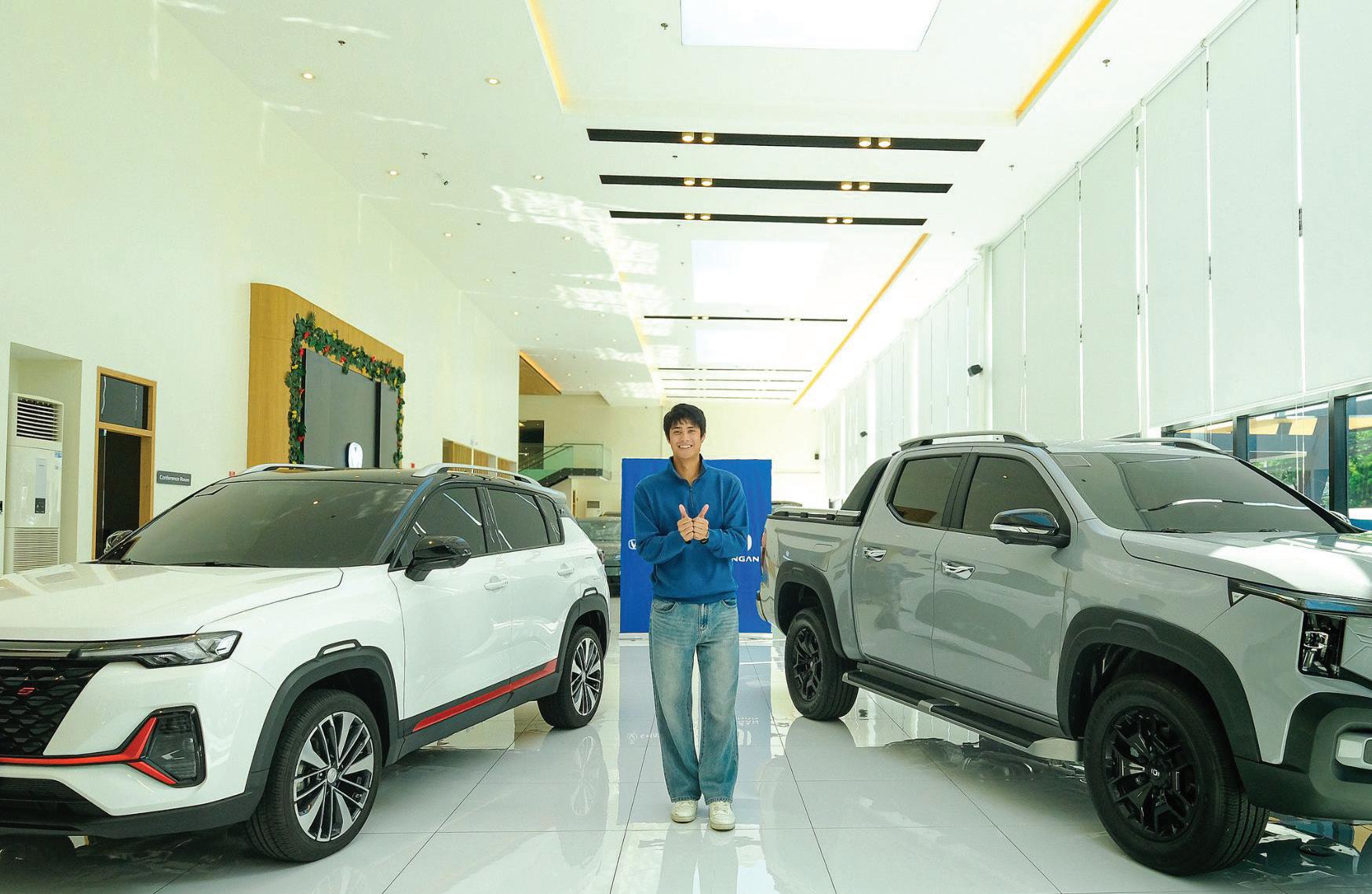
Inchcape Philippines, the exclusive distributor of Changan in the country, proudly introduces Donny Pangilinan as Changan’s first official brand ambassador.
Widely recognized as one of the most influential and dynamic personalities of his generation, Donny Pangilinan embodies the qualities that reflect Changan’s core values: world-class excellence, innovation, and thoughtful engagement. As an accomplished actor, entrepreneur, and advocate of sustainable living, Donny mirrors the spirit of a modern Filipino— progressive, discerning, and driven.
The partnership was formally launched at the 20th Manila International Motor Show in April 2025, signaling a new era of elevated brand visibility for Changan. Donny’s multi-platform influence and trusted public image are seen as vital to strengthening the brand’s connection with Filipino consumers and expanding its national footprint.
“Donny is a natural fit for Changan. His forward-
thinking mindset, strong work ethic, and aspirational lifestyle align well with our commitment to delivering future-ready mobility solutions, with people and partnerships at our core,” said Alex Yap, Inchcape Philippines Country Head. “We are confident that this partnership will enable more Filipinos to experience the smart innovation and enduring quality that define the Changan brand.”
Backed by over 160 years of global industrial expertise, including 65 years in automotive manufacturing, Changan continues to redefine what it means to drive in the modern world— balancing performance, sustainability, and cuttingedge design.
As part of the collaboration, Donny recently received his Changan Nevo Hunter K50 4×4 and Changan CS35, showcasing his personal support for both electric and internal combustion mobility. His ownership experience is set to play a central role in communicating Changan’s commitment
to sustainable, versatile, and customer-first transportation.
“I am honored to be chosen as Changan Philippines’ first brand ambassador. I believe in their vision of transforming mobility through innovation and sustainability,” said Donny Pangilinan. “I’m beginning my EV journey with the Changan Nevo Hunter K50 4×4 as my first electric car, and I’m excited to share my journey with Changan
and help bring its worldclass offerings closer to more Filipinos.”
This landmark partnership reinforces Changan’s promise to deliver thoughtful, innovative mobility built for the future—today.
To date, Changan Philippines offers a wide array of ten (10) featurepacked and competitively priced vehicles. Under the internal combustion engine options, the brand offers the Alsvin, CS15, CS35 Plus,
CS55 Plus, X7, Uni-T, and Uni-K.
On top of these models, under its newly launched electric vehicle lineup, the Nevo Q05, Nevo Hunter K50, and the Lumin are available. The Nevo A05 shall also be officially launched in the country in the coming months.
The Changan models are available with the following suggested retail prices and exciting cash discounts valid until June 30, 2025:


GAC Motor Philippines, under Astara, has achieved another milestone with over 3,500 GS3 Emzoom units now on Philippine roads. This accomplishment comes just months after the brand celebrated its 3,000th Emzoom sale, underscoring the continued upward momentum of the compact crossover.
The GS3 Emzoom’s rising popularity is attributed to its modern styling, comprehensive feature set, and strong value proposition—qualities that continue to attract Filipino car buyers. GAC Motor Philippines credits the consistent growth to the increasing trust and confidence of both customers and dealership partners.
Among the latest customers is Kean Fortes, a Senior Participant Coordinator, who purchased the 3,500th Emzoom unit. “I chose the GAC Emzoom mainly because of its great price. On top of that, its features—inside and out— are top-notch and hightech. Compared to other crossovers in its segment, it really stands out,” he said.
Fortes also cited his experience with the dealership as a key factor in his purchase decision. “I went with GAC Sumulong because it’s close to where I live. I also read reviews online and saw that GAC really offers great aftersales service and takes care of its clients. That gave me confidence.”
As the Emzoom

community grows, stories like Fortes’s continue to affirm the model’s broader appeal as a smart and reliable choice for daily
driving. GAC Motor remains committed to offering accessible, high-quality vehicles supported by a dependable dealer network
and customer-first service. For more information or to test-drive the Emzoom, visit any GAC Motor dealership nationwide.
MEET VOLVO’S FIRST
For Volvo owners, it’s not about driving a great car. It’s about making a statement.
HARI, the official distributor of Volvo in the Philippines, unveils Volvo’s First, a compelling video series that goes beyond engineering excellence to throw the spotlight on the essence of Volvo ownership–real people living with passion, purpose, and authenticity.
More than just a showcase of worldrenowned automotive safety, Volvo’s First is a celebration of individuals whose journeys are shaped by family, tradition, and ambition.
Journeys marked by Volvo’s unwavering commitment to protecting lives.
From a retiree savoring the freedom of her dream car to an entrepreneur honoring his father’s legacy; from a passionate gearhead preserving a storied classic to a filmmaker finding inspiration on the road. Every story is distinct, yet all share a singular truth, which is a deep connection to the drive that defines them.
“Volvo owners are a class all their own. They understand what it means to
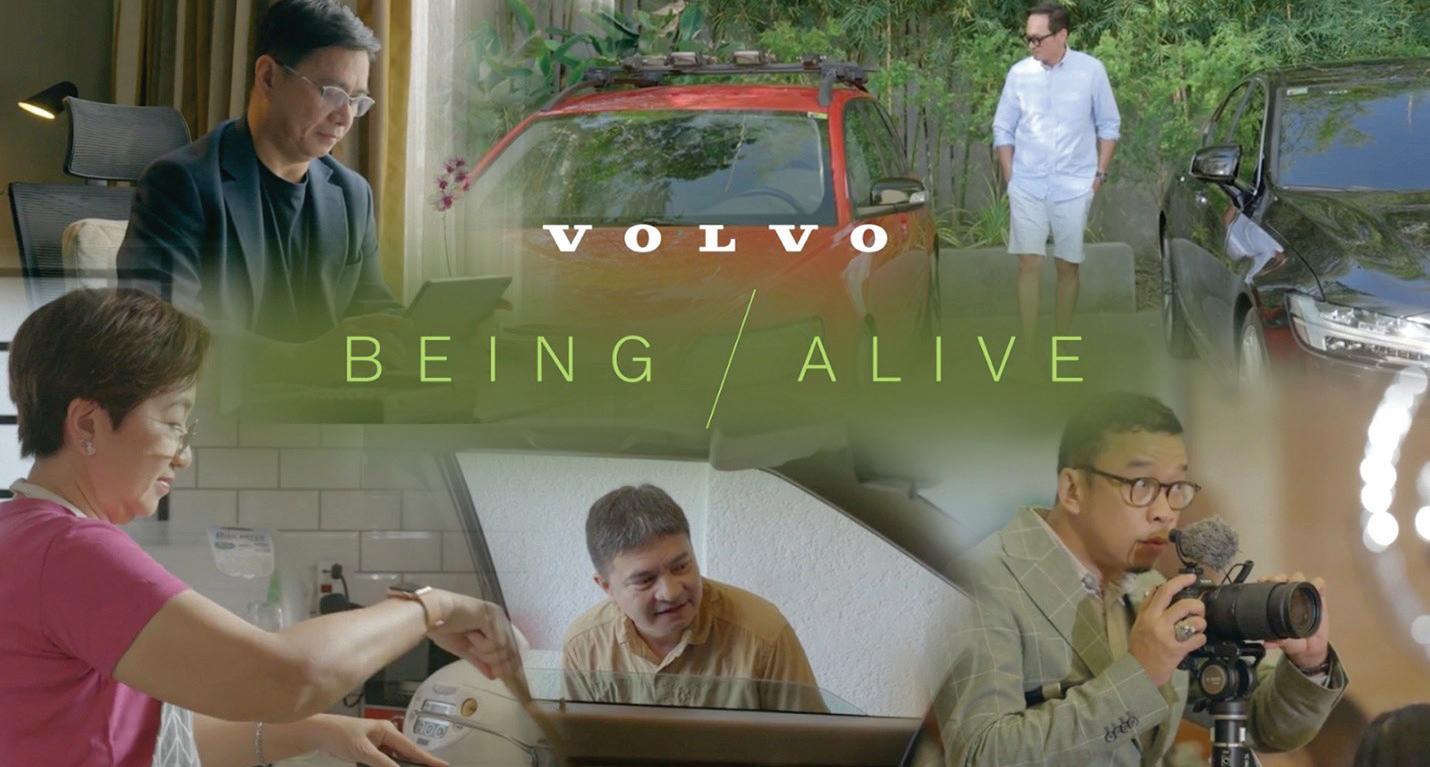
be truly alive. They live with intent, valuing authenticity over fleeting trends. For them, safety is not just a priority but a conscious choice that fuels their confidence, freedom, and joy every single day,” shares HARI Vice Chair, President, and CEO Maria Fe PerezAgudo.
The series is Volvo Philippines’ next major salvo under the Being Alive
campaign.
Being Alive is a call to embrace shared responsibility for safer roads. Whether behind the wheel, enforcing regulations, or simply looking out for one another, every individual plays a role in shaping a culture where safety is not an afterthought, but a way of life.
Volvo’s First brings the global brand’s safety
philosophy closer to home through heartfelt, proudly Filipino narratives. “These stories resonate because they reflect the way we live— where the protection of what matters most is seamlessly woven into the way we move through life,” Ms. Agudo adds.
Viewers will meet believers whose stories reveal more than their love for a great automobile. It is
about people whose journeys embody confidence, smart performance, and a deeprooted belief in a car that protects lives so that they can live theirs to the fullest. Watch Volvo’s First on Volvo Philippines’ social media channels. For more information on Volvo’s road safety advocacy and upcoming events, visit the Volvo Philippines website or follow their official channels.
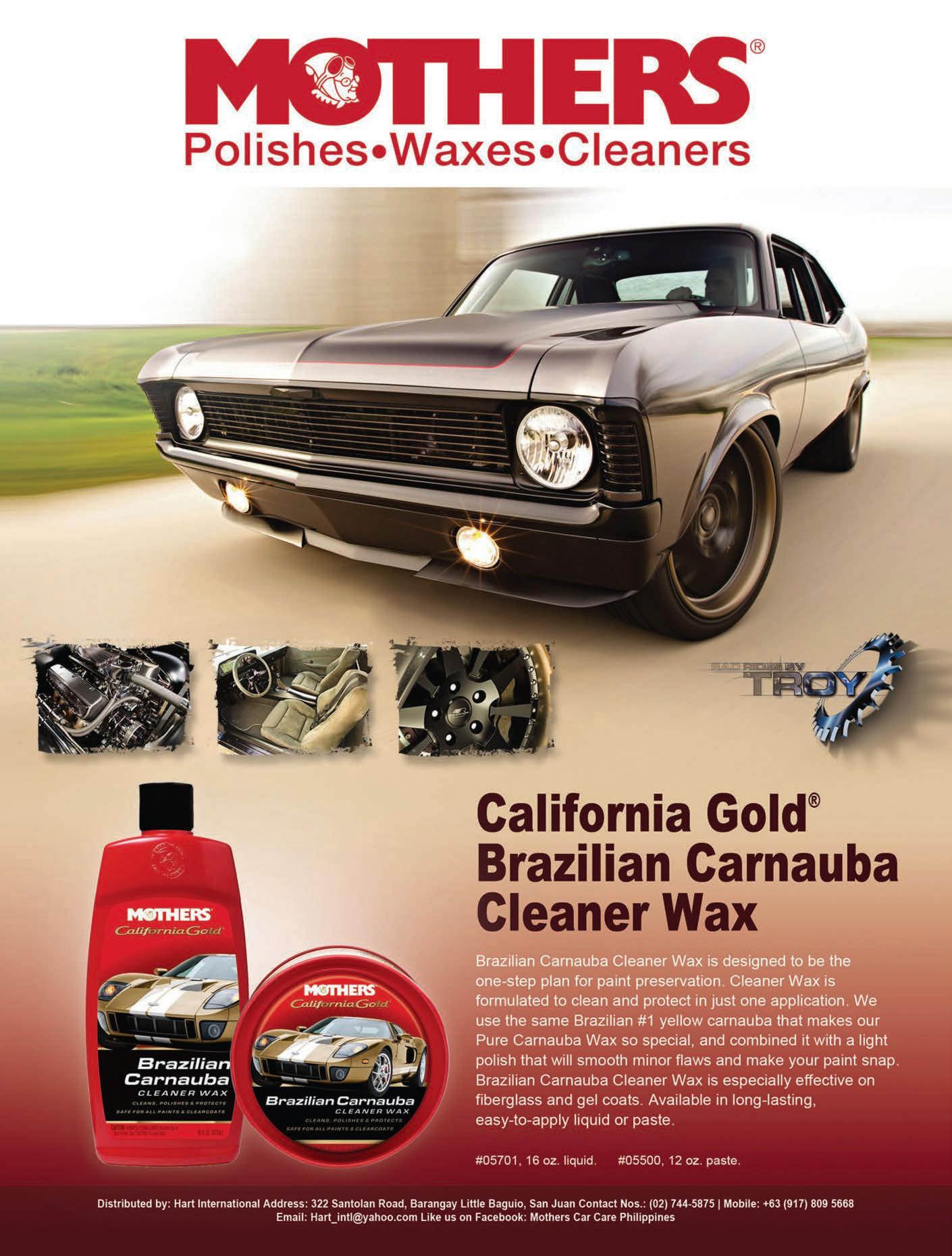
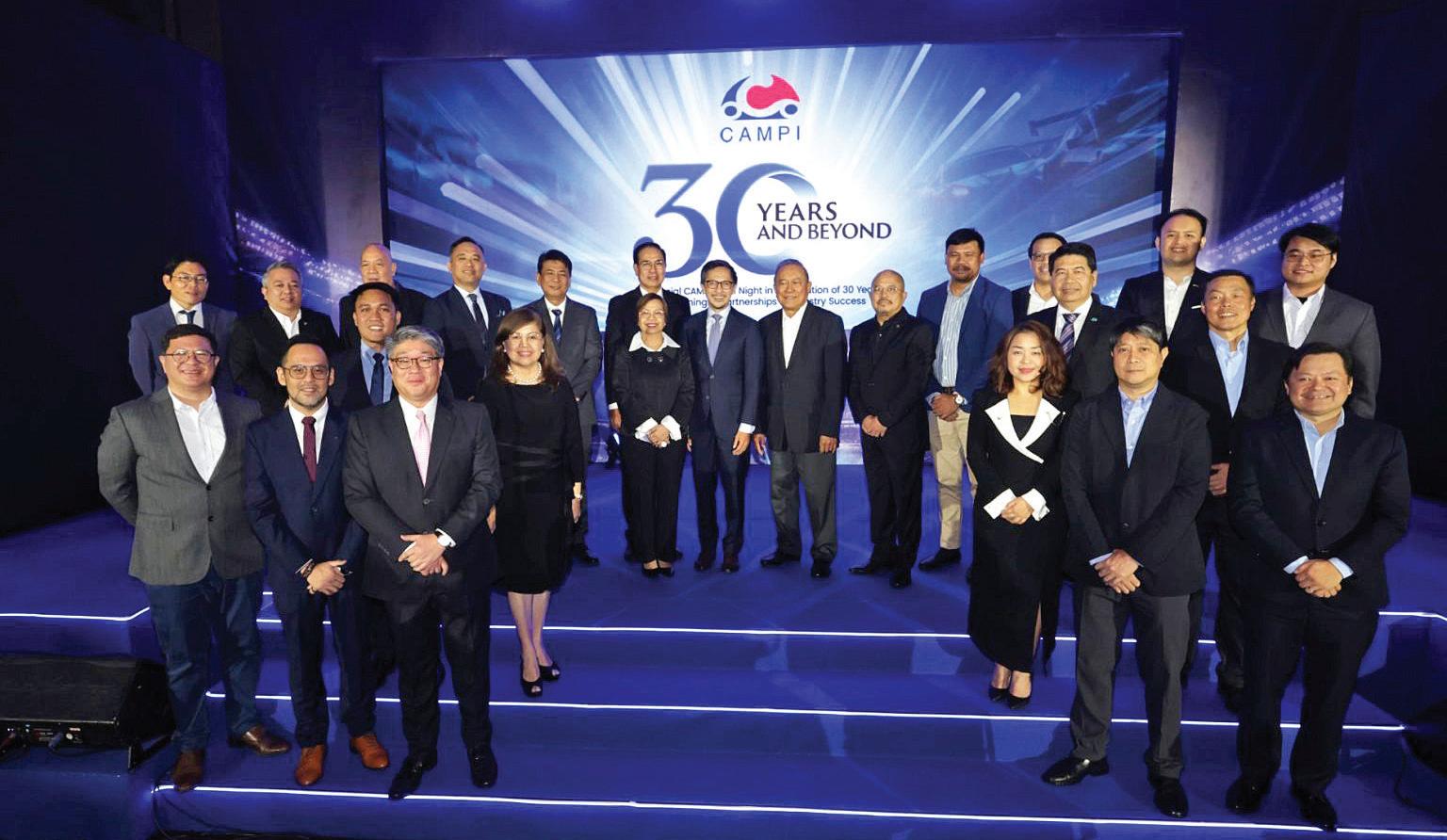
The Chamber of Automotive Manufacturers of the Philippines, Inc. (CAMPI), the country’s foremost automotive industry organization, commemorated its 30th founding anniversary with a gala event at the Grand Hyatt Manila in Taguig City. Carrying the theme “30 Years and Beyond: Together, Driving the Future of Mobility,” the celebration brought together key government officials, industry leaders, and representatives from CAMPI’s 28 member companies.
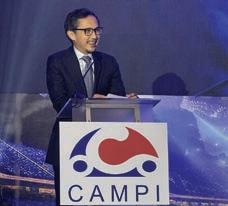
Among the distinguished guests was Department of Transportation (DoTr) Secretary Vicencio “Vince” Dizon, who reaffirmed the administration’s commitment to publicprivate collaboration in
shaping the Philippines’ transportation and mobility landscape.
“Since its establishment in 1995, CAMPI has played a critical role in enabling domestic automotive production and supporting the broader motorization of the country,” said CAMPI Chairman Hon. Jose Chaves Alvarez. “Our achievements are a product of close cooperation between government bodies and industry stakeholders, which have enabled both economic contribution and improved quality of life for Filipinos.”
Chairman Alvarez also emphasized the organization’s continued commitment to innovation:
“As we mark this milestone, we reaffirm our role in
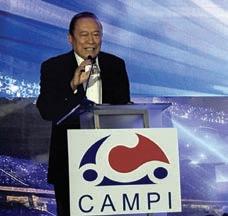
driving the transformation of mobility. Today is not just a celebration of our legacy, but also a declaration of our readiness to build the future—together, as one united CAMPI.”
Looking to the future, CAMPI unveiled a renewed strategy anchored on four foundational pillars designed to guide the industry in a rapidly evolving environment:
Technology and Innovation
– Promoting the adoption of electric vehicles, autonomous systems, and digital platforms to deliver smarter, more efficient mobility solutions.
Sustainability – Advocating for carbon neutrality through electrification, fuel diversification, and energyefficient practices that address climate challenges.
Road Safety – Advancing industry-wide safety standards and international alignment to enhance protection for all road users.
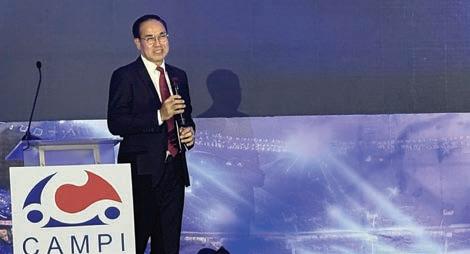
Industry Development
– Focusing on regional integration, workforce development, and positioning the Philippine automotive sector to compete globally.
“These pillars reflect our long-term direction as we strengthen the industry’s position amid global shifts,” said CAMPI President Atty. Rommel Gutierrez. “We remain steadfast in our commitment to a mobility ecosystem that is innovative, sustainable, safe, and globally competitive.”
Established on May 16, 1995, CAMPI has consistently
championed the growth and modernization of the Philippine automotive industry. Today, it comprises 28 member companies. Its regular members include major manufacturers such as Toyota Motor Philippines, Mitsubishi Motors Philippines, Honda Cars Philippines, Isuzu Philippines, Nissan Philippines, and Foton Motor Philippines.
The association also includes a broad range of associate members, such as Ford Group Philippines, Hyundai Motor Philippines, Suzuki Philippines, Tesla Motors Philippines, Bermaz Auto Philippines, SMC Asia Car Distributor Corp., and VinFast Auto Philippines, among others.
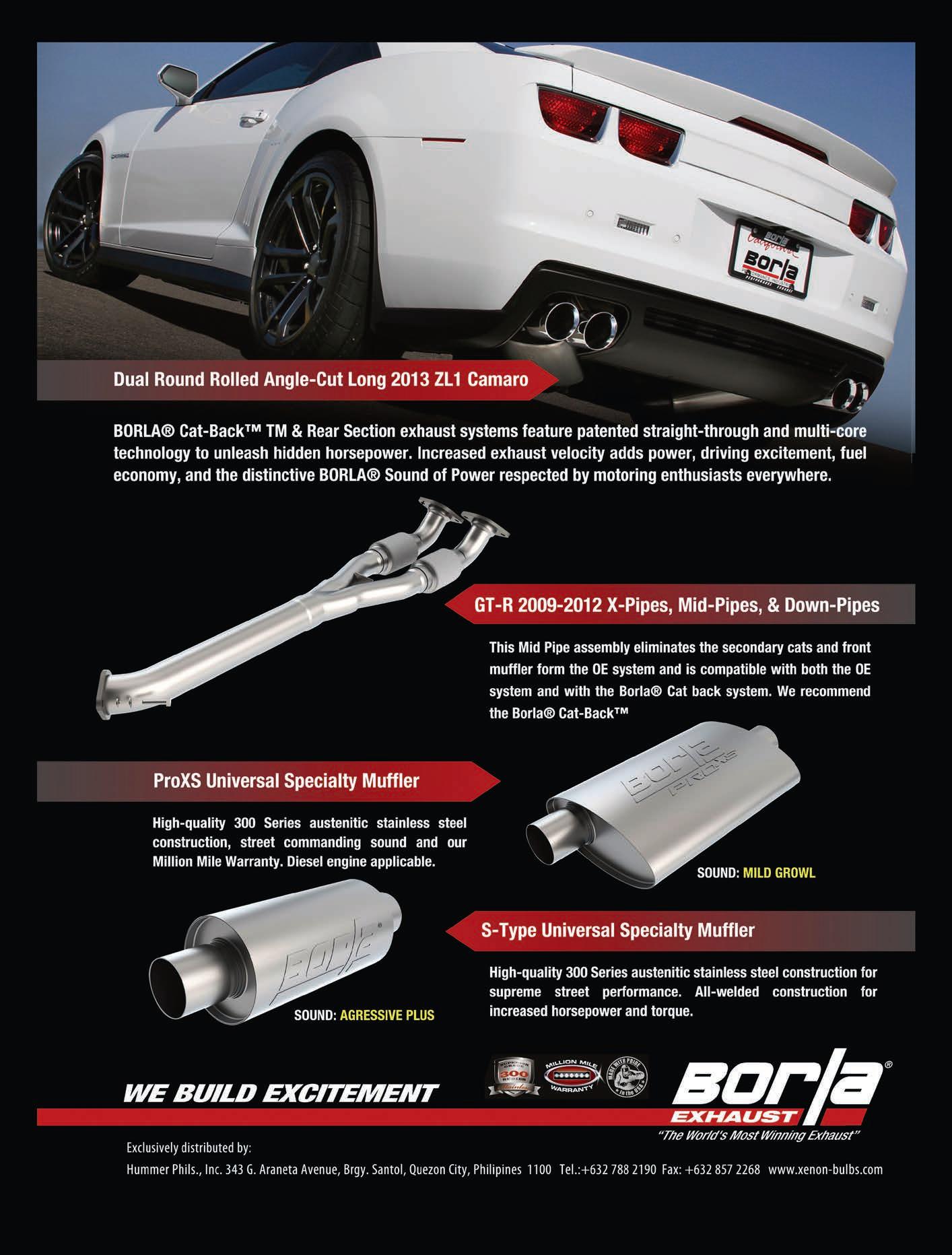
Hyundai Motor Philippines, Inc. (HMPH) recently concluded a ceremonial signing marking a partnership with Shell Pilipinas Corporation, who will be providing Fully Synthetic and SemiSynthetic Engine Oil line lubricants tailored for Hyundai vehicle models. These will be supplied across all certified Hyundai dealerships, ensuring top-quality service and customer safety.
Present at the ceremony were HMPH Executives, Mr. Jiho Son, President, Mr. Cecil Capacete, Managing Director, and Mr. Young Uk Ko, Coordinator for Aftersales and Parts. They were joined by Shell Lubricants Philippines Vice President Ms. Jackie Famorca, and National
Sales Manager Mr. Greg Moratin.
This partnership further solidifies the brand’s global vision, “Progress for Humanity”, by providing innovative mobility solutions to Filipinos, and giving customers the best possible Hyundai Experience on the road. More so, this allows HMPH to empower its dealerships to confidently offer products that embody the Hyundai brand’s promise of durability, efficiency, and peace of mind.
“Shell, a globally respected leader in advanced engine oil technology, brings unparalleled expertise to this venture, and we are proud to align with such a trusted and innovative partner.” said Mr. Jiho Son, HMPH President in his message. “The
exclusive availability of Fully Synthetic and SemiSynthetic Engine Oils ensures consistent access to high-quality, precisionengineered products specifically formulated for Hyundai engines that leads to prolonging the life of every Hyundai vehicle on
the road.”
Globally, Shell and Hyundai have a history of a longstanding partnership, supporting both brands’ commitment to transforming the car ownership experience for its customers—by making sustainable fuel
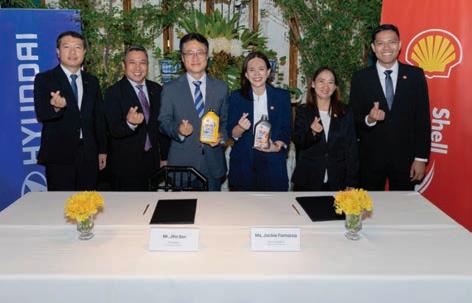
and oil options readily available for Hyundai owners. “Shell Lubricant’s goal is to ensure best-inclass Shell Helix products, customer service and supply chain capabilities, so HMPH can focus on what it does best—delivering exceptional vehicles and service to its customers. Together, Shell and HMPH will continue to drive forward—powered by innovation, performance, and partnership.” said Ms. Jackie Famorca, Vice President of Shell Lubricants Philippines, in her special message.
To learn more, visit Hyundai Philippines – Innovate Everyday. Stay updated with Hyundai through @ HyundaiMotorPhilippines on Facebook and Instagram.
In a major leap forward for sustainable urban transport in the Philippines, Grab Philippines has unveiled GrabTaxi Electric—the nation’s first fully electric, ondemand taxi fleet officially recognized by the Land Transportation Franchising and Regulatory Board (LTFRB).
This all-EV fleet, launched in partnership with local operator EV Taxi Corp, begins operations in key Metro Manila hubs including Makati, Taguig, Pasig, Mandaluyong, Paranaque, and Pasay. This rollout marks a significant regulatory and operational milestone for the Philippines, where traditional combustion engine vehicles still dominate the mobility landscape.
The launch builds upon Grab’s June 2024 pilot study with BYD Philippines, which demonstrated the operational and financial viability of electric vehicles for both fleet operators

and driver-partners. The findings affirmed a key insight: electrification is not just an environmental imperative; it is also a cost-effective and scalable model for urban mobility.
“This is not just about offering another ride option,” said Grab Philippines Country Head Ronald Roda. “It’s about fundamentally changing the DNA of urban transport in the
Philippines – one that aligns with our sustainability commitments, empowers Filipino commuters, and creates meaningful green livelihoods. Sustainability cannot be a distant ideal; it must be something you can book, ride, and feel today.”
GrabTaxi Electric is part of Grab’s broader eco-mobility strategy, which includes expanding EV adoption across its GrabCar fleet in regional
cities such as Davao and Cagayan De Oro within the year. This phased rollout will be supported by in-app sustainability features such as voluntary contributions for environmental conservation efforts for every Grab transaction, and deeper collaboration with government and private sector partners to accelerate EV ecosystem readiness nationwide.
Commuter advocates
have welcomed the launch. “Zero-emission transport is no longer a luxury –it’s a necessity,” said Ira Panganiban of the Coalition of Filipino Commuters. “GrabTaxi Electric shows us that sustainability can be embedded in everyday systems. We hope this sparks a cascading positive effect across the entire industry.”
Currently in beta, GrabTaxi Electric allows passengers to seamlessly book electric taxis within the Transport tab of the Grab app, alongside traditional Grab mobility services. Feedback from passengers and drivers during this phase will shape the future design, expansion, and service model of the offering.
As cities across the Philippines confront the twin challenges of climate change and urban congestion, Grab’s electric fleet initiative signals a bold vision: to future-proof transportation by making clean mobility mainstream.

Philippines has just expanded its ZS model lineup and HEV (Hybrid Electric Vehicle) roster with the all-new ZS Hybrid+. MG previewed the latest electrified crossover during the recently concluded 2025 Manila International Auto Show, where the public had the opportunity to scrutinize it up close and in person.
Now in its second generation, MG’s best-selling model presents itself in an entirely overhauled design inside and out. The new look is an absolute departure from its predecessor. The latest design is reminiscent of the MG 3, particularly in its front grille, signaling a new design language across the board.

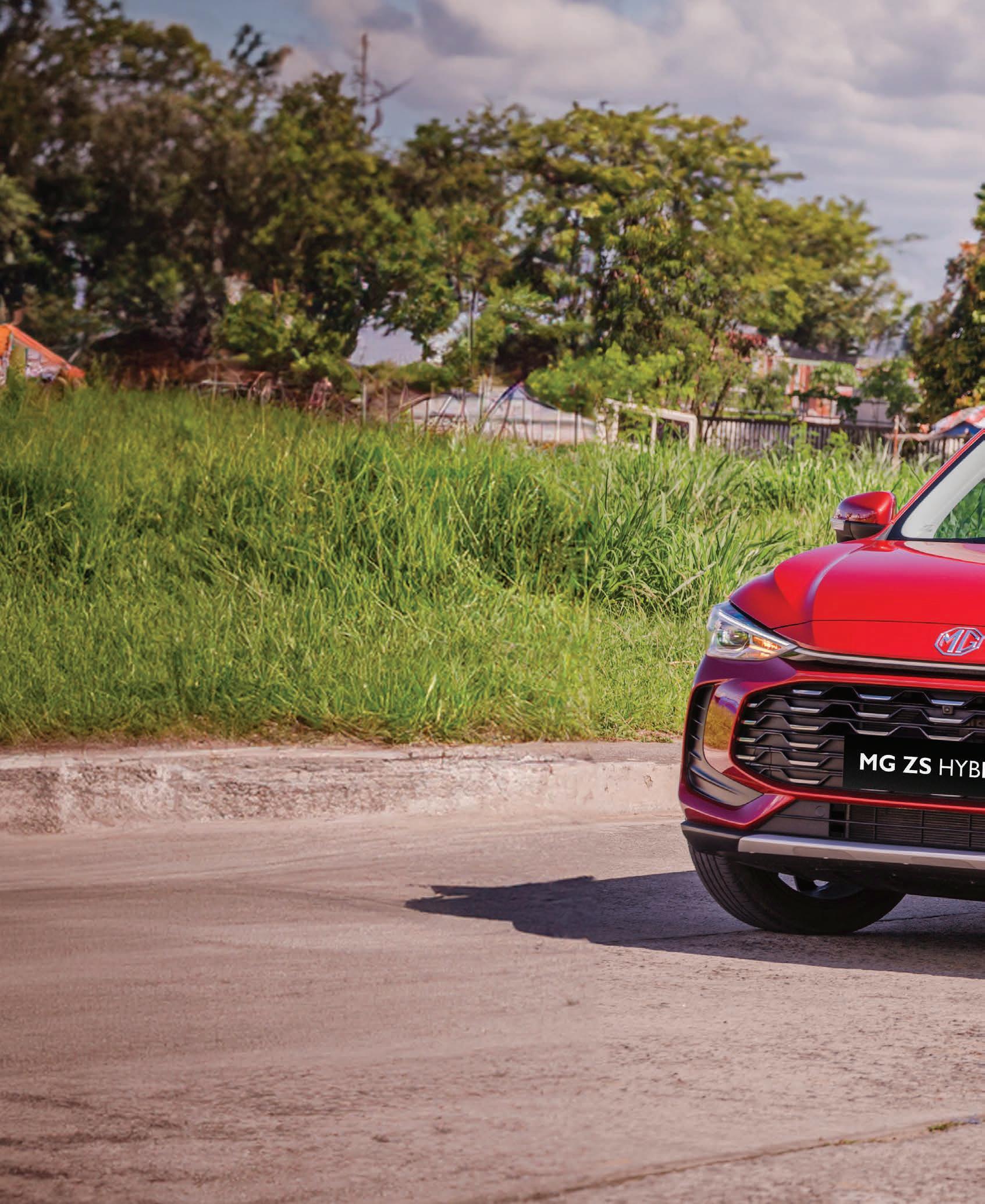


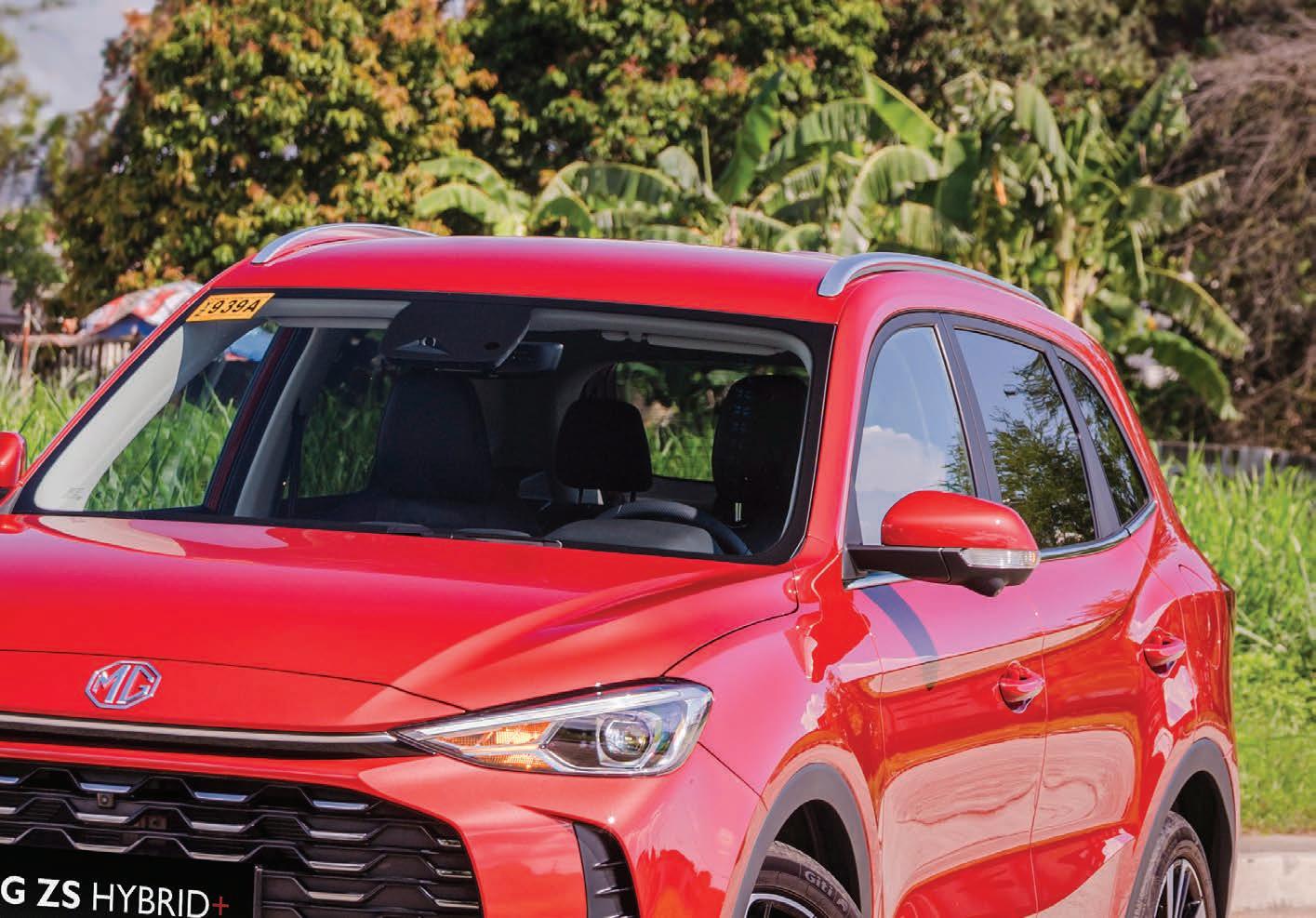
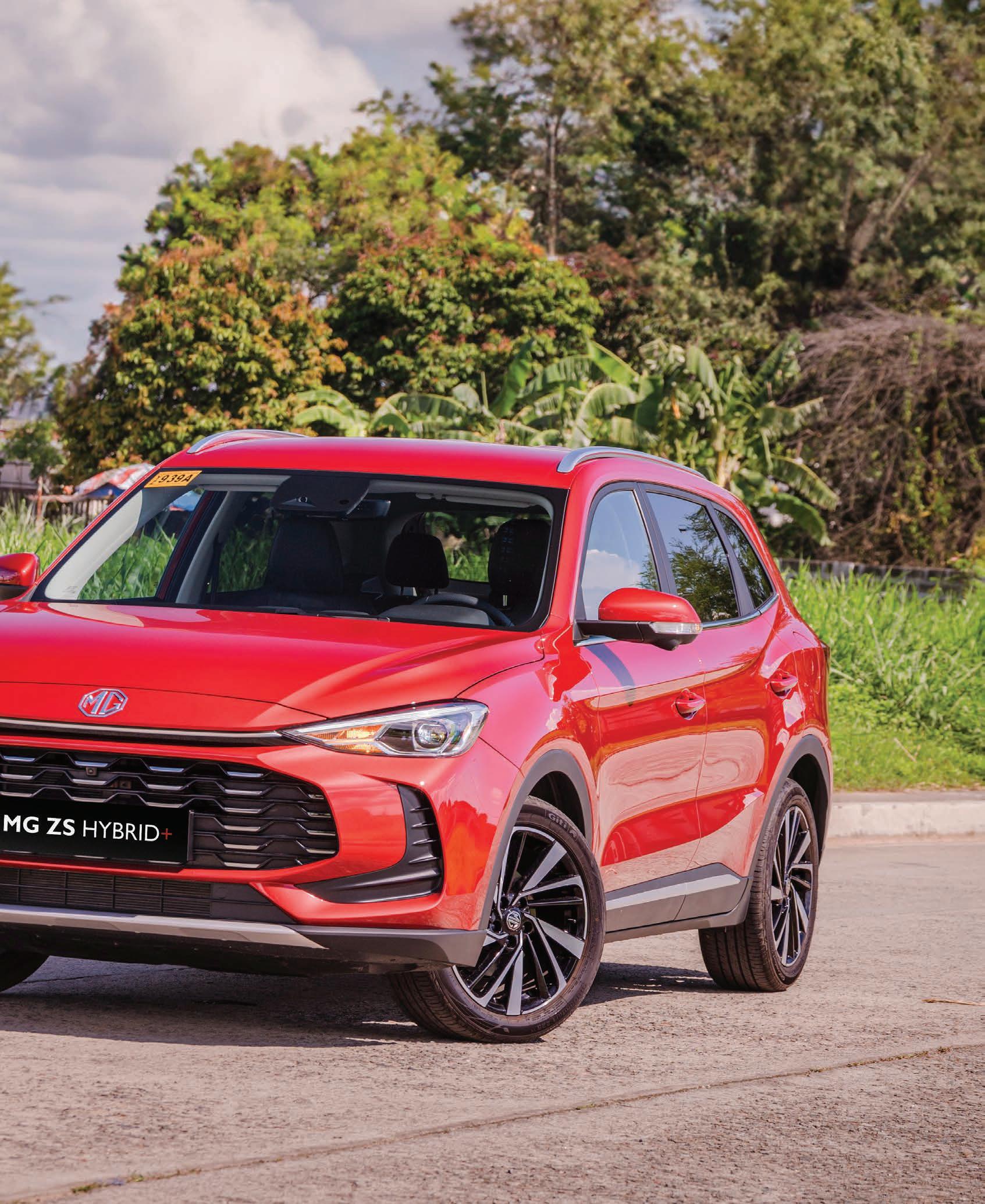
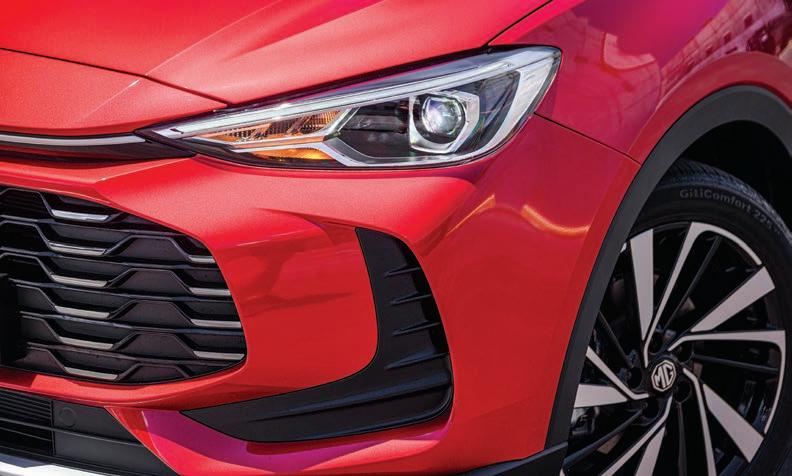
MG claims that the latest generation was built from the ground up, bringing a stronger, sleeker, and more refined presence. Also, it showcases the brand’s latest global design language and engineering. Dimension-wise, the all-new ZS now measures 4,430mm in length, 1,818mm in width, and 1,635mm in height, riding on a 2,610mm wheelbase.
However, the main highlight is the new wide front grille, which completely revamps the previously pronounced hexagonal-shaped design. Even the new signature “Connected Hunter Eyes” LED headlamps, with Intelligent Headlight Control (IHC) and Auto High/Low Beam flowing to their sculpted sides, are sleeker than ever. To differentiate from the MG 3’s look, a gap and metallic line trim above the grille seemingly unite the headlamps.
Other enhancements include angular lines, improved aerodynamics, a rear spoiler, and silver roof rails, adding a touch of sporty refinement. The dark plastic body cladding around the underside features silver finishes on the front chin, side skirts, and rear exhaust diffusers. Even the tailgate has a new design with a fresh set of taillights. Exclusive to the Hybrid+ variant are the bold-looking 18-inch two-tone alloy rims wrapped in 215/50 R18 series tires.
Practical features include electrically adjustable heated door mirrors, rear parking sensors, Daytime Running Lights, a High-Mount Brake Light, Rain-Sensing wipers, and a Glass-Printed antenna.
The cabin has a refined design with thoughtful functionality, thanks to increased overall dimensions, the cabin offers more space, legroom, and cargo flexibility. The second row alone now has a noticeable increase in space (+18mm in headroom, +23mm in elbow room, and +3mm in legroom). Even visibility has been improved, with reduced blind spots. Ingress is easy thanks to the Keyless Entry System, which features One-Push Start System functionalities.
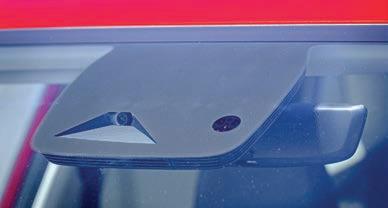
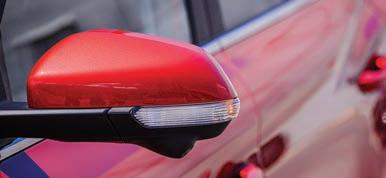


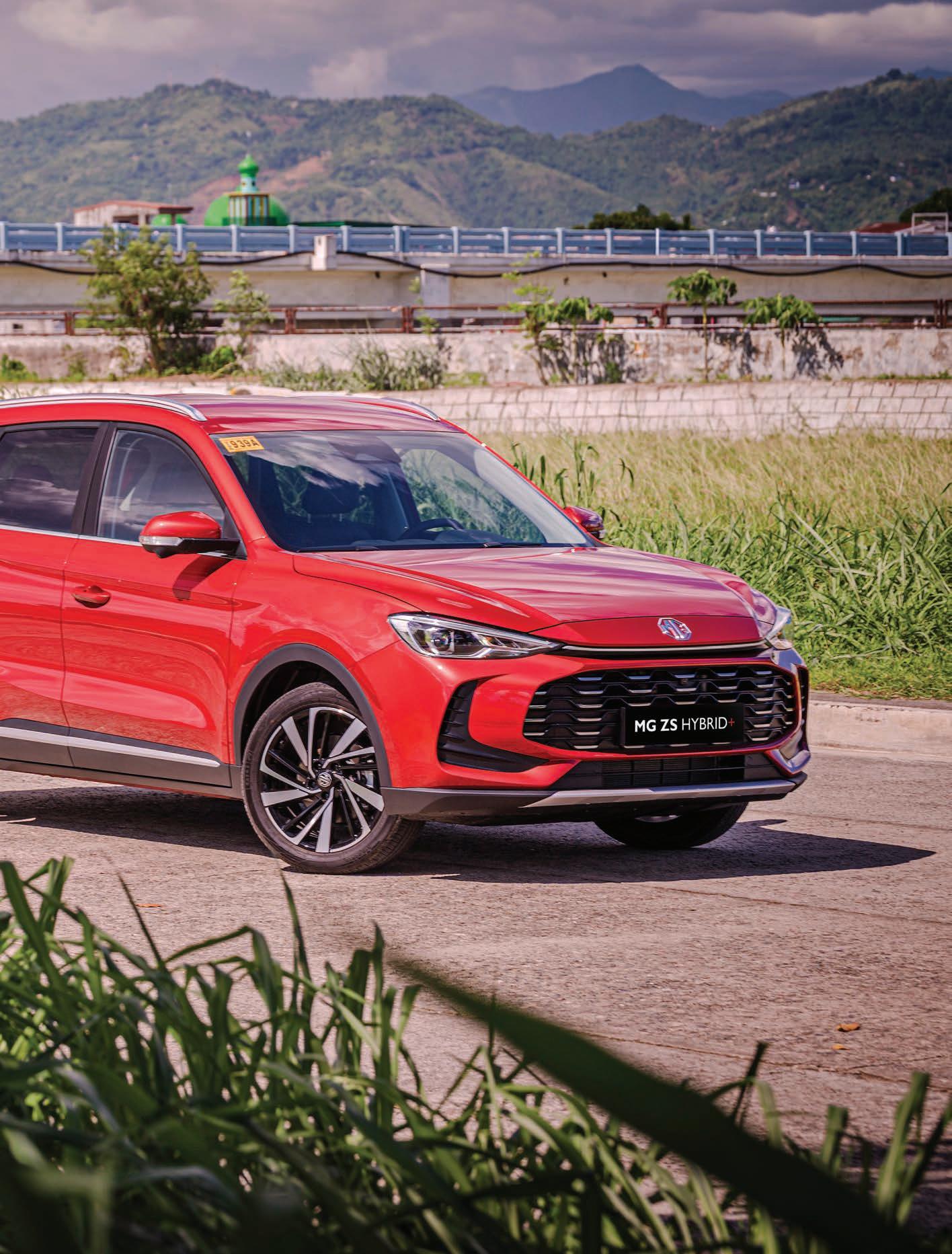
“MG claims that the latest generation was built from the ground up, bringing a stronger, sleeker, and more refined presence. Also, it showcases the brand ’s latest global design language and engineering ”

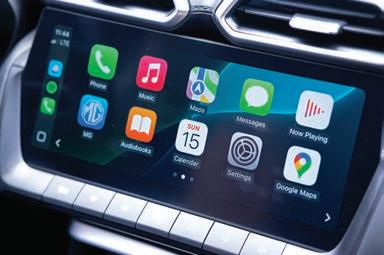
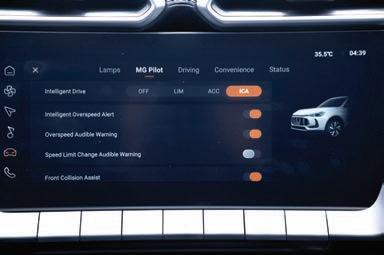
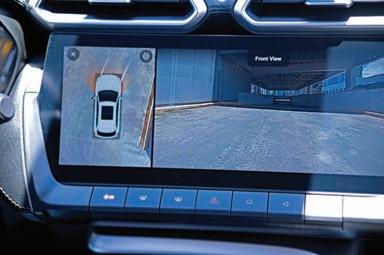
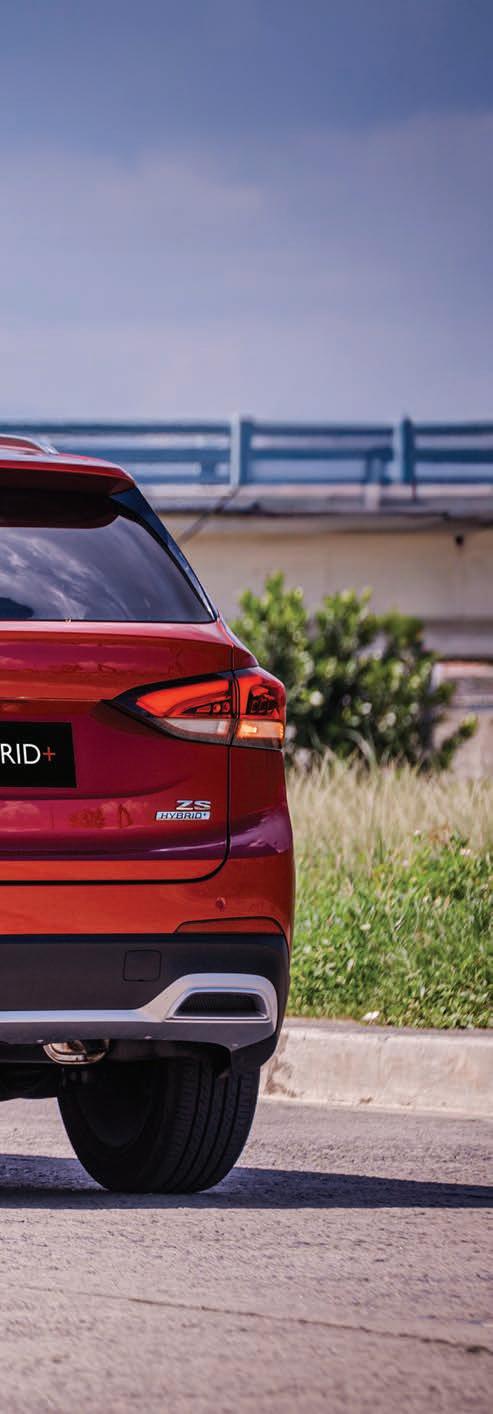
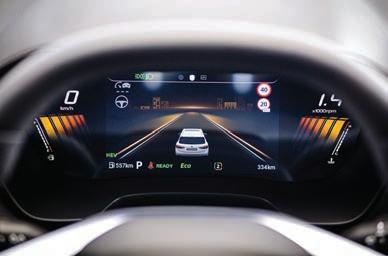
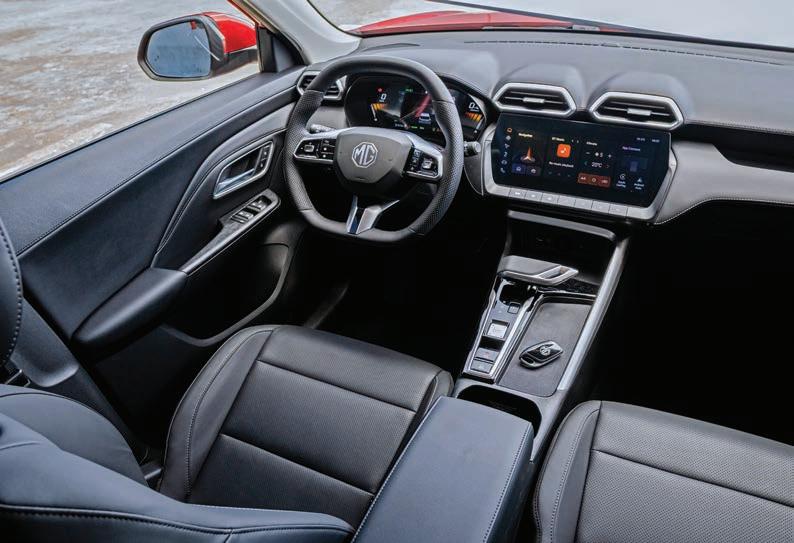
Inside, you are greeted with a Tilt & Telescopic, leather-wrapped, sportyshaped steering wheel featuring multifunction controls, dark panels, metallic detailing, and glossy and brushed finishes, among others, providing a monochromatic ambiance, except for the light-colored ceiling cover. But the panoramic sunroof blends well with the ceiling cover.
Both sun visors and vanity mirrors are illuminated. The electronic gear shifter is reminiscent of the MG One’s. All the seats are leather-wrapped with a perforated design. The driver has a 6-way electric seat with lumbar adjustment, while the front passenger has a 4-way manual seat.
Visible through the steering is the 7-inch digital cluster, which provides essential driving information with a vivid display. Then, the 12.3-inch touch-operated HD infotainment screen at the center dash has Bluetooth, Apple CarPlay, and Android Auto connectivity. The unit has a 6-speaker audio setup. There is also the 360° camera, which provides
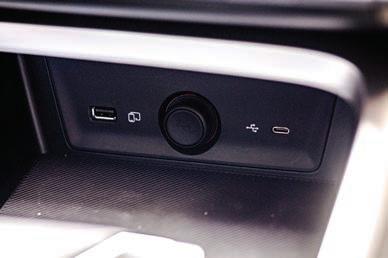
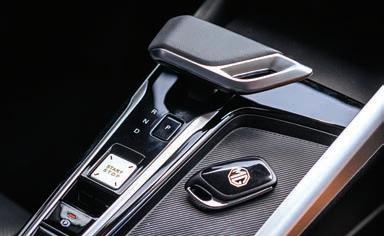

a complete view of the surroundings in tight situations. Other function buttons, including the automatic singlezone aircon, are clustered below the infotainment screen.
Motivation comes from a hybrid system consisting of a Euro 5 compliant 1.5-liter naturally aspirated engine generating 102 ps and 128 Nm of torque, and a single electric traction motor producing 136 ps (100 kW) and 250 Nm of torque. The combined (engine + electric motor) power is 197 ps and 343 Nm of torque. Electric juice is provided by a 1.83-kWh battery. Unique to the MG electrified models is their paired 3-speed hybrid transmission. This hybrid system is also utilized, for the most part, in the MG 3 Hybrid+ model.

According to MG, the ZS Hybrid+ system seamlessly switches between its petrol engine and electric motor or uses both to achieve optimum fuel efficiency while keeping emissions low. With three intelligent driving modes (Eco, Normal, and Sport), the system automatically adapts to the driving needs, delivering a refined drive with smooth transitions and optimal control.
MG calls its power steering system “C-Electric Power Steering.” The sporty-shaped, leatherwrapped, perforated steering wheel has integrated controls and multifunction buttons. These controls are for audio, handsfree telephony, instrument cluster display browsing, Adaptive Cruise Control (ACC), Lane Keep Assist controls, and more.
The front center console features two USB ports (A and C) and a 12-volt socket. Aside from the usual side air-con vents, two central
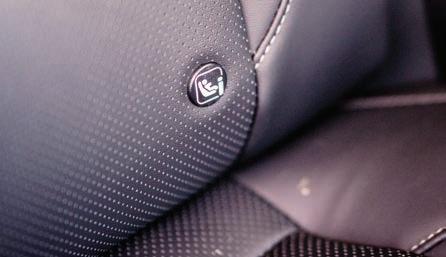
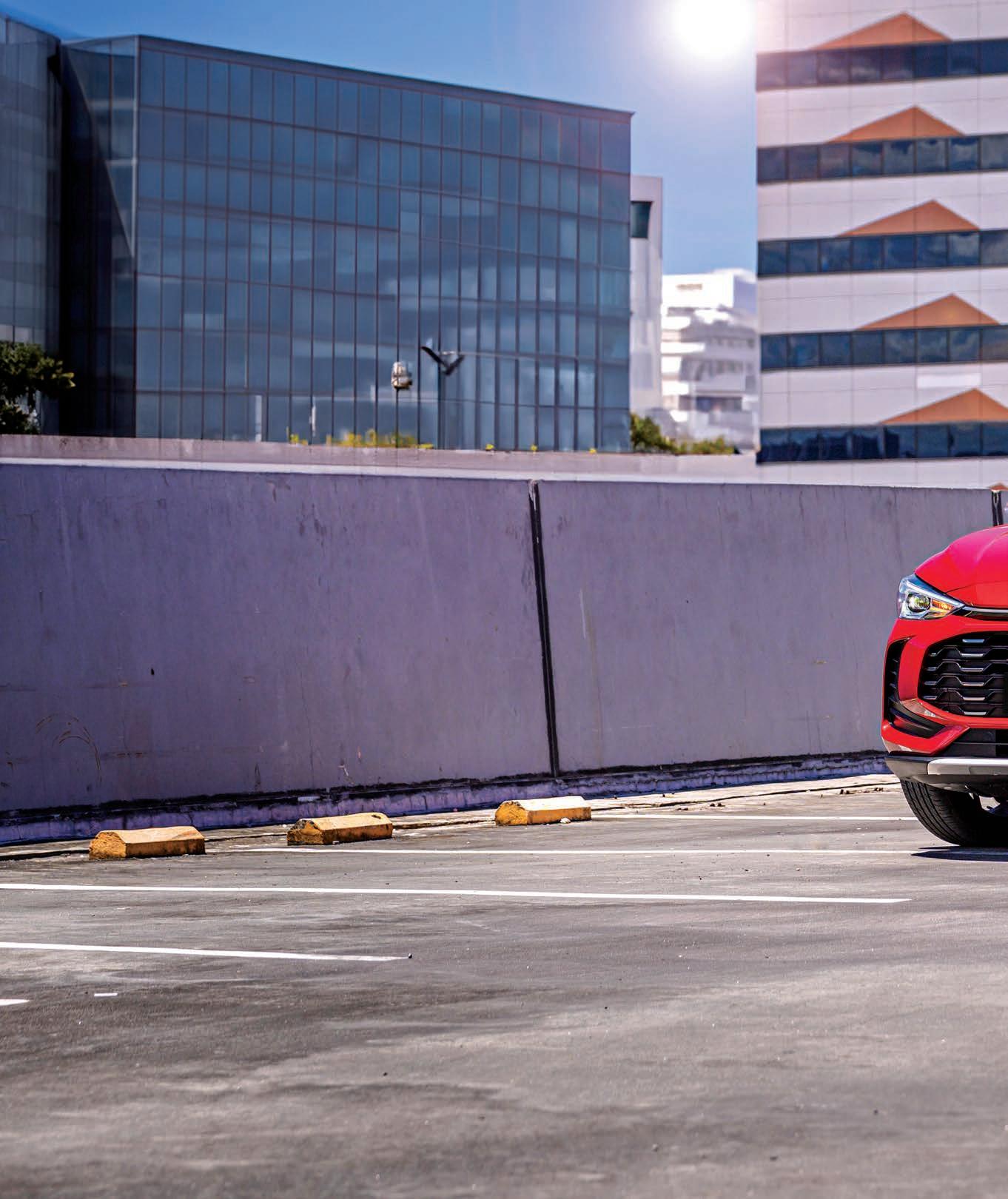
vents are above the infotainment display area. Also, there are rear air vents with a single USB-A port. Aside from offering up to 1,457 liters of boot space (with the 60/40 second row folded), there is clever storage throughout, including adjustable cup holders and a front armrest tray. The heated front seats also have an anti-whiplash function.

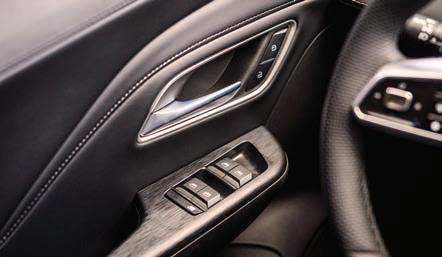
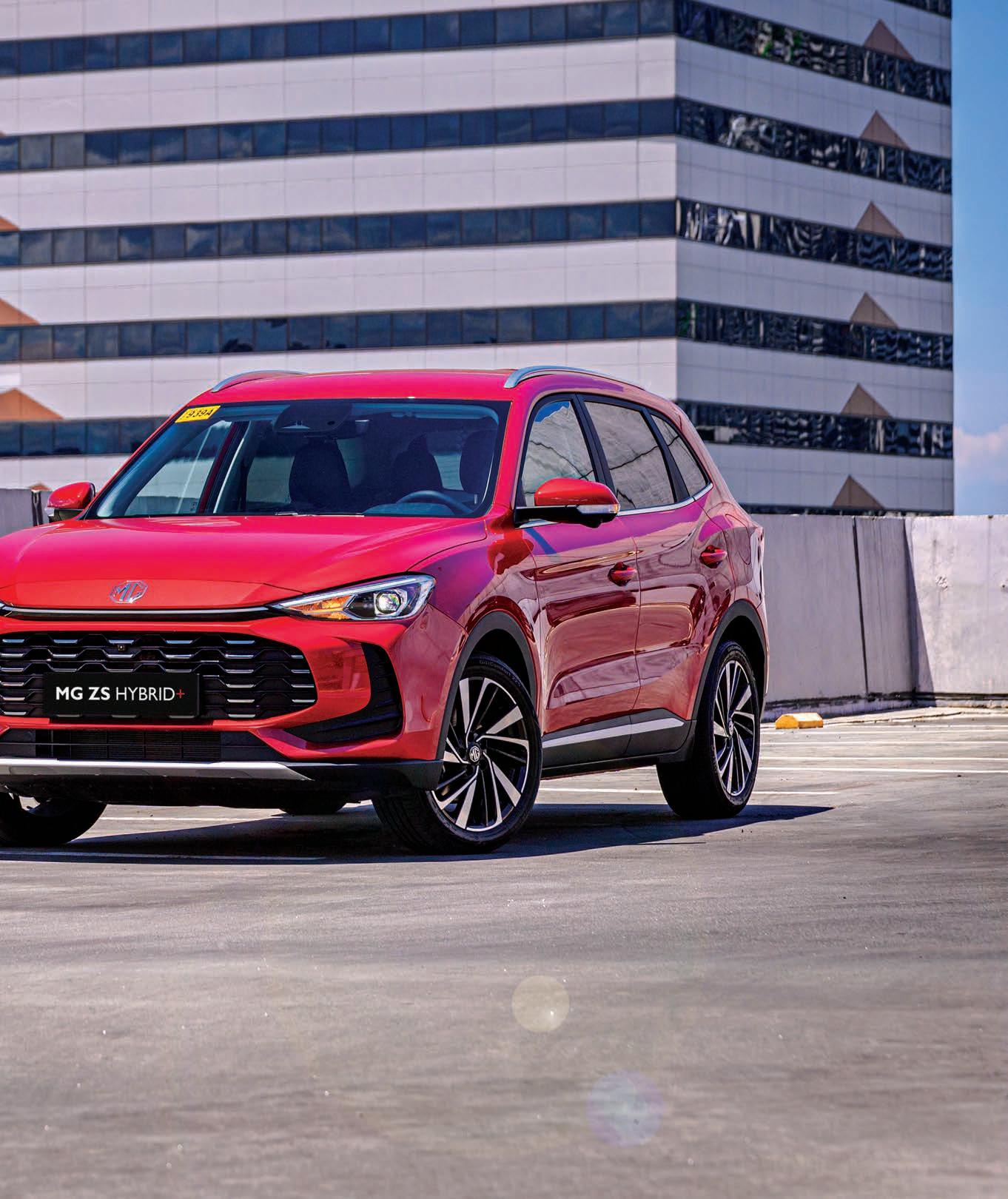
“According to MG, the ZS Hybrid + system seamlessly switches between its petrol engine and electric motor or uses both to achieve optimum fuel efficiency while keeping emissions low. ”
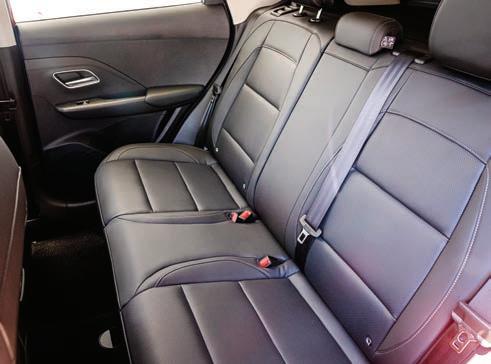
In terms of safety, the all-new ZS model is built to meet European safety and tech standards. The long list of features includes Hill Start Assist (HSA), Audio Display Hill Descent Control (HDC), Features Hill Hold Control (HHC), Active Rollover Protection (ARP), Electronic Stability Program (ESP) with EPB, AntiLock Braking System (ABS), Electronic Brakeforce Distribution (EBD), Cornering Brake Control (CBC), Traction Control System (TCS), Vehicle Dynamics
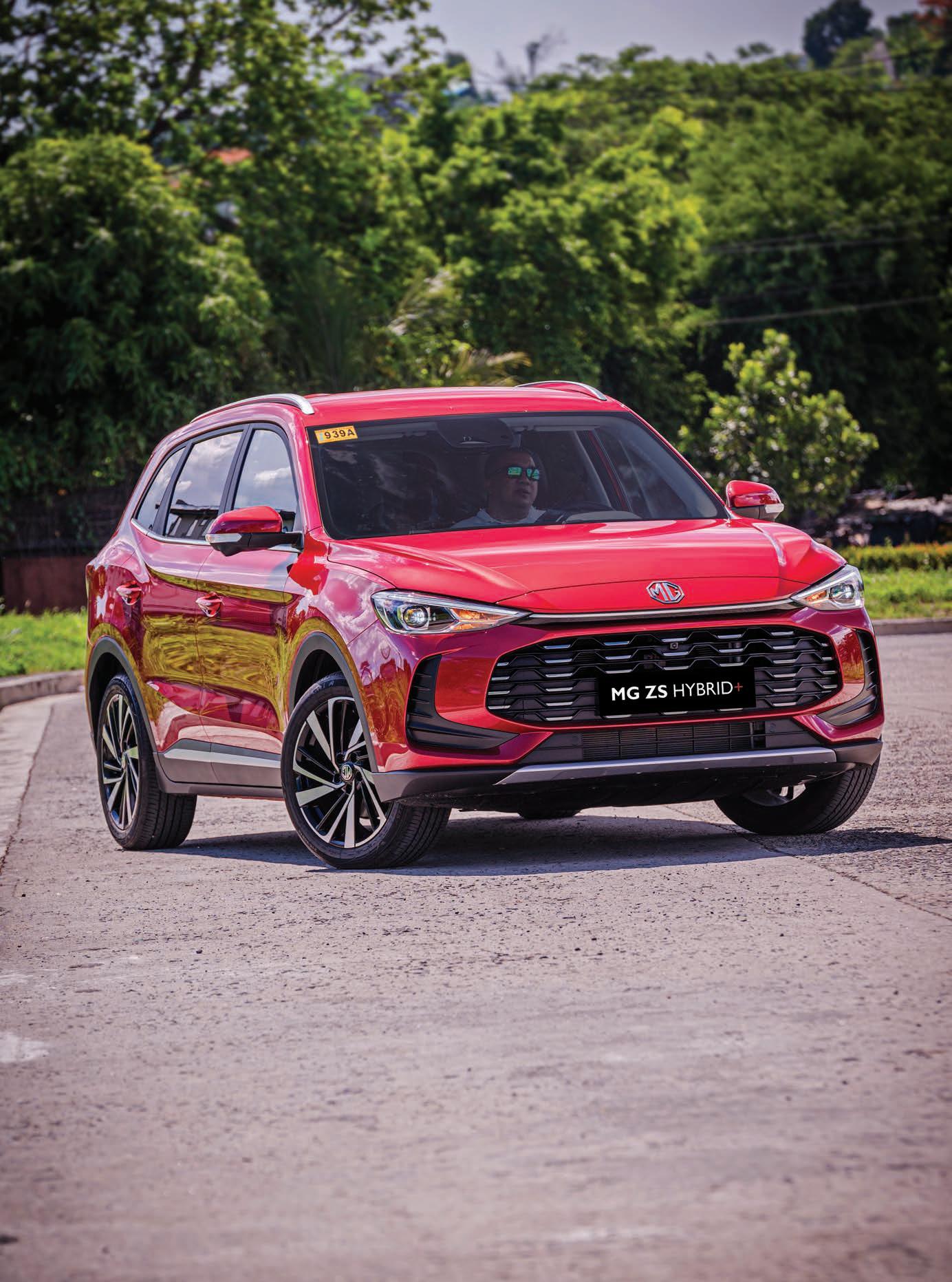
Control (VDC), Hazard Warning System (HAZ), Brake Disc Wiping (BDW), and Tire Pressure Measure System (TPMS).
Other standard features include a Speed-Sensing Auto Door Lock, Auto Unlock Upon Collision, a Front Seat Belt Reminder for both the Driver and Front Passenger, an ISO Fix, Airbags (Front, Side, and Curtain), an AntiTheft Alarm System, an Immobilizer, and a 360-degree view camera with Rear Parking Sensors.
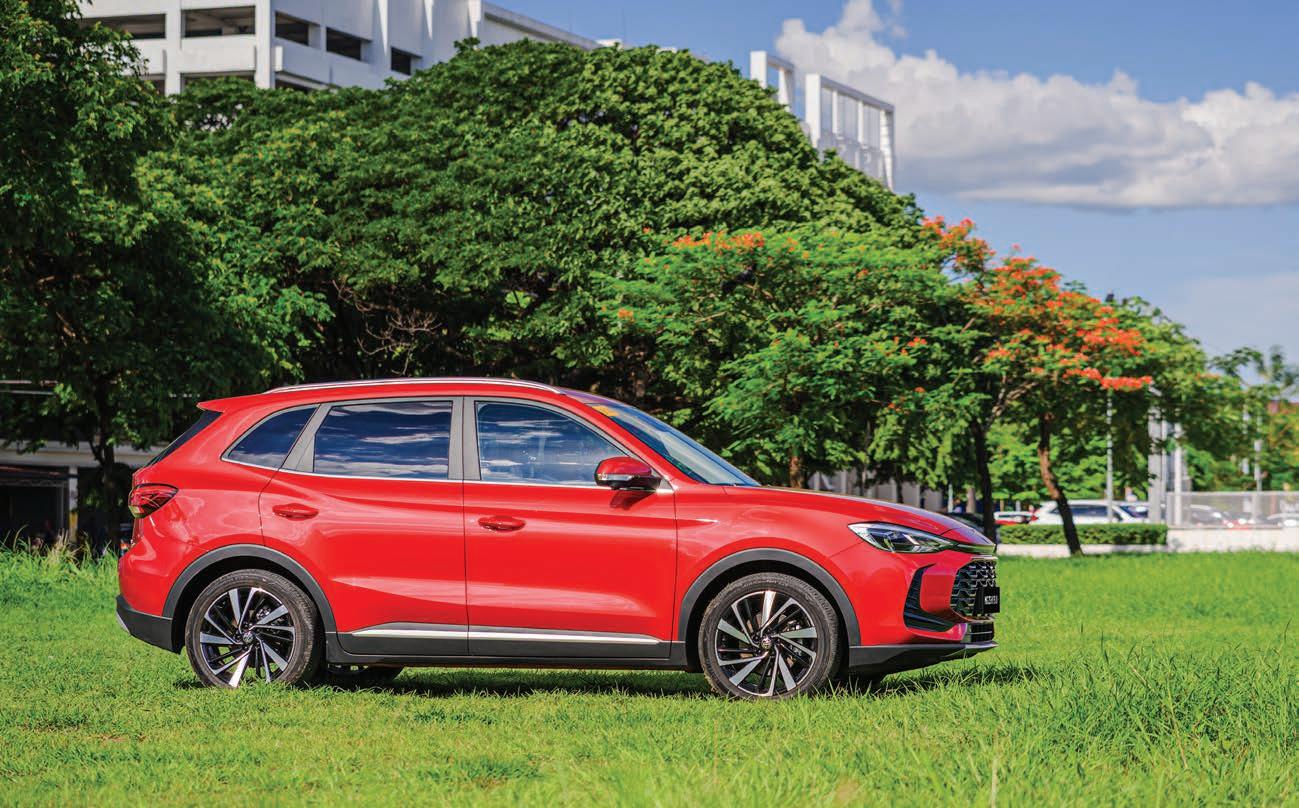
MG’s suite of Advanced Driver Assistance Systems (ADAS) comes standard on the MG ZS Hybrid+. These features are Adaptive Cruise Control, Intelligent High Beam Control, Active Emergency Brake with Pedestrian and bicycle Detection, Traffic Jam Assist (TJA), Blindspot Information System, Lane Change Assist, Rear Cross Traffic Alert, Lane Departure Warning System (LDWS), Lane Keeping Assist System, Emergency Lane Keeping (Road Edge),
Forward Collision Warning (FCW), and Speed Assist System.
The All-New MG ZS Hybrid+ subcompact crossover SUV is priced at PHP 1,328,888. However, an introductory price of PHP 1,248,888 is applicable until August 31, 2025. Available colors are Sloan Silver Metallic, Emerald Green Metallic, Black Pearl Metallic, Dover White, and Diamond Red Metallic.
RANDY S. PEREGRINO

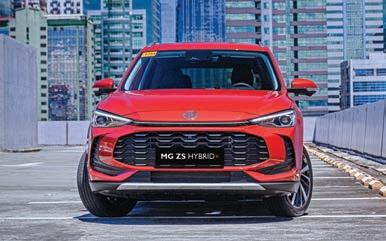
MG ZS HYBRID+
Vehicle Type: Subcompact crossover SUV
Engine: 1.5L In-line 4 Cylinder
Power: 102 ps (75 kW)
Torque: 128 Nm (94 lb-ft)
Electric Motor: Permanent Magnet Synchronous
Power: 136 ps (100 kW)
Torque: 250 Nm (184 lb-ft)
Combined power: 197 ps and 343 Nm of torque
Transmission: 3-speed hybrid transmission
Front Suspension: Independent MacPherson Strut
Rear Suspension: Torsion Beam
Front Brakes: Ventilated Disc
Rear Brakes: Disc
Steering: C-Electric Power Steering
Length: 4,430 mm
Width: 1,818 mm
Height: 1,635 mm
Wheelbase: 2,610 mm
Curb Weight: 1,420 kg
Cargo Capacity: 443L (Rear Seat Up)/1,457L (Rear Seat Folded)
Fuel Tank capacity: 41 liters
Price: PHP 1,328,888


2024 was a milestone year, we made a series of road trip videos with one brand. We partnered with Mitsubishi PH and in line with their Taralets ‘Pinas campaign, they let us use their All-New Triton. We put the triton to some real world use that most owners would put them through, which is mostly on the road and once in a while take them on some light off roading.
Our first destination was Baler, the birthplace of surfing here in the Philippines. And our vehicle, the All New Mitsubishi Triton Athlete. Our meeting place was Ortigas center, Ronnie, Ira and myself (Neil). Made sure we had everything we needed. We hit the road and made our way roughly
275 kilomteres to where we would be staying in Baler, Punta Mercedes Beachfront Resort.
As soon as we checked in, we were excited to hit the road again and made our
way to Sabang Beach. Film buffs would recall this as the location of one of the most epic scenes in Francis Ford Coppola’s “Apocalypse Now”. Ira and Ronnie tried to learn the basics


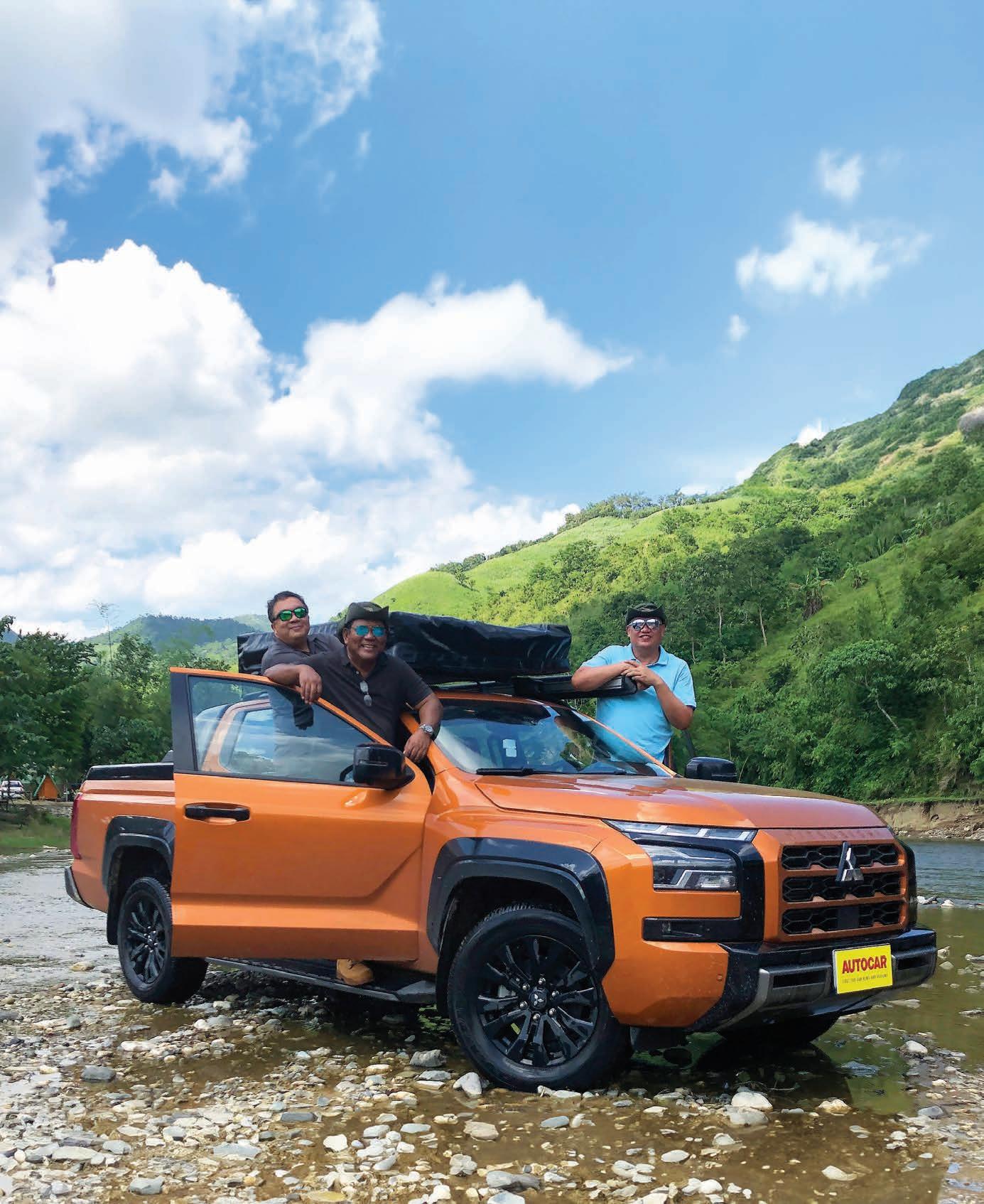


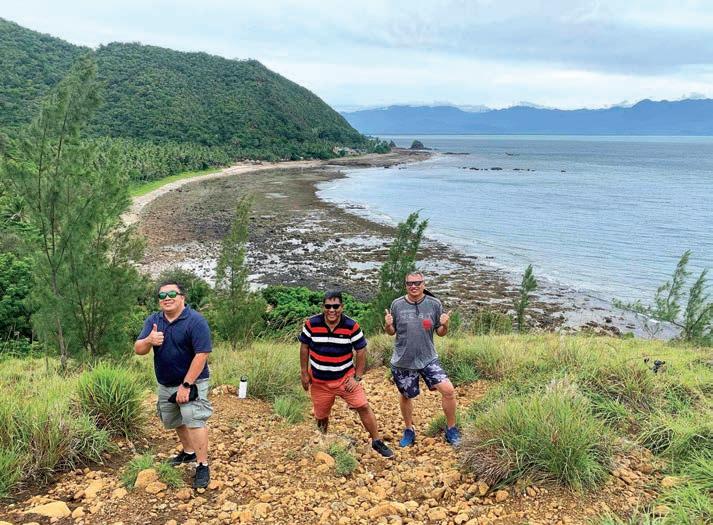
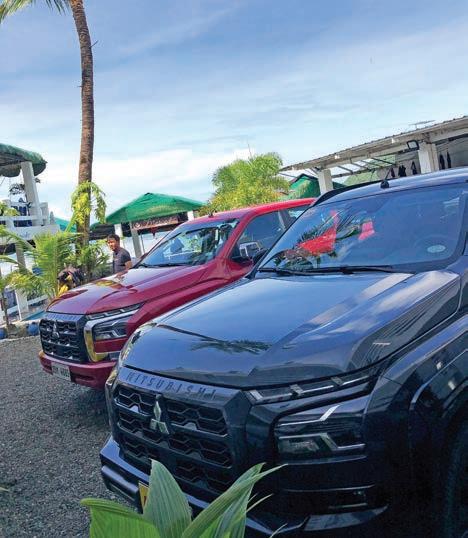
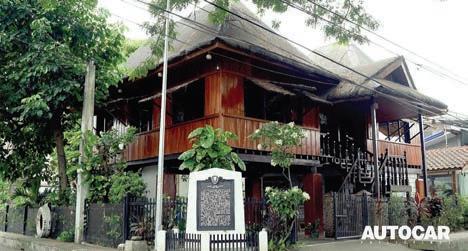


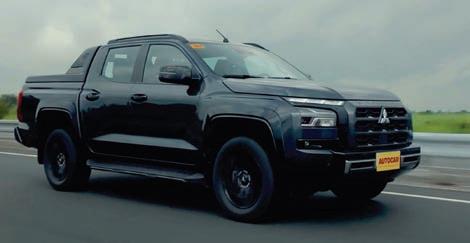
of surfing from the local instructors, but decided they’d just rather watch the pro’s do it.
We visited the San Luis Obispo de Talosa Parish or Baler Church, which was put up in 1611, it’s bells can be heard all the way in the neighboring towns of Dipaculao, San Luis and Maria Aurora.
Across the church is the Donya Aurora House, which was the house of former First Lady Donya Aurora Quezon, wife of former President Manuel Quezon, it was turned into a “shrine” to commemorate her life and houses old photographs and paintings.
A short drive away is Ermita Hill, which was where some residents of Baler took refuge during the “Tromba Marina”, a powerful tsunami which flooded the area on December 27th, 1735. Many perished in Baler and neighboring towns. From where we parked, we still had to go up 278 steps to reach the memorial.
Another landmark we visited was Baler’s famous Balete tree also known as the Millenium Tree, believed to be about 600 years old and about 200 feet tall, after that, we also went to the Baler Hanging Bridge, where we learned Ira had a fear
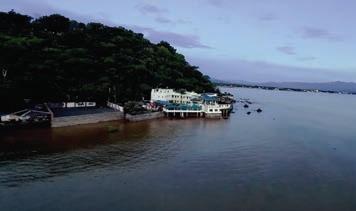
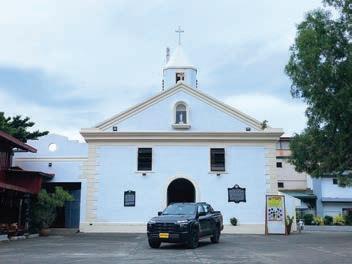
of swinging bridges and just to make life difficult for us, we visited the Dicasalarin Lighthouse, but only made it half way up the hill to get within sight of it, as it was a very long and steep hike.




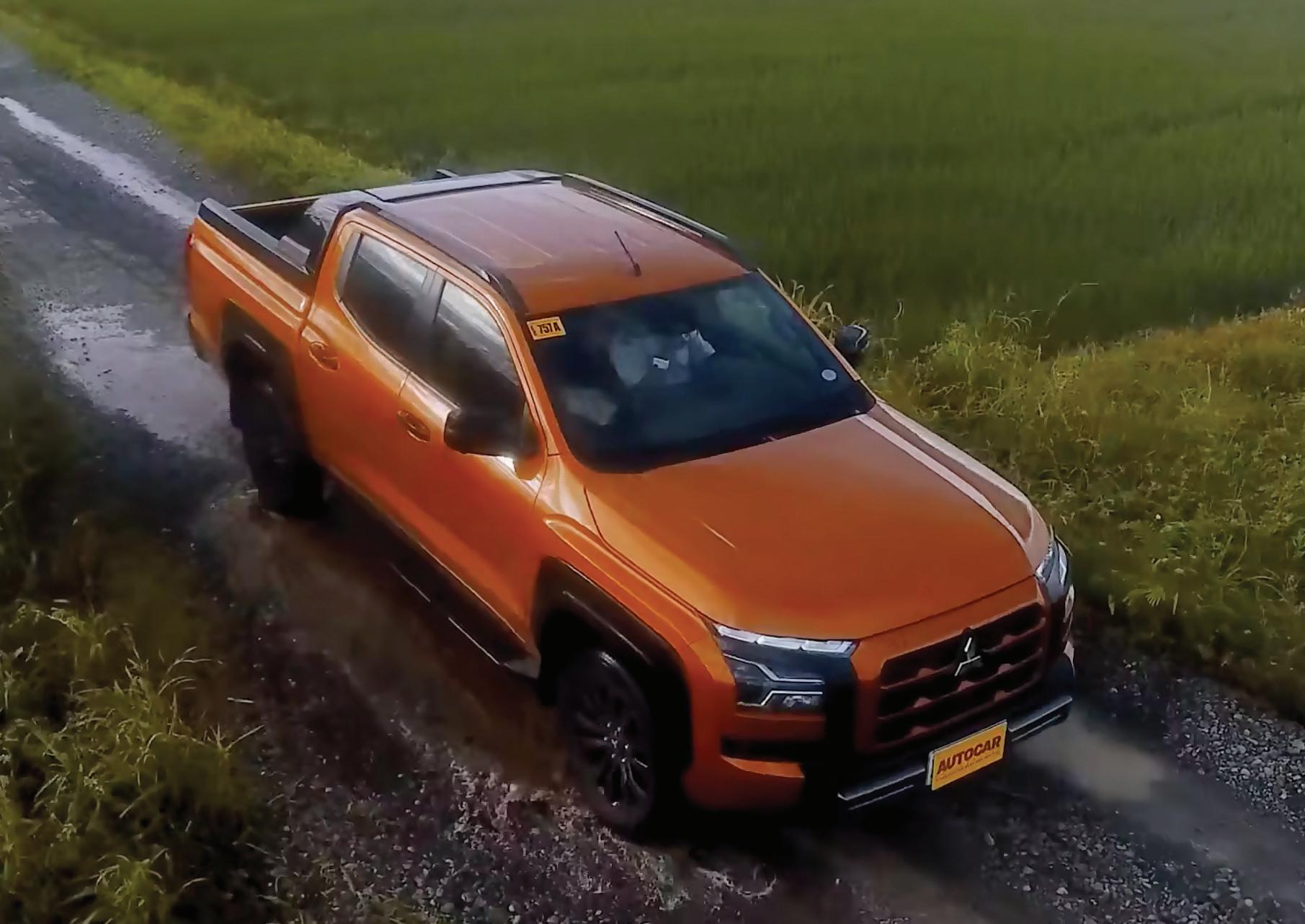
2-PART EPISODE
In the second episode, of our road trip series Trip Lang!, Ira, Ronnie and myself headed back up north, but this time we went to Vigan in Ilocos Sur.
I’m not sure what you know about Vigan, but we have always associated it with longganisa, empanada and bagnet. And the thought of that makes me hungry. Of course there are other things Vigan is known for, and we’ll learn about those
things in this episode. Our 400+ kilometer drive would take us about 5-6 hours including a few bathroom breaks, but we like long drives because they’re definitely more fun! The Triton is roomy, even for our 6’4” giant Ronnie, he’s comfy even when he’s seated in the front passenger seat or the back.
In 2014, Vigan was recognized as one of the New 7 Wonder
Cities of the World, and well known for it’s well preserved colonial Spanish architecture.
Our first stop was where would be staying, an air-bnb in a suburban area about 15 minutes outside the city. On this trip, we learned a bit about two industries in Vigan, the Pagburnayan or pottery, and weaving industry. We learned from Mr. Eduardo Go, (son of National Folk Artist, Fidel Go) of the
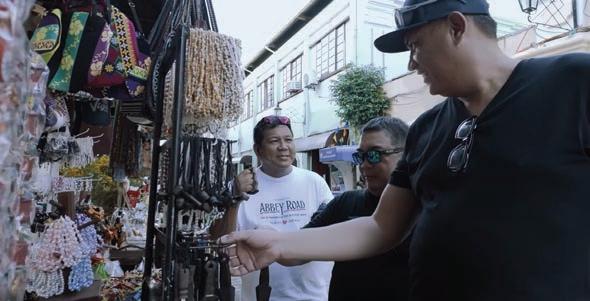

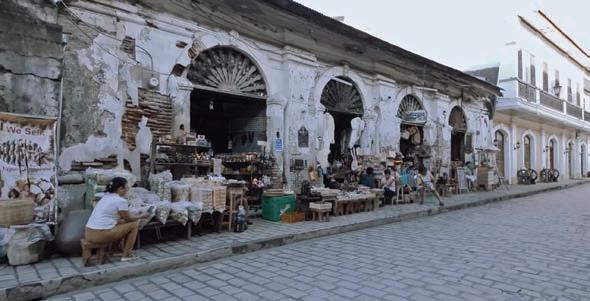
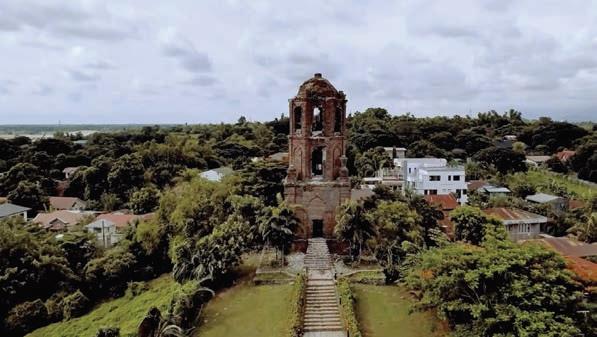

Ruby Jar Factory that the pottery industry has come up on hard times since the pandemic, and is still trying to recover. To augment their income they’ve started to teach tourists how to “throw” a clay pot.
The weaving industry however is steadily recovering and Mr. Dominico Panela of Rowilda’s Loomweaving showed us his generations old hand made weaving loom,
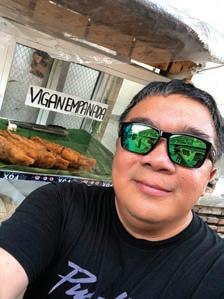

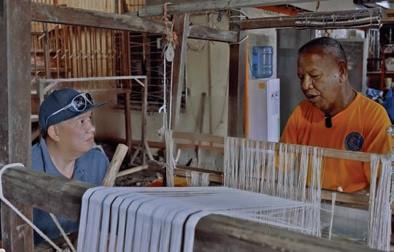

and Ronnie even gives it a try. It’s very labour intensive.
One thing both have in common are that the next generation who’s supposed to take over from their parents don’t seem to be as interested in taking up the reigns of the business.
A trip to Vigan wouldn’t be complete without going to Calle Crisologo, of course this was closed to motor vehicles, but you can
walk it’s length or rent a Calesa or horse drawn carriage to ride around a few city blocks. We did. And it’s a great throwback to how people used to travel back in the old days.
We also tasted some mouthwatering Ilocano dishes at Café Leona, which opened in 1997.
We tried their pinakbet, pokepoke, Vigan morcon and their twist on Bicol express called Vigan express. We also had our fill of Vigan

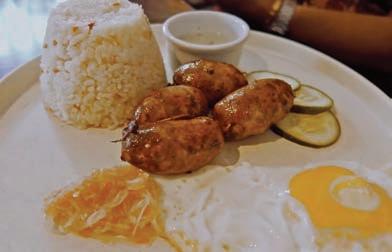

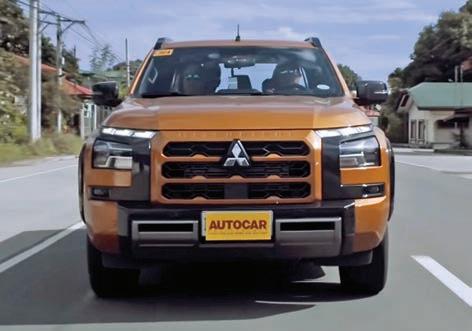




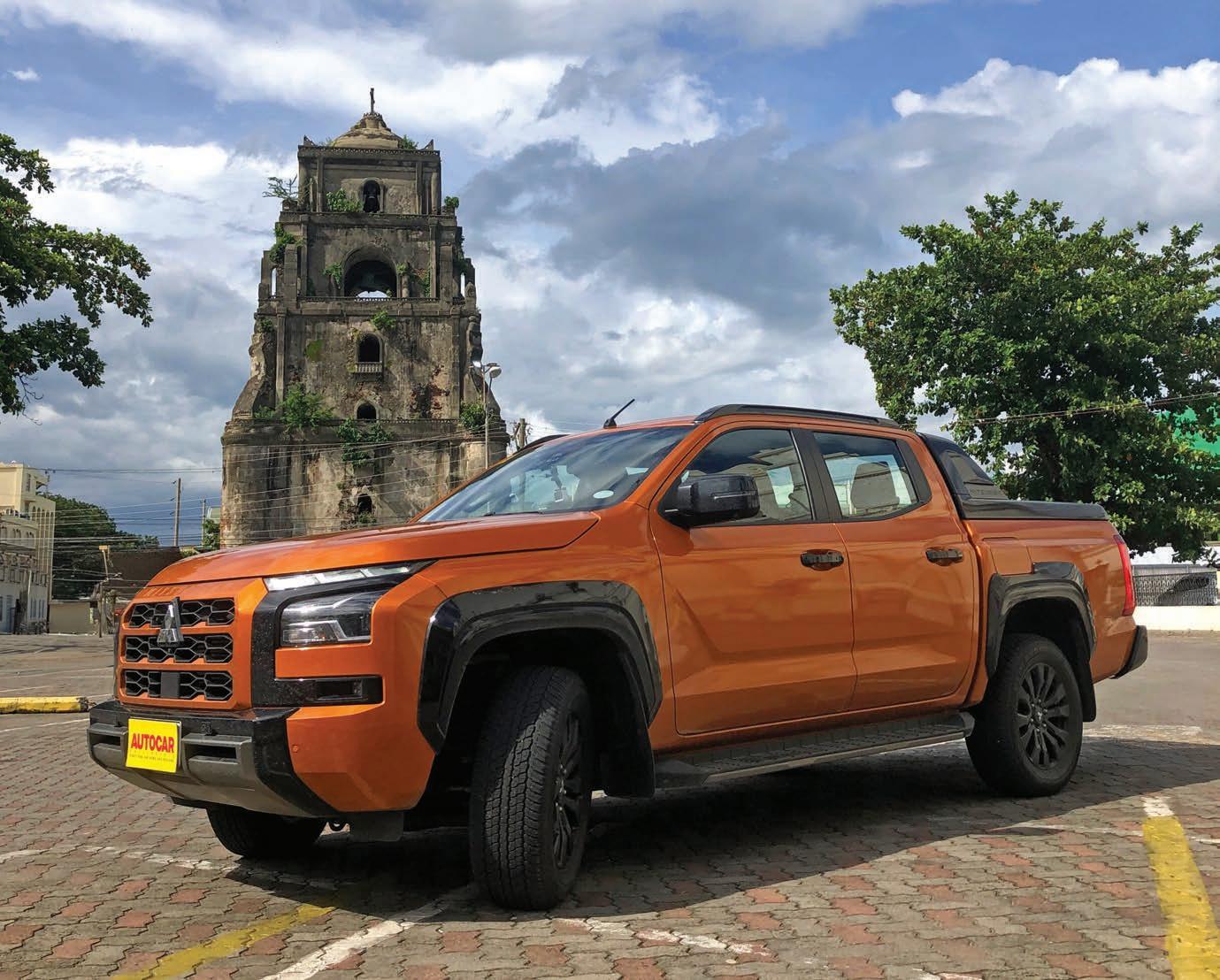
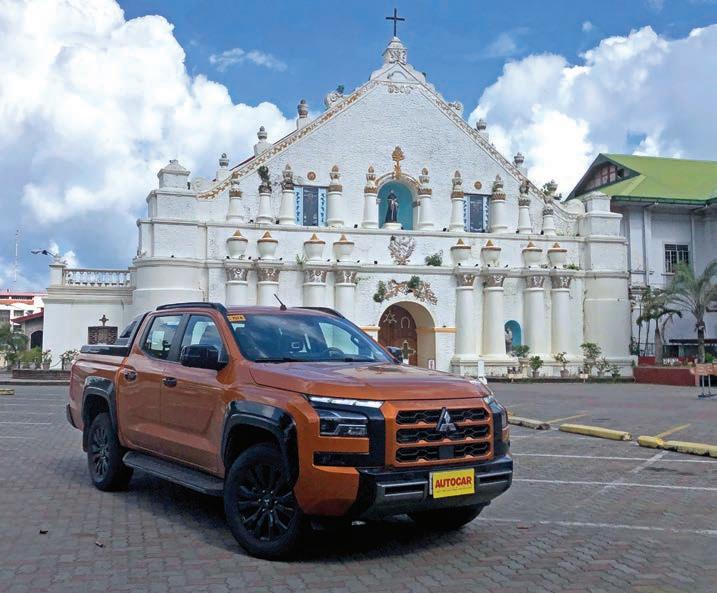
This episode of Trip Lang could be a continuation of our Vigan drive, but Laoag deserves it’s own episode. From Vigan, we drive into Ilocos Norte. We’re still driving the Mitsubishi Triton Athlete and this time we’ll be putting it’s off road capabilities to work as our first stop are the Paoay Sand Dunes. We went to the sand dunes area, fortunately it rained the night before so the sand was firm packed in most parts, this raised our confidence as we didn’t have any recovery gear
like a winch or max tracks if we get bogged down. Of course we weren’t deep in the dunes and help was just a phone call and a few minutes away.
Not surprisingly, the Triton had an easy time in the sand and this is where its Super Select 4WD II really shines. Of course, we wouldn’t recommend you do what we did even with a 4x4. We’re experienced and know how to read to read the terrain, in fact we backed down from what may have looked like an easy track. Never go off roading alone and always have basic recovery gear on hand. There are off road /
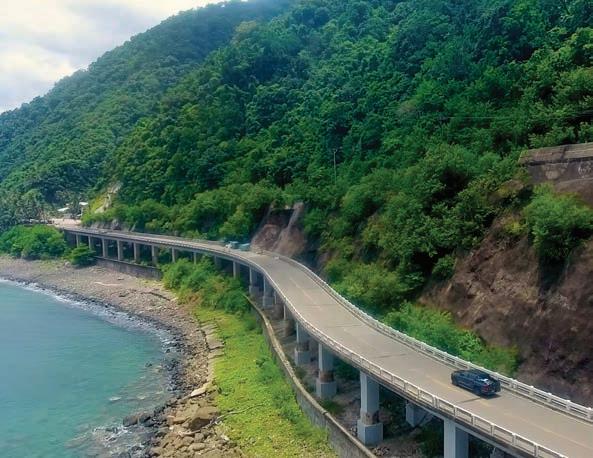


overlanding groups who would you can join on weekends out of town and at the same time teach you how to get out of sticky situations.
Still in Ilocos, we went on the search for good empanadas, and we learned that empanada stalls start selling around 2pm onwards and will sell until they run out. We found Elvies Empanada and trust me, they are yummy! A choice between sweet or native longganisa filling is a tough choice as they’re both really good. We had a chance to chat with Elvie as she was the one preparing the food herself.
There were historical landmarks within the

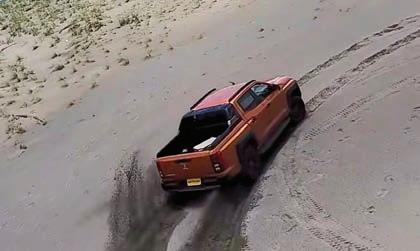
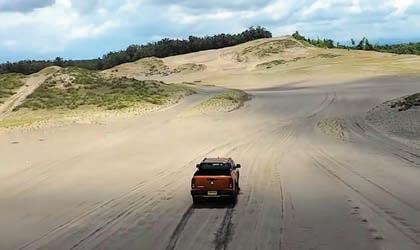
Laoag itself and we got to see the Sinking Bell Tower and Laoag Catherdral. About 21 kilometers from Laoag is the coastal town of Pasuquin where they use traditional methods to make sea salt, the same salt used to make bagoong. Did you know
Dragon Fruit is grown in Ilocos Norte? Well there, you learned something new.
What would a trip up north be if we didn’t hit Pagudpod beach and play in the sand near the windmills? And of course passed through the Patapat viaduct.
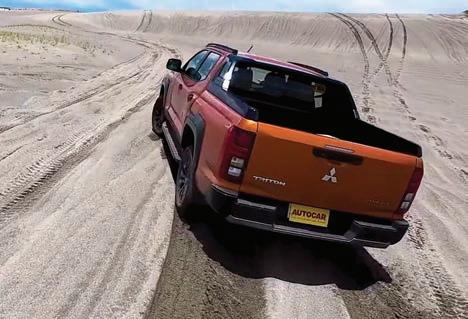

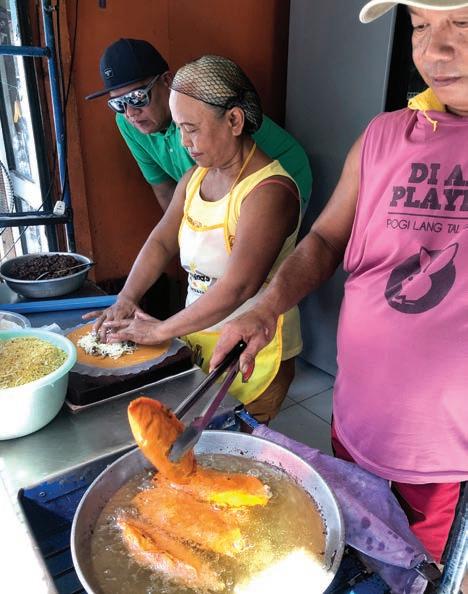


In this episode, we stay close to home and by close, we mean about 2 hours outside of Metro Manila. This time we try car camping, and this is probably what a good majority of customers would do with their trucks on weekends.
The cool thing is that this hobby is scalable, where you can start with a stock vehicle, equip yourself with a tent, some chairs and packed food, upto as much as getting a lift kit for your truck, a roof tent, portable air conditioning, awning, starlink internet (If you want to stay connected) and an outdoor kitchen to name a few luxuries. Whatever your budget allows.
Sta Ines, in Tanay, Rizal is where we headed to meet up

with a good friend of the motoring media, Joel Pedro of Overland Kings where he had a comfortable outdoor setup waiting for us. He also set up our All New Mitsubishi Triton Athlete with a roof tent and an awning for us to get into the outdoors mood on our drive out. A Campsite next to a stream like River Ranch is a nice alternative to the beach, it’s a completely different vibe. But it’s just as
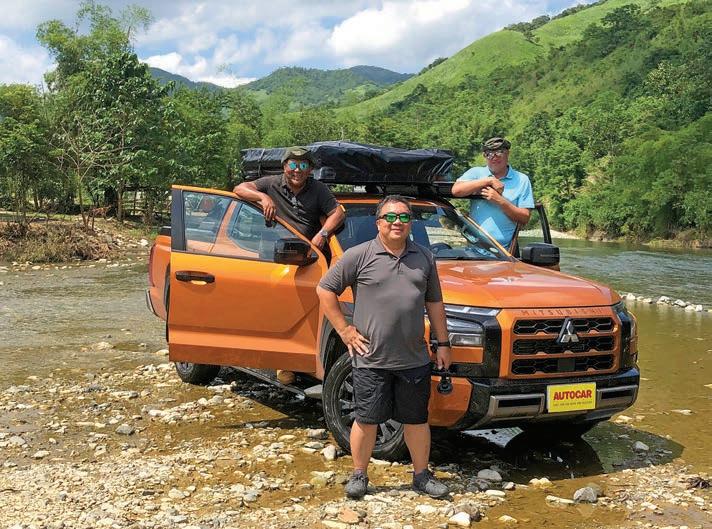
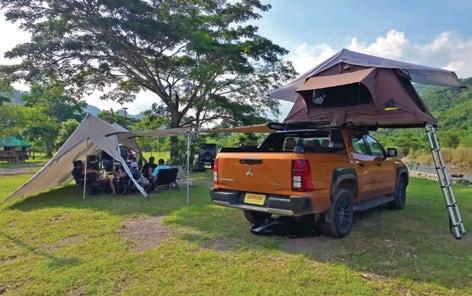
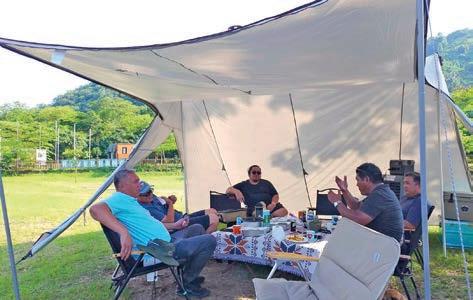
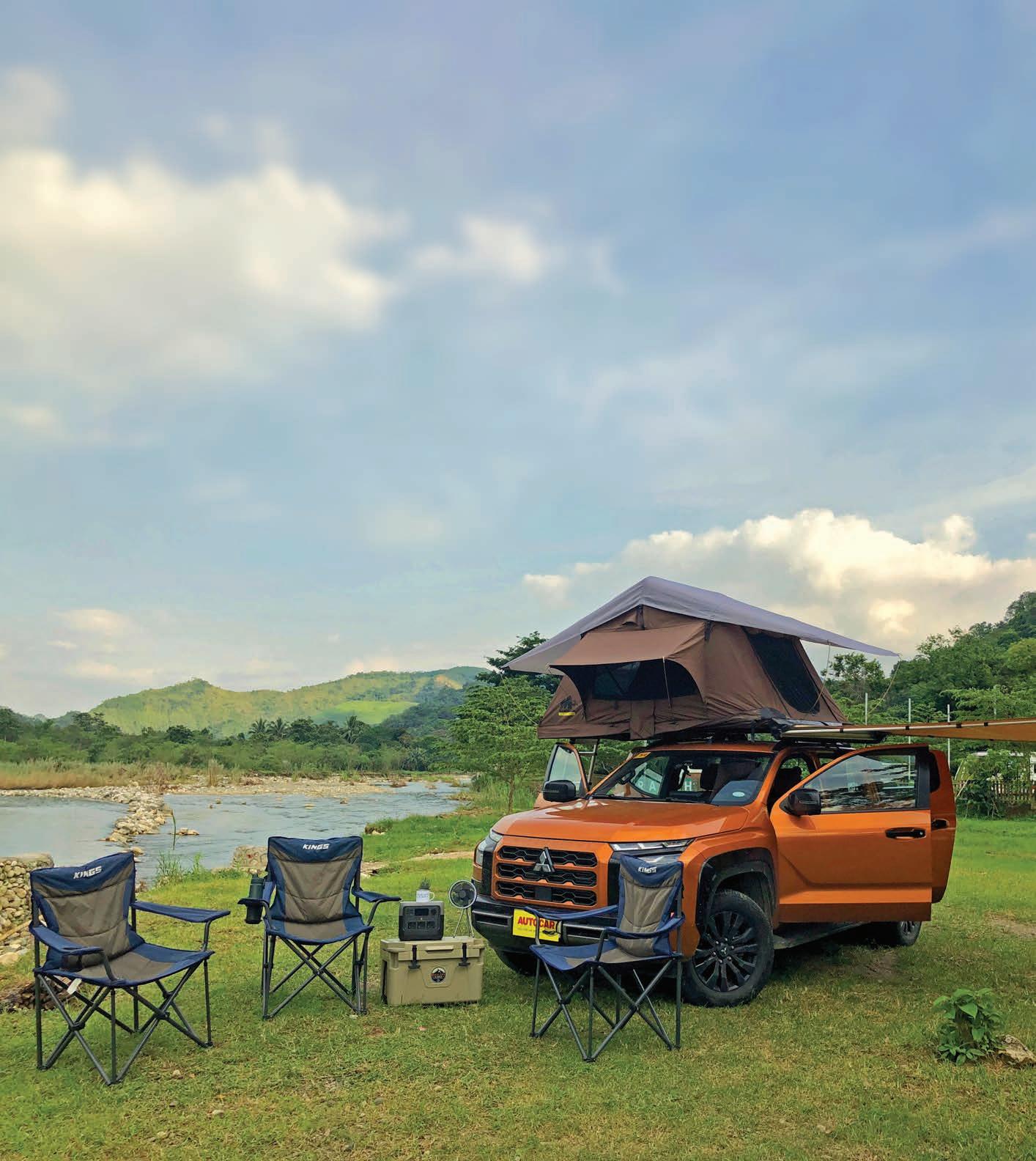
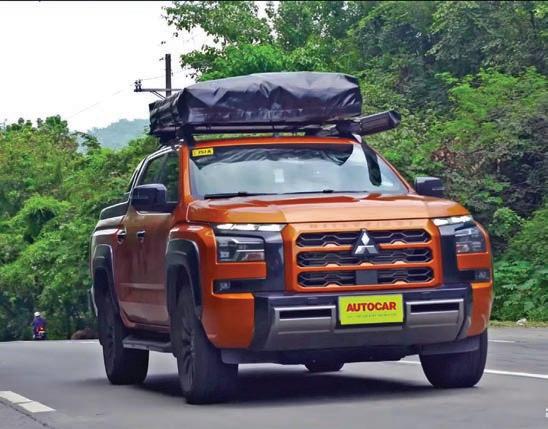

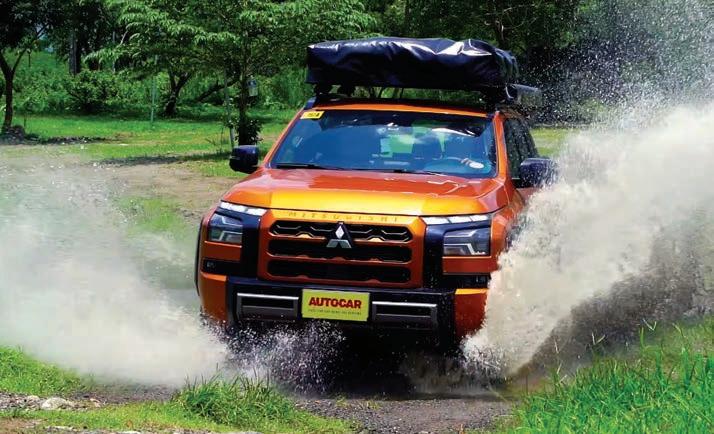
laid back. Getting to the campsite was easy because the roads lead to it. As soon as we arrived, we offloaded our gear and while Joel’s staff set up our campsite, we set off to explore the nearby areas. And this would allow us to see what the Triton Athlete can do.
We did some light off roading and some shallow river crossings. All of which were within the capabilities of the Triton Athlete. And before we knew it, it was time for lunch. When we got back to the campsite, a shelter was setup with
chairs, tables and a sumptuous lunch. There really wasn’t much to do afterward but to enjoy the ambiance and the fresh air. The sound of the stream next to the campsite was relaxing. And we just enjoyed each other’s company until it got dark, and we called it a day and headed back to Manila.
If you want to set up your vehicle for the outdoors, you can check out Overland Kings website https:// overlandkingsph. com/ and their facebook page https://www.
facebook.com/ OverlandKings/ not only will you find a a set up to suit your budget, but you will find a community of like minded people who like to spend their
free time outdoors away from the city. Oh and if mountains and rivers aren’t your thing, they also camp out on beaches and they are regulars at Crystal Beach in Zambales.
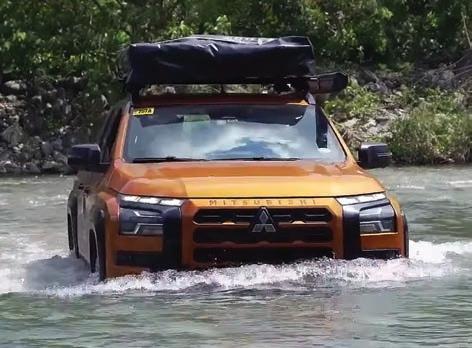
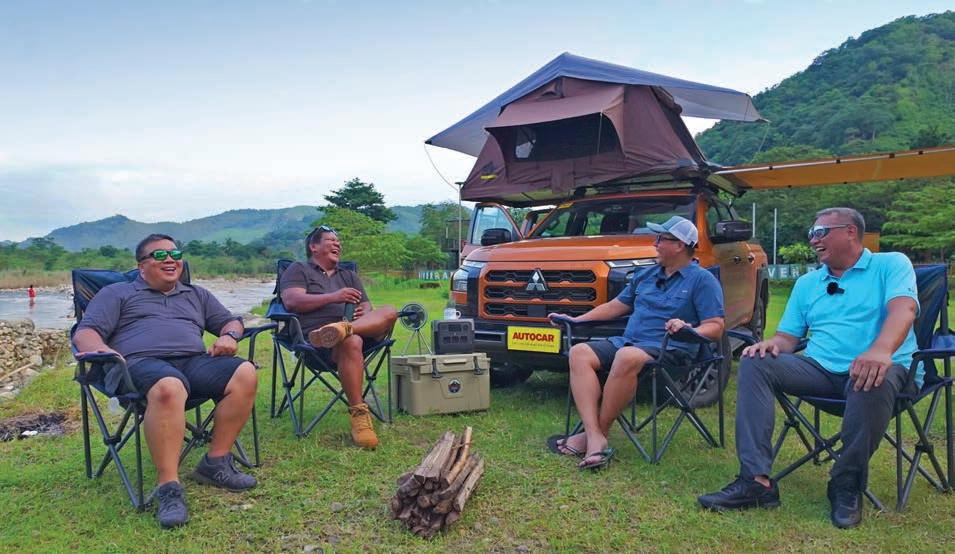




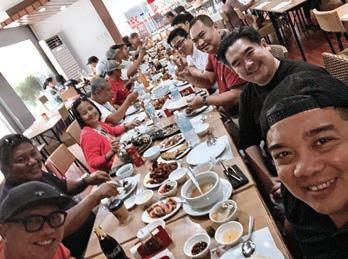
A fitting last episode with Mitsubishi and the awesome All-New Triton, this time we flew to Iloilo for some batchoy and beaches! Somehow that didn’t sound right, but that’s exactly what we did. We got on an early flight from Manila to Iloilo and arrived at around 6am. Our friends from Mitsubishi Motors PH had arranged with Grand Canyon Iloilo, one of their dealers to loan us a Triton for our drive to Caticlan. We had to wait for the dealership to open at 9am so we had breakfast at a coffee shop at the airport.
We headed to the Mitsubishi dealership and it was only about 30 minutes away from
the airport and just opened for the day when arrived. The accommodating staff made sure we were comfortable while they prepared our vehicles.
The Triton GLS 4x2 which Ira, Ronnie and myself would use and the recently launched X-Force for our crew to use as a camera car.
We met the management team of Grand Canyon Iloilo, Mr. Andrew Po who was in charge invited us to lunch at a restaurant called Y2K Talabahan Seafood Grill, and it was a sign of things to come. We ate quite a bit, and knew that there’d be quite a bit of eating on this trip. But if you’re ever in Iloilo you might want to check
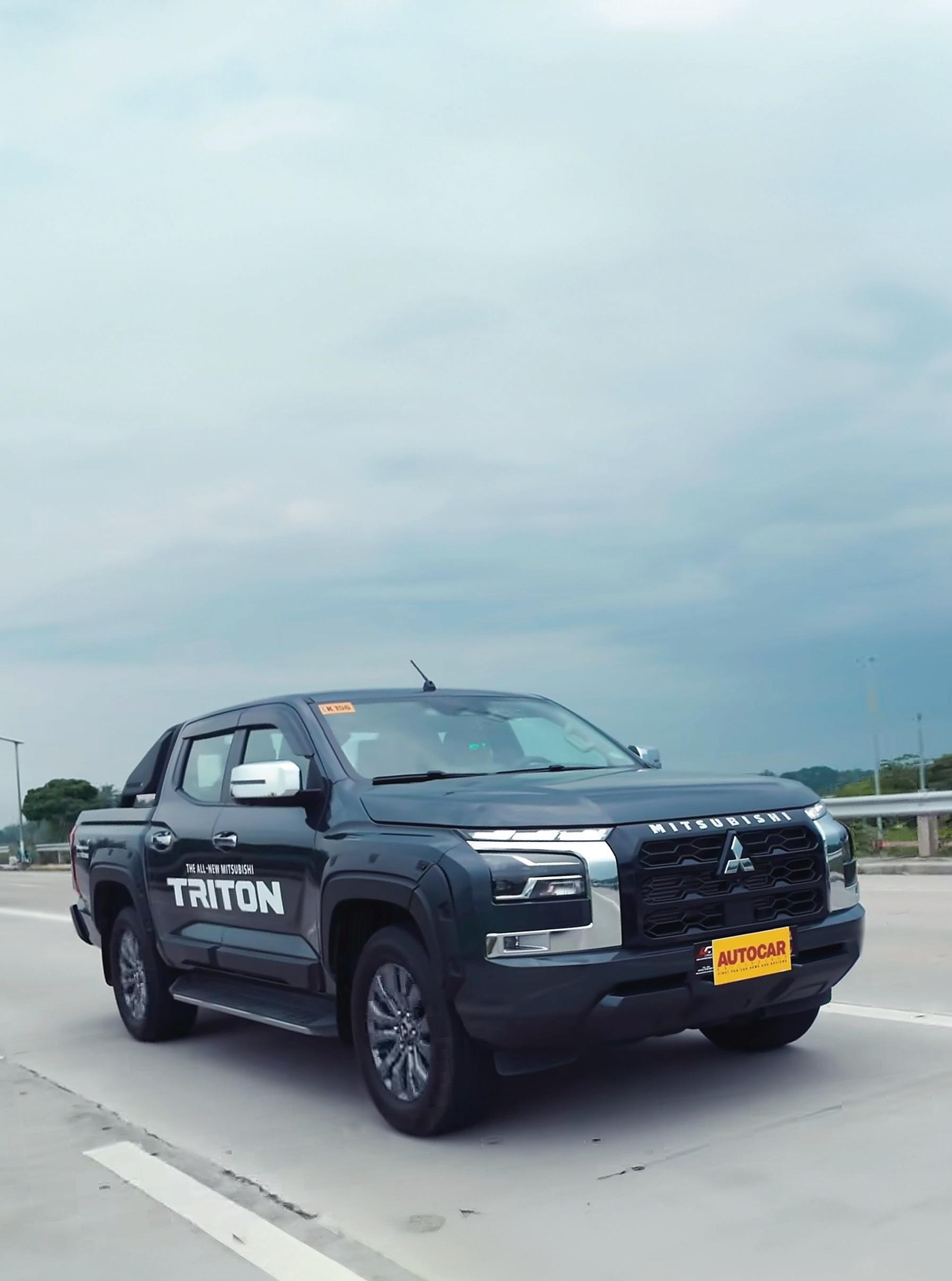


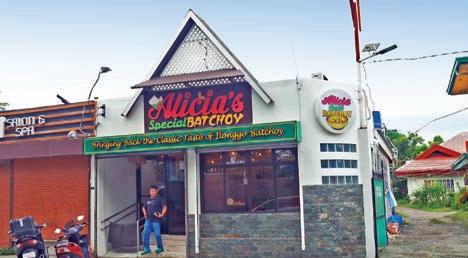
that place was GOOD!
After we had lunch, we loaded up our gear into the Triton GLS and went for a drive around Iloilo. One of our stops was the prominent landmark, Molo Mansion, located in the Molo district, where the pancit molo soup originated. It wasn’t a surprise to see students there on a field trip.
Not long after that we felt hunger pangs and it was about time for merienda, time to have some authentic La Paz Batchoy . This would be a treat as this would be our first time to try this in its place of origin. We found a restaurant called Alicia Special Batchoy that serves as authentic as we could find and we, our crew included enjoyed the big servings. Then, we finally hit the open road. We took the Iloilo East
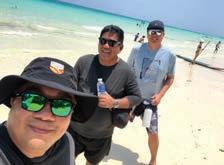


Coast Road which woud take us through Capiz to Caticlan. Its about a three and a half hour drive but took us a bit longer as we slowed down along the way through a torrential downpour.
We got to to Caticlan in about four hours. We parked at the alternate port called the Tabon Port, used when the swells around Caticlan’s Jetty Port are rough.
Our lunch host, Mr. Andrew Po kindly took care of our transfers to and from the Island. We arrived a little after 8pm and the friendly staff from Mandarin Bay took us to Boracay island and shuttled us to our Air BnB which was a short walk away from the main beach at Station 2. We walked out to dinner and called it a day.
The next day, we got
up bright and early and again shuttled by the awesome guys from Mandarin Bay to the port where they brought us back to Caticlan’s Tabon Port. We went for drive around Caticlan, and we visited a secluded white sand beach nearby called Hinugtan Beach ideal if you want to be away from the crowds and the have a beach all to yourself.
We had an awesome buffet dinner at Mandarin Bay and again, we’d lilke to thank Mr. Andrew Po and his awesome team for being so accommodating and really taking good care of us. Of course we spent the rest of our spare time at the beach as there really isn’t much else to do in Boracay. This was around June and by

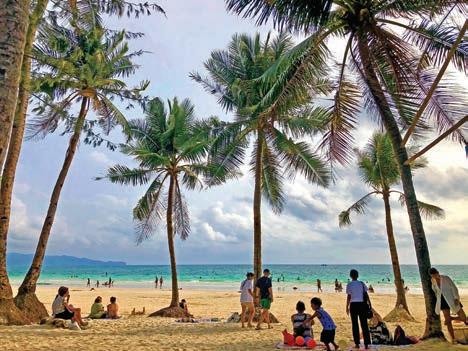
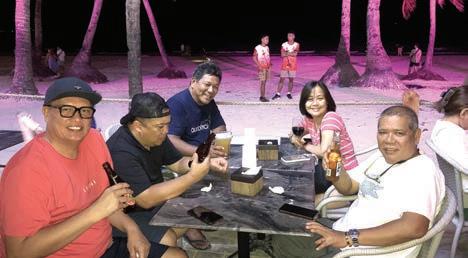
this time, the algae that usually appears in the shallow waters is gone. And that in a nutshell is the kind of mischief we got into on road in the All-New Mitsubishi Triton.
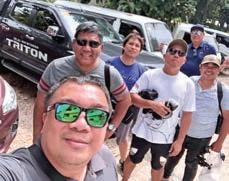

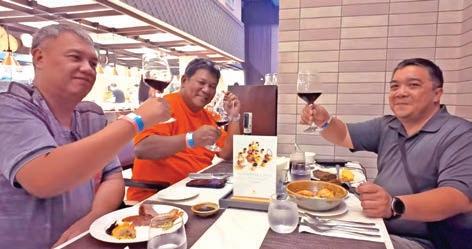
A road trip with friends is always fun, even more so with a capable vehicle like the Mitsubishi Triton pickup. If you want to catch these episodes, you can find it on our Facebook page https://www.facebook.com/ autocarphilippines and our Youtube page https://www. youtube.com/@AutocarPhilippines.


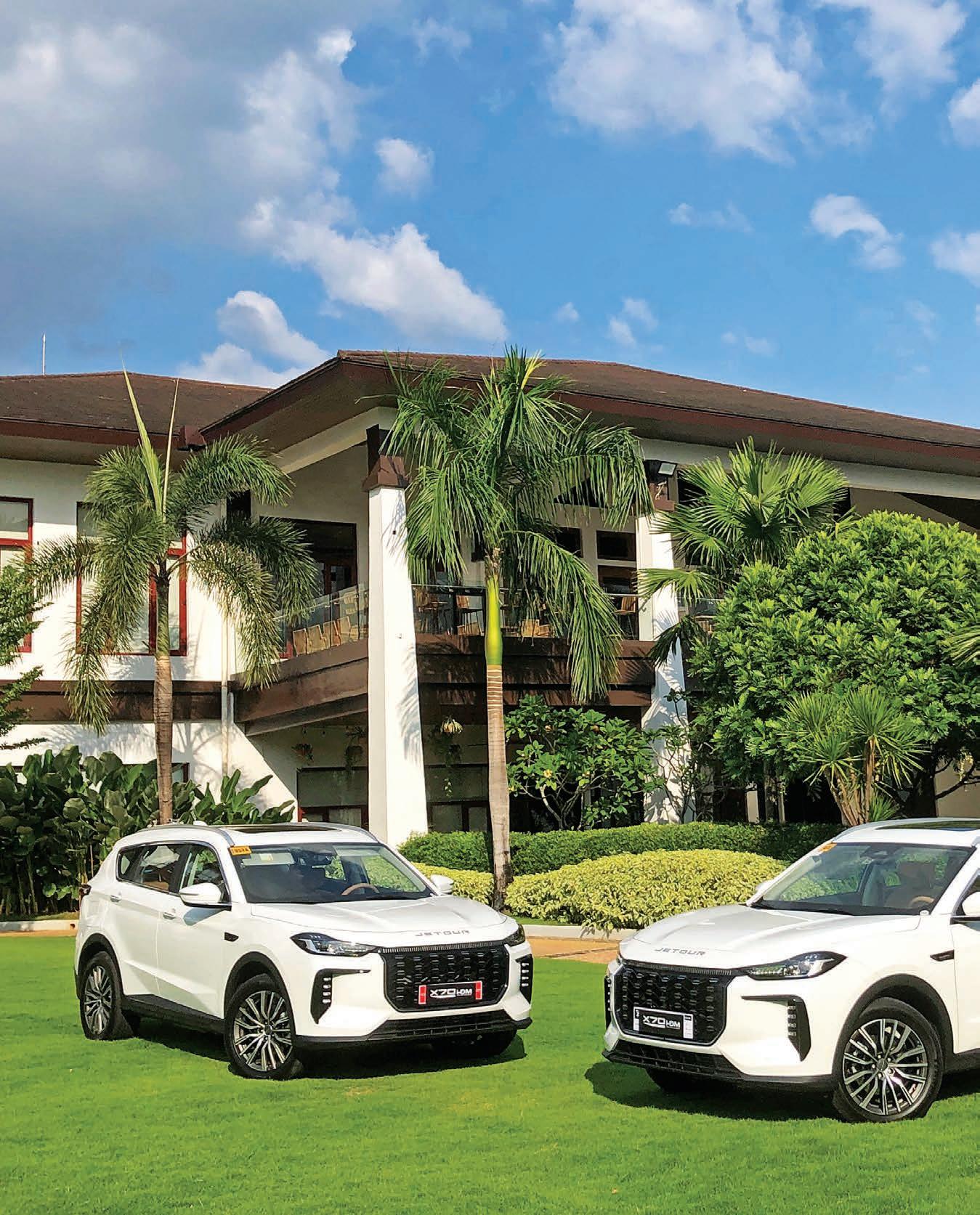

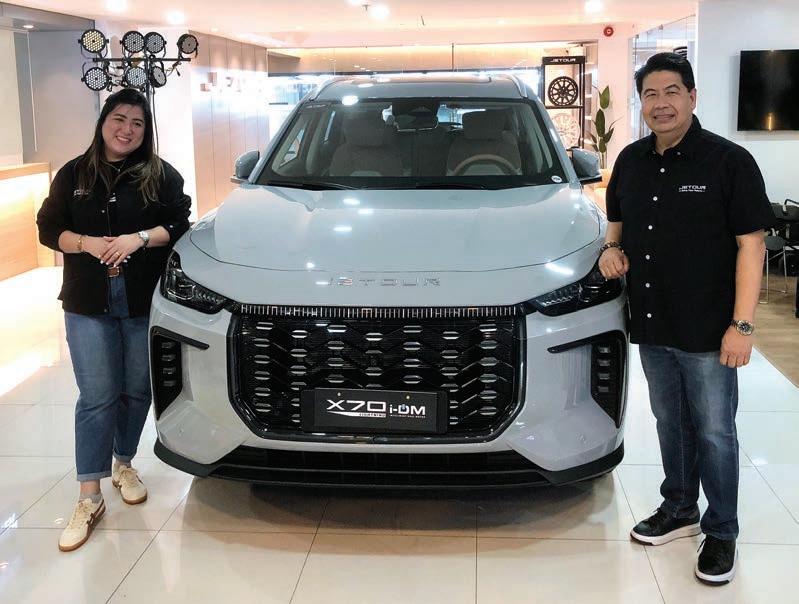
Not long after a new vehicle’s launch, we get first dibs on a drive to a nice destination to get a feel for the vehicle. On this drive we took Jetour’s latest offering, the newly launched X70 Lightning i-DM, a Plug-in Hybrid Electric Vehicle or PHEV. With a range of 1200 kilometers on one full tank of gas combined with its electric drivetrain charged to 100%, you also have the option to use only electric, which makes it a dual option vehicle. And it has a vehicle-to-load (V2L) system capable of supporting up to 6.6 kW of power.
Randy: Jetour Auto Philippines Inc. (JAPI) recently hosted a media drive to experience the vehicle’s intelligent dual-motor technology and other advanced features. The destination? The luxurious Acea Subic Beach Resort.
Neil: We met up early with other media at the Quezon Avenue showroom of Jetour as our start off point. After breakfast, we were split into driver teams and I was partnered with our new guy, Randy. We hit the road knowing we’d experience some rush hour traffic as we
made the short turn from Quezon Avenue to the Skyway 3 to make our way to NLEX and start hitting highway speeds.
The exterior on this updated X70 has a more aggressive look than the rest of the X70’s in Jetour’s lineup, with height adjustable headlights and up front you have a large grille with daytime running lights (DRL). This illuminates the left and right edges, and the lower part of the grille making it resemble a smile, giving it a distinct look in the dark. There are also a vertical row of DRLs on both edges of the bumper embedded in what look like faux air intakes, accented by piano black.
Around the rear is a revised tail light cluster layout, with a red led bar that spans the electronic tailgate above the new led brake and sequential turn signals. There is a protective engine bottom plate, and it rolls on 19” alloy wheels wrapped in 235/55’s and of course it has charging ports since it is a PHEV. It’s equipped with GBT AC and DC charging ports where the DC can charge from 20-80% in about 25 minutes.
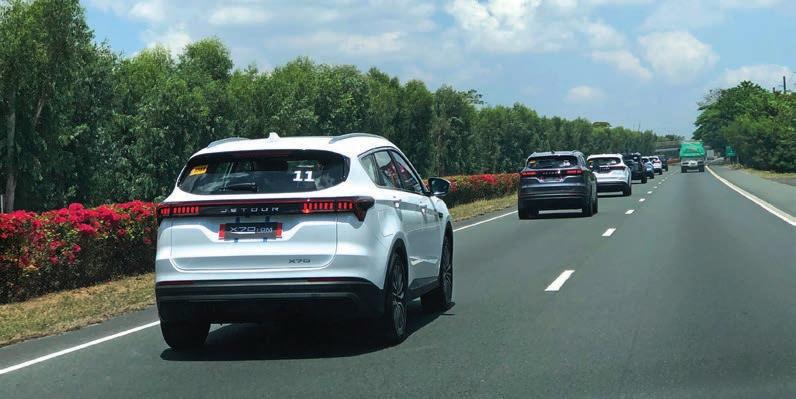

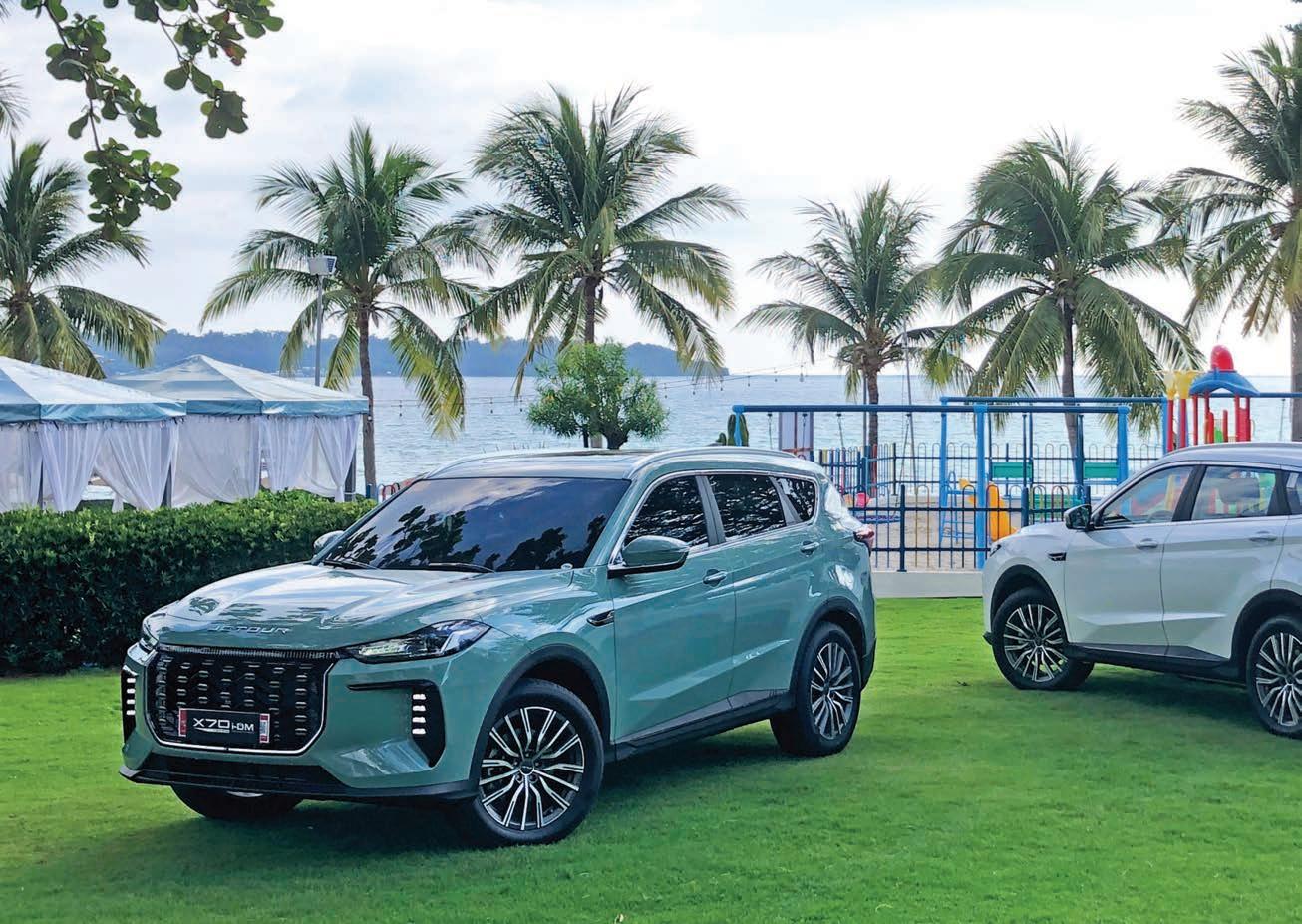
A key highlight is the availability of two interior color theme options. Assigned to our group was the Coral White version with Mocha Brown/Off White/ Silver interior theme. The ergonomic leather-wrapped seats have the Mocha/White color combination seats and are also ventilated. The Mocha/White color combination extends further to the dashboard, steering wheel, door sides, and center console. The Silver Metallic trims are all over the right places, adding more accents.
Entering and starting the X70 Lightning i-DM is keyless and easy, upon entry the cabin is spacious, made to feel even more so with the 62-inch panoramic sunroof.
There’s the 4-way adjustable multifunction steering wheel, and the 10.25” LCD instrument cluster, combined with the 10.25” infotainment and vehicle settings touchscreen display, making it look like a 20.5 inch display panel. It has an electronic gearshift handle and the air conditioning is adjusted via a 9” touchscreen with knobs.
The doors lock automatically when you start to move, and if you have windows that are open when you leave the vehicle, they automatically close when you lock the car. There’s a wireless 50W phone charger, and if
you like the sound coming from the premium 8-speaker Sony audio system, you’ll like the rhythmic intelligent ambient lights that give a soothing glow about the cabin. The infotainment also has Mobile Phone Mirroring.
Under the hood is a turbocharged 1.5-liter direct injection petrol engine that puts out maximum power of 115Ps with 220Nm torque, this is mated to a 6-speed 2DHT (Dedicated Hybrid Transmission). This is in addition to its Dual drive Permanent Magnet Sychronus Motors powered by a 19.43 kWh battery which puts out maximum power of 266Ps with 369Nm of torque. The hybrid and EV modes are driver selectable, and the energy recovery strength is also driver adjustable. The X70 Lightning i-DM has a full EV range of 110km (CLTC) / 85km (WLTC) and when electric and ICE are combined, it has a fuel consumption (WLTC) 18.2 km/liter and can be driven to a range of range 1200kms.
Apart from the standard active and passive safety features, the X70 Lightning i-DM comes standard with a suite of advanced
driver assistance systems (ADAS). Adaptive Cruise Control (ACC), Forward Collision Warning (FCW), Advanced Emergency Braking System (AEBS), Lane Keep Assist (LKA), Lane Departure Warning System, Traffic Jam Assist, High Beam Assist, Blind Sport Detection, Lane Change Assist, Door Open Warning, Rear Cross Traffic Alert (RCTA) and Rear Collision Warning (RCW).
Along with the ADAS, this X70 has the following safety features as standard, Driver and Passenger Airbag, 3-point seatbelts for all 7 occupants, Anti-Lock Braking System (ABS), Electronic Brake force Distribution (EBD), Electronic Brake Assist (EBA), Traction Control System (TCS), Electronic Stability Program (ESP), Hill Start Assist Control, Brake Autohold, Hill Descent Control (HDC) and ISOFIX Child Seat Anchors. Tire Pressure Monitoring System (TPMS).
The X70 has some convenience features, a 360 camera with 180 degreee transparent chassis, Front / Rear USB charging ports–Both Type A and C, Electric Power Steering (EPS), tire repair fluid, tire inflator and a Home EV charging adapter and a V2L (Vehicle to Load) plug/outlet accessory.

Neil: The X70 Lightning i-DM is an ideal vehicle for road trips, spacious, well appointed and comfortable. Although we didn’t get any fuel economy figures which may have been interesting, but that just gives us an excuse to take it on another long drive to see if we can do about a thousand kilometers. You can use it in the city in EV mode and conserve your petrol, and on weekends use it on long road trips in it’s hybrid mode where the vehicle seamlessly switches between ICE and electric and combined, completely removing range anxiety associated with electric vehicles.
Randy: Behind the wheel, the X70 Lightning i-DM is refreshing to drive. The vehicle was well planted and stable throughout the long stretches of the freeways. Steering feedback was also good, particularly on curves. Considering more than adequate power at our disposal, acceleration was swift and smooth. Reaching high-speed limits and passing slower vehicles was a walk in the park. As for the vehicle’s PHEV system, we like the ability to switch between EV and HEV modes depending on the battery charge level. Every time the level reached more

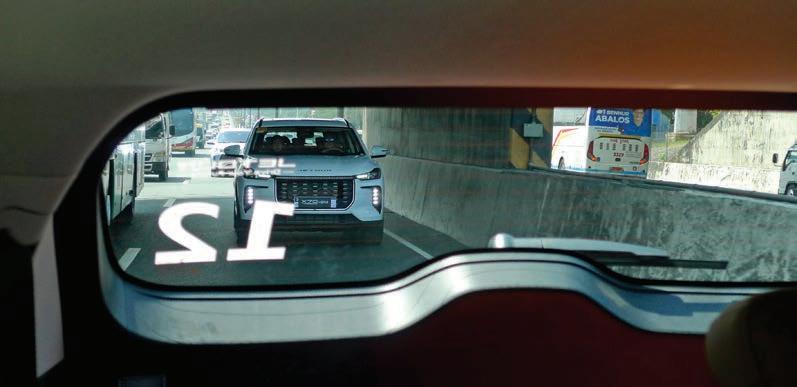
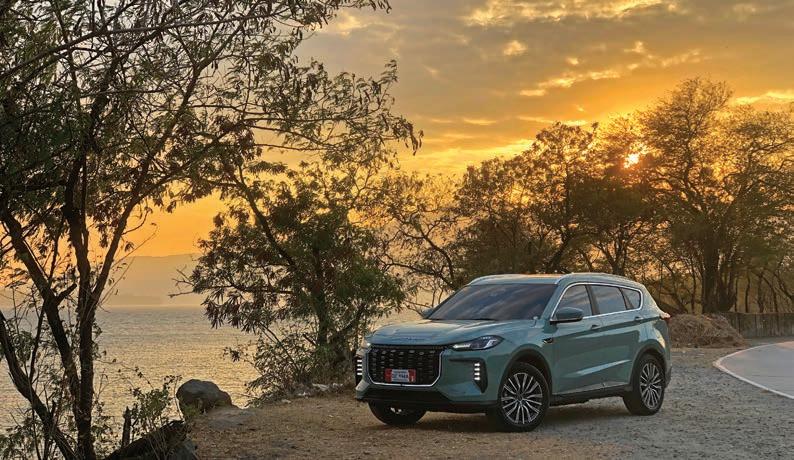
than 50 percent, we switched to EV mode until the level went down to 26 percent, at which point the HEV mode automatically took over. Doing so enabled the vehicle to maximize fuel efficiency.
The damping system leaned toward comfort with the right amount of firmness for agility. On stretches, the light-themed interior added to the blissful feel, plus the crisp sound of the Sony audio setup, thanks to the good NVH. Overall, our steady and effortless, over 150-kilometer drive, felt shorter in distance and made for a relaxing
drive.
The Jetour X70 Lightning i-DM is priced at PHP1,648,000 placing it well below some of the other seven-seat suvs in the market and it is covered under the the one-million kilometer or 6 year warranty, a 10-year engine warranty and an 8 year warranty on it’s battery.
Neil: By the time we arrived at our destination, Acea Subic Beach Resort, we barely made a dent in its fuel and we had an easy time of it getting there. Not bad at all.
NEIL PAGULAYAN & RANDY S. PEREGRINO
t was drizzling on the morning when we met up early at the MG showroom in Greenhills along EDSA. After a hearty breakfast and quick briefing, we were split into our car groupings and loaded up our gear into our designated MG G50’s. This is MG’s contender in the popular 7-seat MPV category. And we were going to take it for a quick drive to Tagaytay for lunch.
You’ll notice it has a more upright boxy appearance that it’s competitors, and this allows it to have two seating configurations, an 8-seat (1.5T MT STD / 1.5 DCT COM) and the 7-seater variant (1.5T DCT LUX). On this drive we were assigned the top of the line LUX variant. There’s a tasteful amount of chrome in the front grille with a mix of chrome and gloss black with a large prominent airdam underneath. It has Auto On/Off LED headlights with Follow Me Home and integrated DRLs. From the side, it’s not just plain sheet metal panels, there are sculpted character lines and you’ve got a floating roof look with blacked out B,C and D pillars. Around back you’ve got LED taillights and a power tailgate. It has power fold and adjust side mirrors with turn signals, It rolls on 17” alloy wheels wrapped in 215/55’s and is also equipped with roof
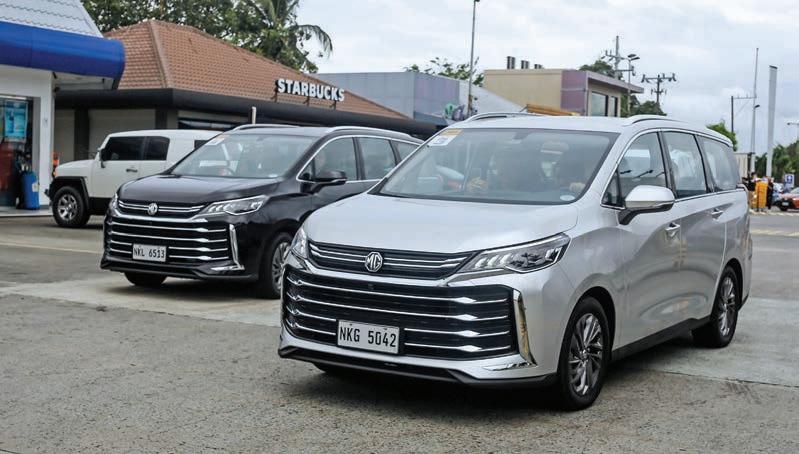
rails. It’s equipped with a highmount third brake light interated into the rear spoiler on the tailgate.
The G50’s interior is spacious, you get in with keyless entry, it has a push start engine ignition. You’ll notice that the surrounds of the instrument cluster and air vents have a
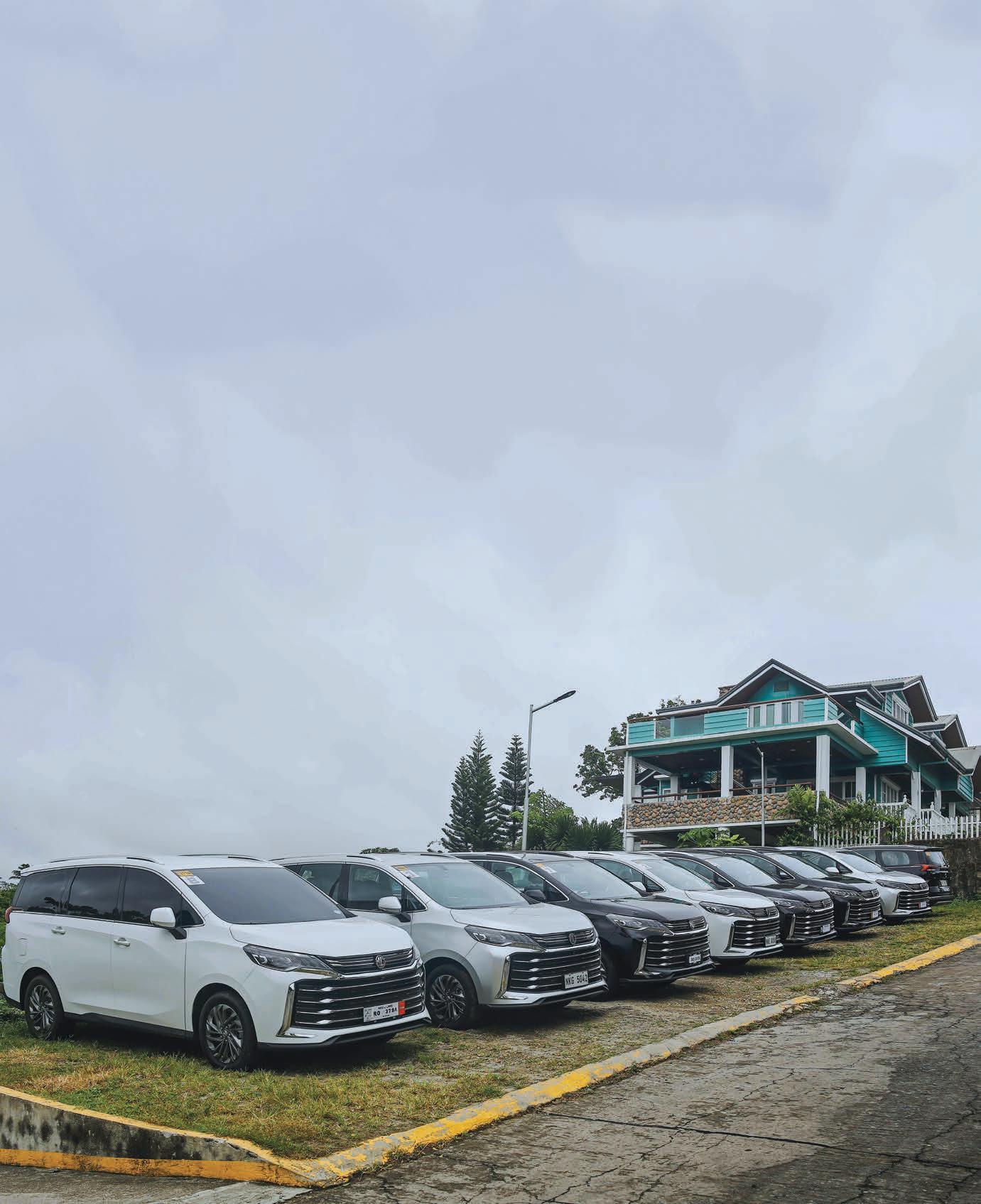
trapezoidal scheme in brushed aluminum to them. Between the analogue gauges in the instrument cluster is a multifunction information display (MFID). The tiltadjustable steering wheel is leather wrapped with controls for the infotainment, MFID and cruise control. Seat material is faux
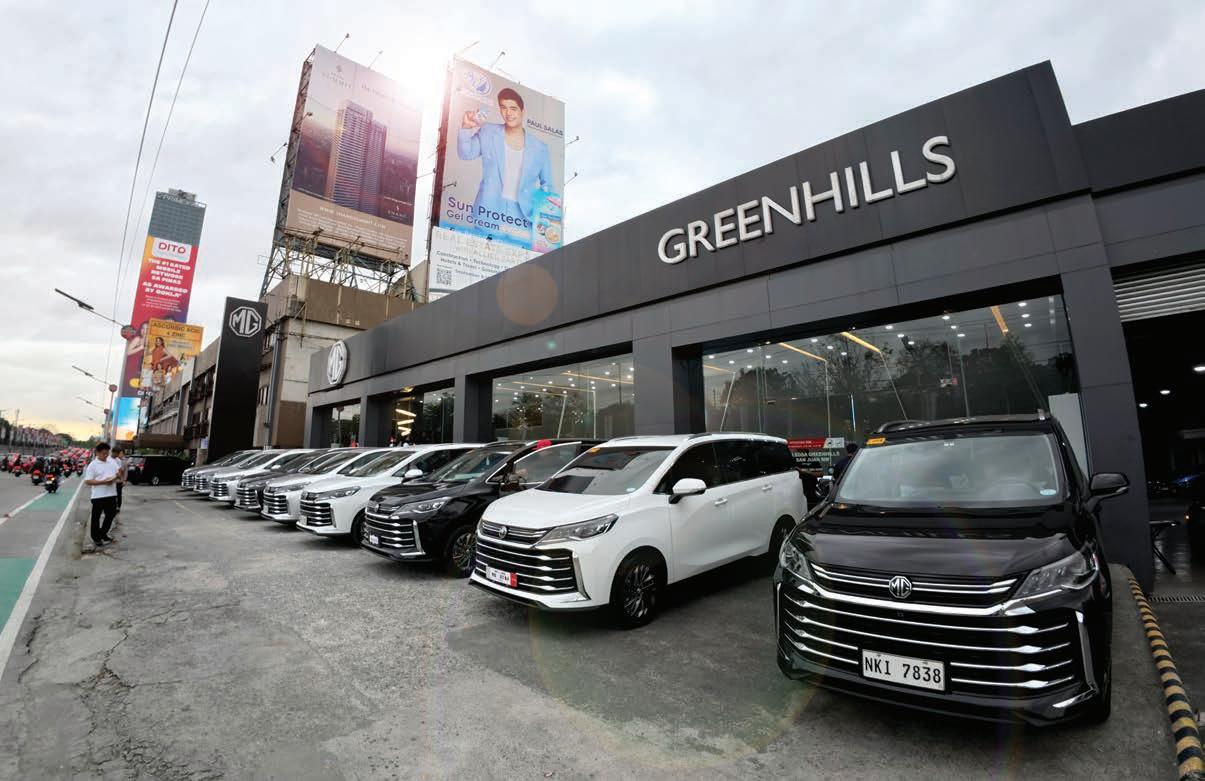
leather, the driver seat is electric 6-way adjustable and our variant had captains chairs in the second row and a 3-seater bench seat in the third row. The 6-speaker Infotainment has a 12.3” touchscreen with USB, Bluetooth connectivity, Apple CarPlay and Android Auto.
Powertrain
Under the hood is a EURO 5 compliant turbocharged 1.5L gasoline engine that puts out max power of 180Hp with max torque of 285Nm. This is mated to a wettype 7-speed dual-clutch transmission and drives the front wheels.
The MG G50 Plus is equipped with front and side airbags, Anti-lock braking system (ABS), Vehicle Stability Control (VSC), Hill Start Assist (HAS), 3-point seatbelts for all occupants, ISOFIX Child restrain system, reverse camera, back-up sensor, tire pressure monitoring system (TPMS) and vehicle security system.
Impressions
The MG G50 PLUS LUX punches above it’s class, having an upscale feel over it’s competitors. It’s 7 speed DCT is smooth in city driving where dual clutches tend to be jerky in stop and go traffic, but this feels like your conventional auto transmission. Its ride is composed, and it’s suspension
smoothens out the bumps. There’s more than enough power on tap to get around the city and enough to get us to Tagaytay.
With prices starting at PHP1,048,888 for the MT STD and PHP1,198,888 for the mid trim both 8-seaters, the top of the line 7-seat priced at PHP1,288,888 sits at the middle of the field of MPV’s in the market making it a decent choice if you’re in the market for this type of vehicle.
NEIL PAGULAYAN
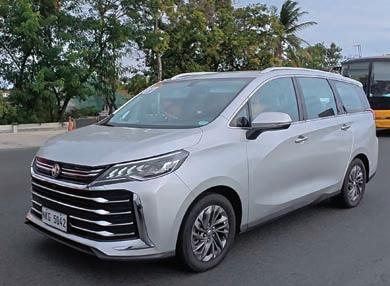
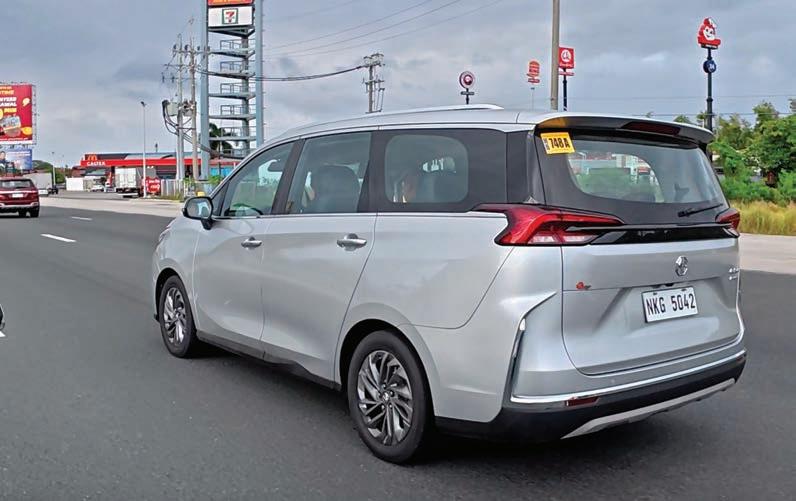
Unforgettable Adventures and Epic Scenic Escapes
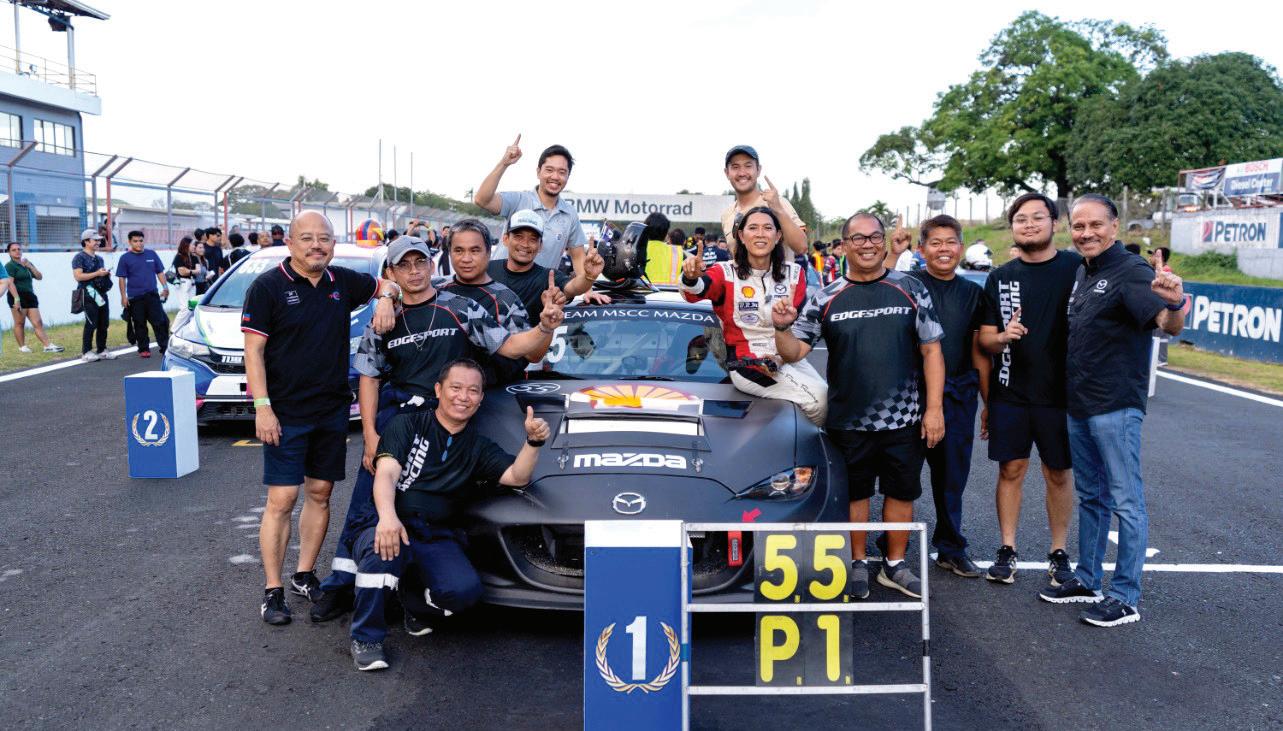
he 2025 Makabayan Endurance Race Challenge commenced with a strong showing from Team MSCC Mazda Miata Spec, setting the tone for a highly competitive season. The team’s #55 Mazda Miata Spec car delivered an exceptional performance during the Kagitingan Cup, the first of the three-round series, by taking top honors in both the 2-Hour and 4-Hour Race Challenge categories.
Built under the guidance of Angie Mead King, the race car was designed and engineered specifically for endurance racing. Despite retaining its stock 2.0-liter Skyactiv-G engine, the vehicle clocked 63 laps in the 2-Hour Race with a best time of 1:49.8, and 120 laps in the 4-Hour Race with a fastest lap of 1:53.7.
This performance is the result of a threeyear effort to enhance the already capable Mazda MX-5 platform, known globally as the most-raced car. Angie focused on significant weight reduction and speed improvements.
This year’s iteration includes a carbon fiber body kit, Brembo front brakes, Cusco coilovers and suspension upgrades, a new rear differential, a HGT 6-speed sequential transmission, and performance tires. gearbox alone contributed to an improvement of up to 4.5 seconds per lap, while the lightweight body kit improved agility and efficiency on the track. Angie highlighted that the motivation behind the upgrades was simple: to improve year after year and raise the standard of performance for the team.
Setbacks during preparation and up to race day were met with determination—a reflection of Mazda’s “Never Stop Challenging” philosophy. During qualifying, the car achieved an impressive lap time of 1:47.969, despite limited testing time.
The success of the MSCC Miata Spec project is a testament to collaboration. Key contributions came from Mazda Philippines, team principals Windy Imperial and Steven Tan, Race Engineer Edgen Dy-Liacco, and
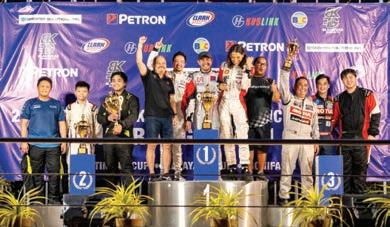
drivers Tyson Sy, Juha Turalba, and Milo Rivera. Mazda Japan’s Head of Motorsport, Takahiro Kobayakawa, also offered technical input that contributed to the vehicle’s development.
Looking ahead to the remaining rounds scheduled for June 14–15 and November 29–30 at Clark International Speedway, Team MSCC is preparing further refinements aimed at extracting even more performance from the platform.
Bermaz Auto Philippines, Inc. (Mazda Philippines) is the exclusive distributor of Mazda vehicles and parts in the Philippines.
Toyota GAZOO Racing’s campaign at the 93rd 24 Hours of Le Mans concluded with a hardfought yet disappointing result, following an intense and competitive race against a formidable Hypercar field.
A record crowd of 332,000 witnessed 21 Hypercars representing eight manufacturers battle for endurance racing’s most prestigious prize. Marking the 40th anniversary of Toyota’s debut at Le Mans, the team demonstrated strong determination through strategic execution and consistent driving, but ultimately could not deliver the desired outcome.
The #7 GR010 HYBRID, driven by Mike Conway, Kamui Kobayashi and Nyck de Vries, overcame early contact and a pit lane penalty to recover 10 positions and finish sixth overall. Meanwhile, the #8 GR010 HYBRID of Sébastien Buemi, Brendon Hartley and Ryo Hirakawa led the race during the night and remained competitive until a mechanical issue resulted in significant time loss. The car ultimately finished 16th, seven laps behind the leaders.
Despite a strong team effort and moments of promise, TOYOTA GAZOO Racing was unable to match the pace of the frontrunners and saw its winning ambitions halted by mechanical setbacks and fierce competition. The #8 car lost crucial time

when a component failure caused the frontleft wheel to detach, forcing repairs and ending its podium hopes.
Both crews pushed relentlessly, with Kamui Kobayashi narrowing the gap to the #12 Cadillac before a late penalty sealed a sixth-place finish for car #7. The team now shifts focus to the next round of the FIA
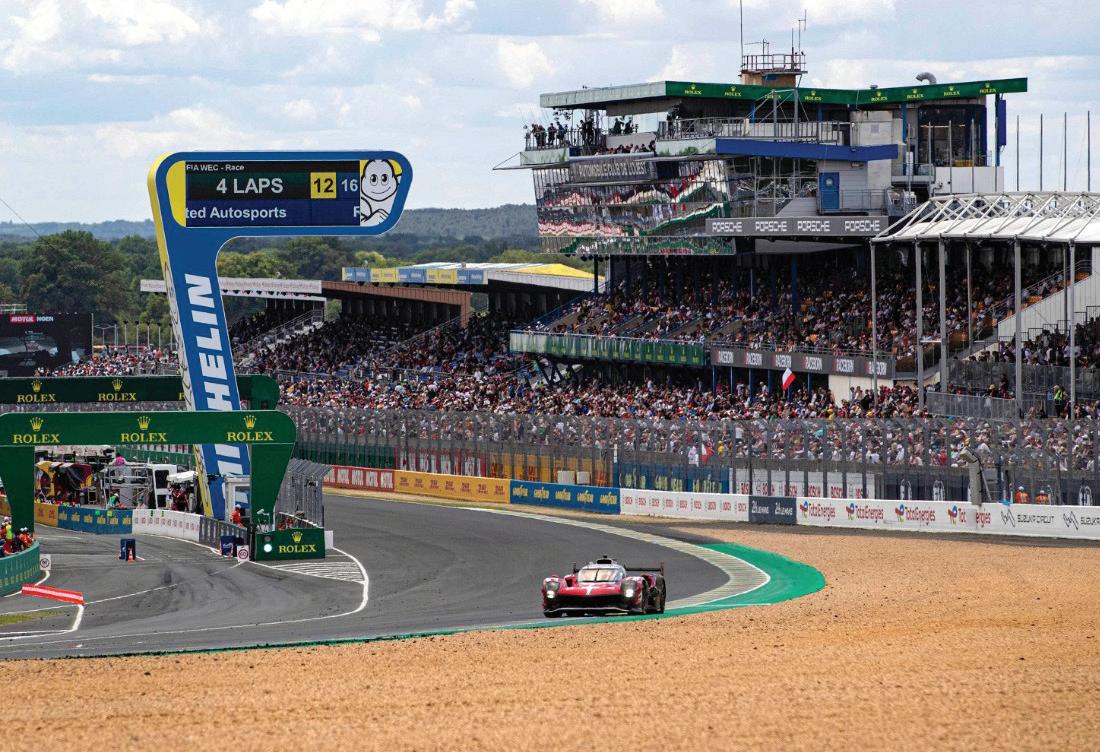
World Endurance Championship, the 6 Hours of São Paulo, on 13 July.
Quotes:
Kamui Kobayashi (Team Principal & Driver, #7):
“We gave it everything, but this year it wasn’t enough. Losing to Ferrari three times is not acceptable to me. We will return next year stronger and more determined.”
Mike Conway (Driver, #7):
“From 16th to sixth is a decent recovery, but not the result we were aiming for. We just lacked the performance to challenge for the win.”
Nyck de Vries (Driver, #7):
“We fought hard but didn’t have the speed to contend. It’s a difficult result to accept, but we leave without regrets.”
Sébastien Buemi (Driver, #8):
“A disappointing race overall. We stayed clean and consistent, but a mechanical issue ended our chances. We’ll analyse everything and improve for next year.”
Brendon Hartley (Driver, #8):
“We gave it our all. Even with limited pace, we were fighting for podiums before the issue. The whole team put in a massive effort.”
Ryo Hirakawa (Driver, #8):
“It was a tough 24 hours. We’re grateful for the support and will carry the lessons forward to the next race and beyond.”
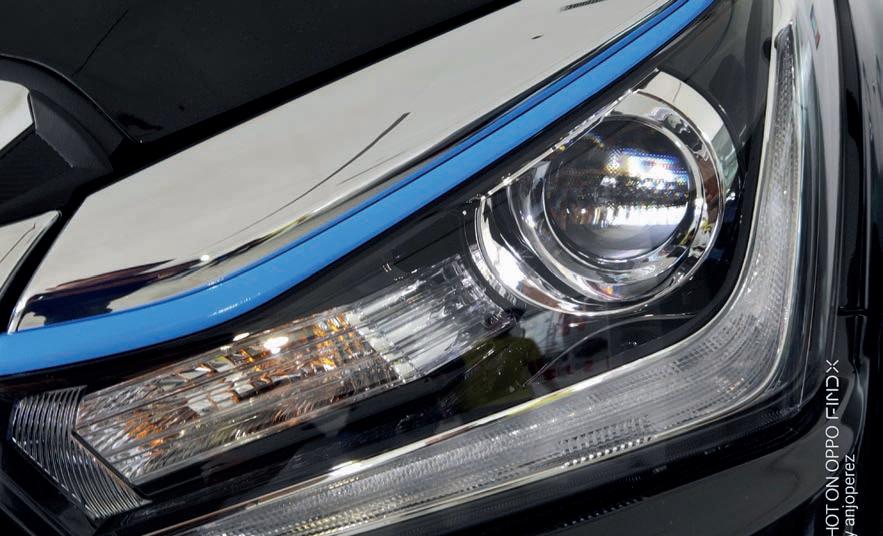

























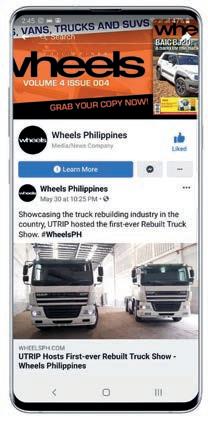
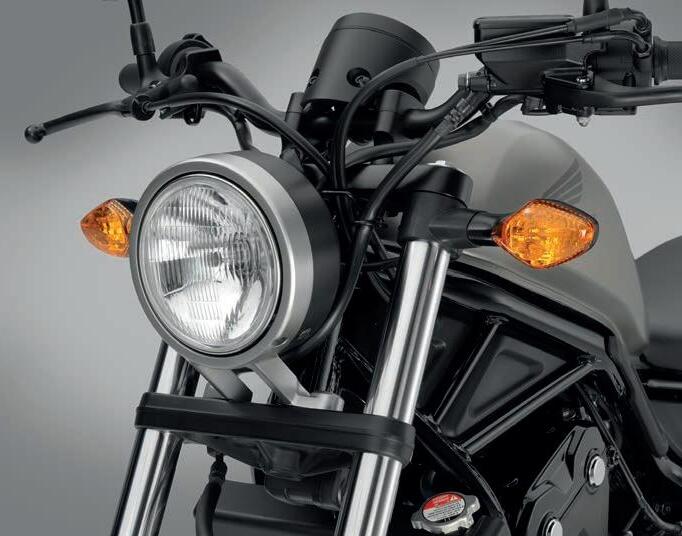



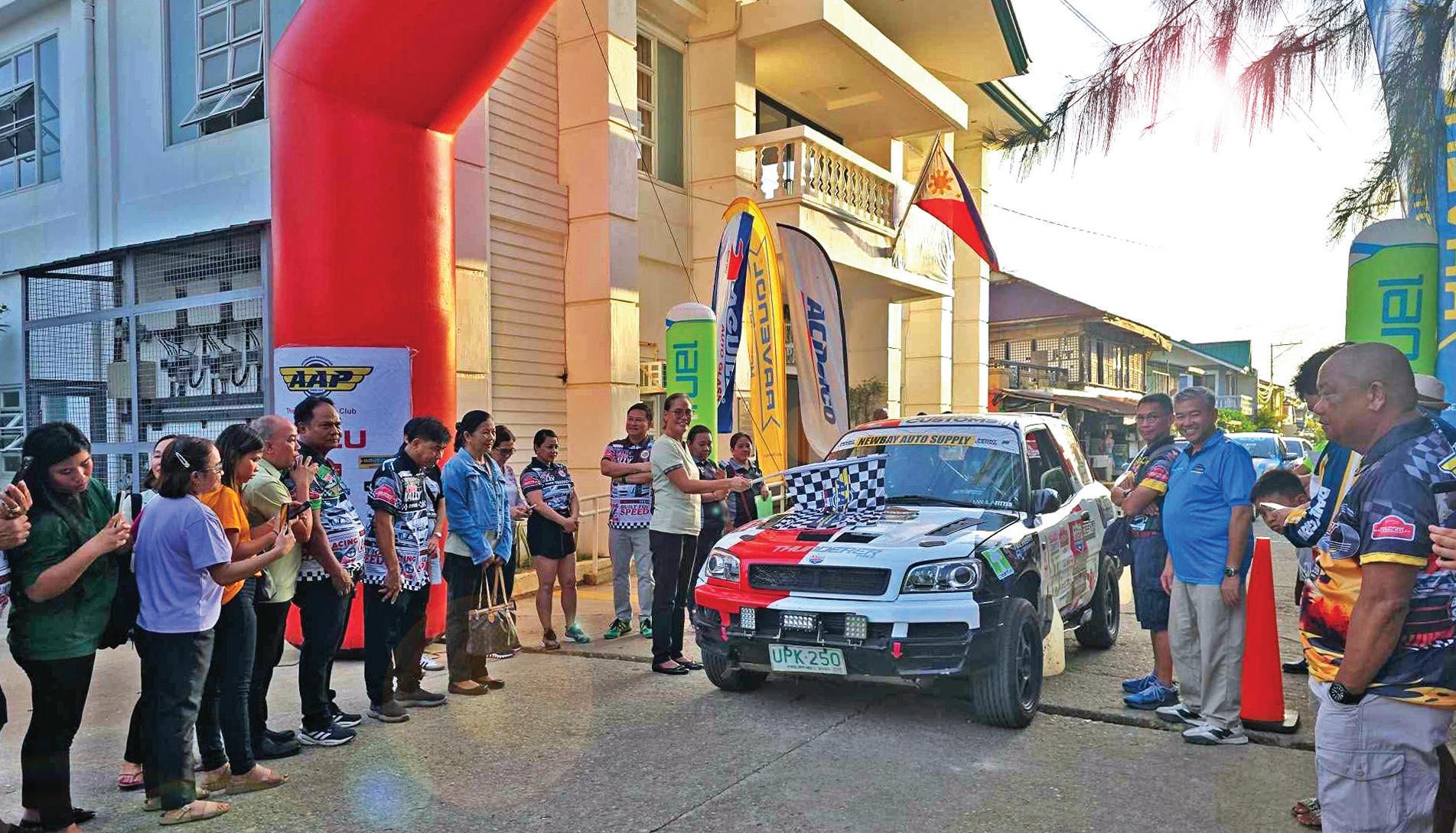
Words by Anjo Perez
or decades, rallying in the Philippines has taken place across familiar terrain—Luzon’s gravel backroads, Mindanao’s winding highways, and the odd provincial bypass turned special stage. But this year, the sport took a bold, historic leap. On June 27 and 28, the island municipality of Lubang in Occidental Mindoro— better known for its laid-back beaches and countryside quiet— transformed into a high-speed battleground for the first AAPsanctioned inter-island rally in Philippine motorsport history.
This groundbreaking event, dubbed the AAP Rally of Lubang, marked Rounds 2 and 3 of the 2025 Philippine National Rally Championship (PNRC). It was made possible through the joint efforts of the Automobile Association of the Philippines (AAP) and the Philippine Rallycross Series, in cooperation with the Municipal Government of Lubang under the leadership of Mayor Mike Orayani. Also serving as a featured stop of the Okada Manila Motorsport Carnivale 2025, the rally brought together an eclectic mix of local motorsport culture, international
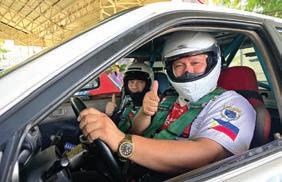
standards, and true island hospitality.
What set this rally apart wasn’t just its scenic setting or challenging stages—it was the way the entire community embraced it. From the moment the rally cars rolled off the Rollon/Roll-off ferry from Nasugbu, Batangas, the island came
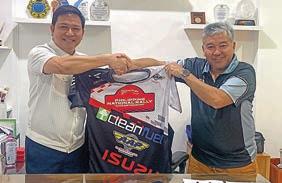
alive. The normally sleepy port area buzzed with excitement. Students skipped class to watch the cars unload. Tricycles slowed down to trail behind rally support vehicles. It wasn’t just a motorsport event—it was an island-wide celebration. The rally’s format was demanding: twelve special
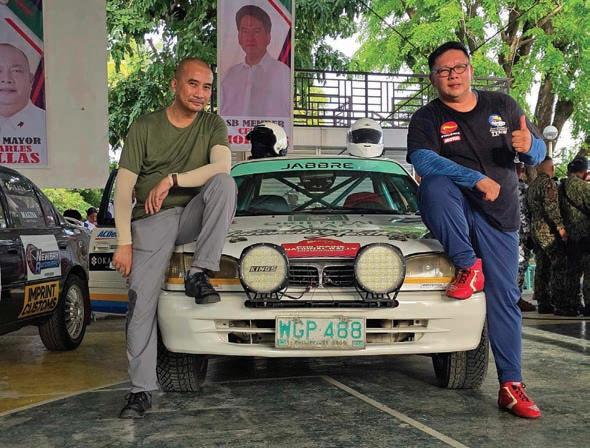
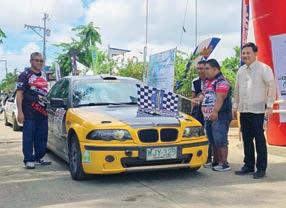
stages split across two legs, all run on fully paved public roads that snake through Lubang’s coastal edges and upland barangays. The surface may have been tarmac, but don’t mistake that for easy. The tight, technical turns, varying road widths, and sudden changes in elevation kept drivers on edge from start to finish. Some stages ran over 13 kilometers long, requiring deep concentration and precise pace notes.
The course itself was unlike any rally stage seen before in the country. It included portions of the national highway, sections of barangay roads that cut through farmlands, grazing pastures, and even residential clusters, all lined with spectators eager to witness the action. And what made it even more impressive was how seamlessly it was executed. Stage closures, marshaling, and crowd control were handled with surprising efficiency, thanks to the joint efforts of AAP, the local government, barangay officials, and dozens of volunteers.
A total of 17 cars competed, representing a range of classes and teams from across the archipelago. From modified classics to modern rally-prepped
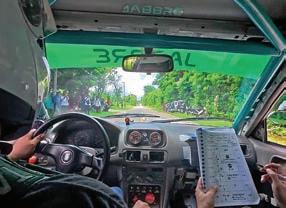
sedans, each entry faced the same challenge: navigating unfamiliar, twisting roads at full speed while the entire island watched and cheered. The conditions varied, too. While the skies were clear during reconnaissance runs, intermittent rains during the competition threw an extra curveball into tire choices and stage strategies. Yet, despite the unpredictable weather, the event ran without a single major incident—an impressive feat given the complexity of logistics involved in staging an inter-island event.
But beyond the racing, what truly stood out was the unprecedented support from the people of Lubang. Entire families stood roadside from sunrise to dusk, waving banners, snapping photos, and shouting encouragement to drivers they had just met. Kids stood on plastic chairs or sat on their parents’ shoulders just to catch a glimpse of a car as it roared past. At nearly every barangay junction, residents set up makeshift pit stops, offering snacks and drinks to the rally crews and support staff.
“The reception we got here was overwhelming,” said Louie Camacho, the current
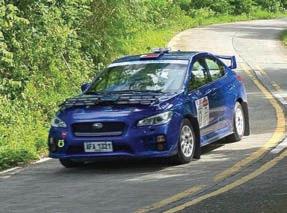
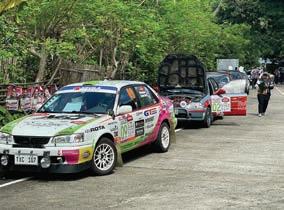

top-seeded driver in the PNRC. “This wasn’t just a rally—it felt like a festival. Every turn, every stage, you could feel the community rooting for you. It’s not something we’ve ever experienced at this level before.”
The hospitality extended off the stages, too. On the final night, Mayor Orayani hosted a town-wide thanksgiving dinner at the covered municipal plaza, inviting all rally participants, officials, and volunteers to join the celebration. What began as a formal gathering quickly turned into a spirited community fiesta. Locals danced, drivers swapped stories, and everyone shared food under the town’s festive lights. It was a fitting close to a weekend that had not only brought motorsport to Lubang— but had written the town into rally history.
“This rally has shown the world what Lubang can do,” said Mayor Orayani, visibly beaming with pride. “We are honored to have hosted this milestone for Philippine motorsports. And we are more than ready to do it again.”
AAP CEO Mark Desales and AAP Motorsports Head Rikki Dy-Liacco were both full of praise for the local government
and the people of Lubang. They acknowledged that staging an FIA-sanctioned rally outside of the main islands was no small feat, but the island’s smooth roads, scenic routes, and overwhelming community support made it the perfect venue for something truly special. Both hinted that this could be the start of a new rally tradition—one that brings national motorsport action to more of the Philippines’ 7,641 islands.
The AAP Rally of Lubang wasn’t just another stop on the calendar. It was proof that motorsport doesn’t need a massive stadium or international circuit to make an impact. With enough heart, cooperation, and good roads, even a small island like Lubang can deliver a worldclass rally experience.
As the last service truck rolled onto the ferry and the engines cooled, one thing was clear: Lubang didn’t just host a race. It opened a new chapter for Philippine rallying—and it did it with style, smiles, and an island full of fans already asking when the next one will be.
Because after this weekend, Lubang isn’t just a destination. It’s a rally stage.

eely Motor Philippines is charging into its next chapter with electrified energy—quite literally. After a brief four-month hiatus following its brand relaunch last February, the company returned to the spotlight with the simultaneous launch of two new energy vehicles: the allelectric Geely EX5 and the hybrid Okavango Elite. The reveal was made during a dynamic event held in Quezon City, signaling not just a product update, but a strategic pivot for the brand in the local market.
The event also served as the official welcome for Sylva Yu, the newly appointed CEO of Geely Motor Philippines, who steps in for Will Wan (now reassigned to Malaysia). Yu now heads the local operations of Geely Motor Philippines Corp., a wholly owned subsidiary of Geely Auto International, and wasted no time unveiling an aggressive product roadmap.
“We’re entering a new chapter,” Yu declared, “with vehicles built for everyday life on Philippine roads—vehicles that offer real value, versatility,
and performance.” She added that three more models—two SUVs and a sedan—are slated for release this year, aligning with the company’s commitment to launching one new model every quarter in 2025.
Leading the charge—pun intended—is the Geely EX5, the brand’s first fully electric SUV to go on sale in the Philippines.
Based on the company’s Global Intelligent Electric Architecture (GEA), the compact five-seater EX5 is built for smart urban
mobility.
Measuring 4,615 mm in length with a generous 2,750 mm wheelbase, the EX5 offers a spacious interior wrapped in a sleek, modern design. It’s powered by a Permanent Magnet Synchronous Motor delivering 218 PS and 320 Nm of torque, drawing energy from a 60.22 kWh short blade battery that charges from 30% to 80% in just 20 minutes. Its WLTP-certified range is a solid 430 kilometers— enough for several days of city commuting between charges.
Engineered for safety and comfort, the EX5 features a
CTB (cell-to-body) construction for added crash protection and rigidity. Safety tech includes Level 2 ADAS, with features like adaptive cruise control, auto emergency braking, lanekeeping assist, a 360-degree panoramic camera, and a transparent chassis view— perfect for tight urban driving scenarios.
Inside, it’s as much a rolling lounge as a tech hub. Geely has partnered with Meizu Technology to develop Flyme Auto, the EX5’s proprietary in-car OS that seamlessly connects smartphones and smart devices to the car. The cabin houses a massive 15.4inch touchscreen, 13.8-inch HUD, and a 16-speaker audio system (with headrest speakers for the front occupants). Flush door handles, a panoramic sunroof, antibacterial materials, and front-row massage seats elevate the EX5 from mere EV to a luxury experience.
Though Geely has yet to announce local pricing, both variants of the EX5 qualify as official electric vehicles under the Philippine EV Incentives Act, making them eligible for green plates and zero excise tax.
Okavango Elite: The BestSelling SUV Goes Hybrid
Alongside its EV debut, Geely also pulled the covers off the updated Okavango Elite, now officially classified as a hybrid electric vehicle (HEV). This updated 7-seater retains its family-friendly utility while integrating a 48V mildhybrid system to reduce fuel consumption and emissions.
Under the hood is a turbocharged 1.5-liter 3-cylinder engine mated to an electric motor for a combined output of 193 PS and 300 Nm of torque. A 7-speed wet-type dual-clutch transmission handles gear shifts smoothly, with Eco, Normal, and Sport driving modes to match
different driving conditions.
Inside, the Okavango Elite features a redesigned dashboard anchored by a 12.3-inch digital instrument cluster and a matching infotainment screen with Bluetooth and Mirror Link. Premium touches include quiltstitched PVC leather seats with electric adjustment for both front passengers, a three-zone automatic climate control, and a panoramic sunroof that adds light and space.
Cargo capacity remains a strong suit, with 2,050 liters of space when the third and second rows are folded—perfect for road trips, airport runs, or even small business deliveries.
Safety hasn’t been compromised either, with the inclusion of six SRS airbags, electronic stability program, ABS with EBD, hill start and descent assist, tire pressure monitoring, and a 360-degree camera system with rear sensors.
Available now at a price of
P1,368,000, the Okavango Elite comes in white, black, and a sophisticated metallic gray.
What This Means for the Philippine Market Geely’s renewed push into new energy vehicles signals a clear strategy: to future-proof its lineup in a rapidly shifting automotive landscape. With both the EX5 and Okavango Elite, Geely is delivering on its promise to blend advanced technology with real-world practicality—and to do it with competitive pricing and premium features.
As Sylva Yu leads the company into its next growth phase, Filipino motorists can expect a steady rollout of innovative, electrified options that promise to change how we view—and drive—everyday vehicles. Whether you’re commuting through traffic or escaping the city on the weekend, Geely wants to be your ride into the future.
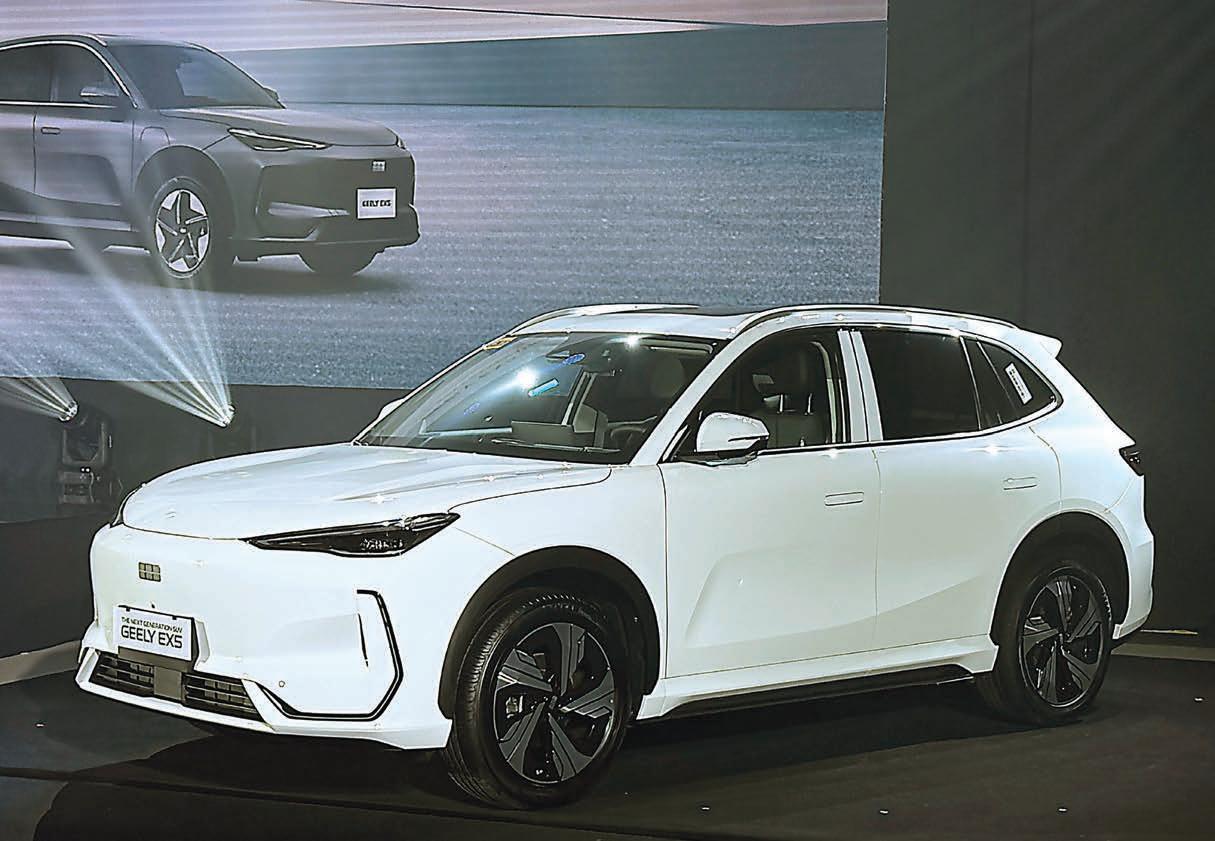
Words by John Rey San Diego
There are road trips— and then there are journeys that feel like a full-circle moment. That’s exactly what Lakbay Tamaraw turned out to be.
Launched to celebrate the return of Toyota’s iconic Tamaraw, the inaugural run of Lakbay Tamaraw was more than just a scenic drive. It was a symbolic homecoming. This all-new utility vehicle—reborn for modern needs—was brought to Mindoro, the very island that gave the original its name, and still shelters its namesake: the
critically endangered tamaraw (Bubalus mindorensis).
As far as setting goes, you couldn’t ask for a better backdrop. Our trip began at Batangas Port, where a convoy of next-gen Tamaraws rolled aboard a FastCat RoRo vessel headed for Calapan, Oriental Mindoro. Along with a group of fellow motoring journalists, I found myself behind the wheel of the 2.4 Dropside LWB DSL M/T—the base workhorse of the Tamaraw lineup.
And just like that, we were off. The ship docked, the ramp dropped, and we rolled out into
the warm Mindoro air—ready to get reacquainted with a nameplate that’s as embedded in Philippine automotive culture as the Corolla or the FX.
The model I drove may have been the most barebones of the lineup, but it never felt lacking in purpose. With a 2.4-liter 2GD-FTV turbo diesel engine under the hood (shared with the Fortuner and Hilux), paired to a 5-speed manual gearbox, it had more than enough grunt to make easy work of climbs and cargo. Manual windows, basic
bench seating, and steel wheels reminded me of its commercial roots, yet thoughtful additions like power steering, ice-cold aircon, and Bluetooth audio made it feel far from stripped down.
What surprised me the most was the NVH (Noise, Vibration, and Harshness) level—or lack thereof. For a utility vehicle riding on 195 R14C tires and meant for rugged use, the cabin was impressively quiet. Sure, you could still hear the satisfying spool of the turbo and feel the low-end torque when climbing— but it was never intrusive.
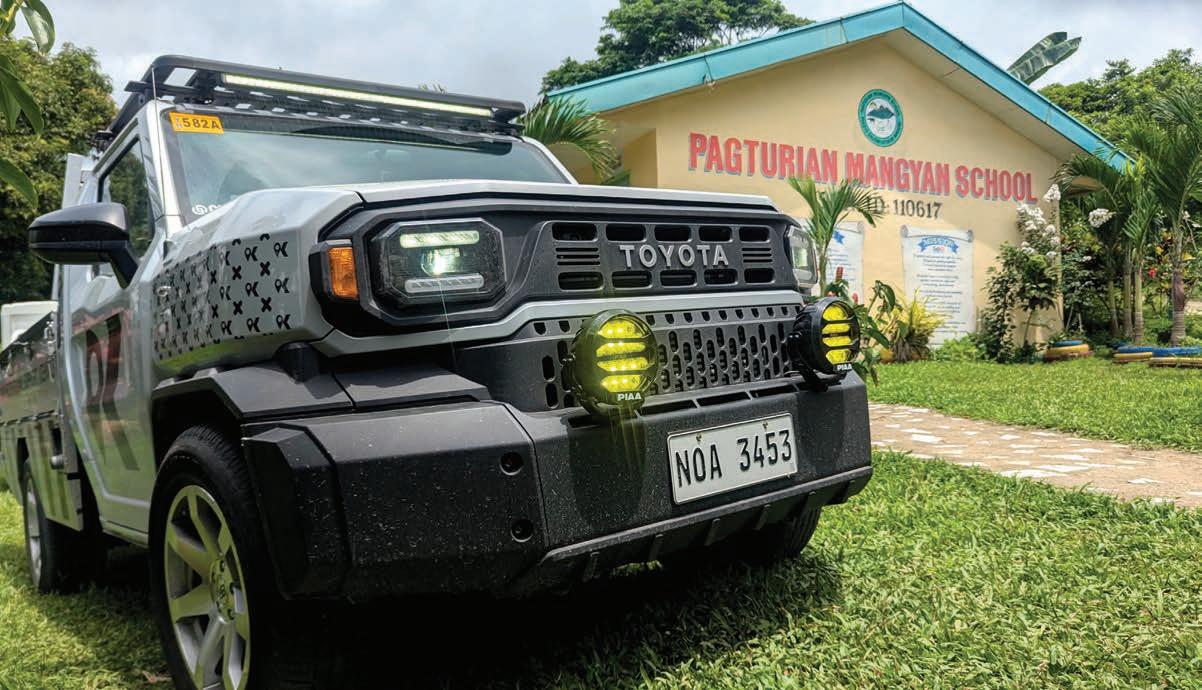
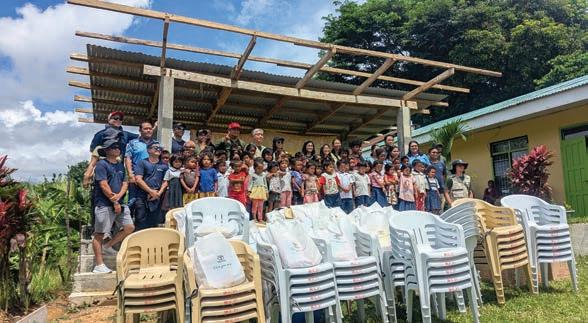
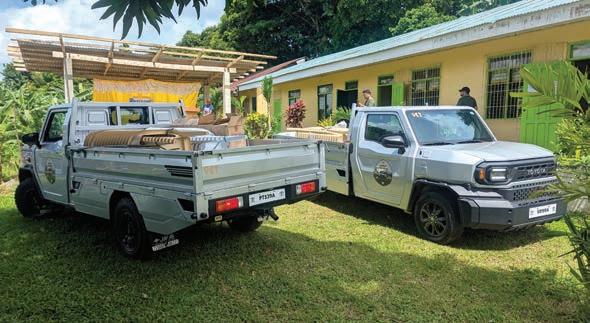
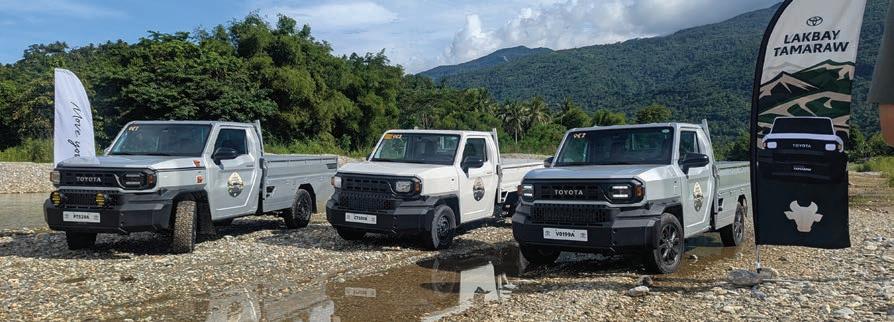
It actually made for a rather relaxing drive, even over long stretches.
Our first stop was Toyota Calapan City, where local staff and partners gave us a warm welcome. Also joining our convoy was the Tamaraw Conservation Program (TCP) team, a DENR-led initiative focused on protecting the endangered species. Toyota Motor Philippines (TMP) recently partnered with TCP to support awareness and conservation efforts for the tamaraw—turning what was once just a nameplate into a real cause.
No, we didn’t catch sight of a tamaraw during our stay, and we didn’t expect to. Conservation protocols are strict, and rightly
so. But simply being on the same soil where the species roams brought a new layer of meaning to the trip.
From there, we made our way to Mangangan Bridge in Baco, where we took the Tamaraws down to the riverbed for a quick photoshoot during low tide. The trucks looked right at home— rugged, grounded, and ready to get dirty. Then it was on to Infinity Farm, a quiet sanctuary tucked beneath Mt. Halcon, where we cooled off with some refreshments and the peaceful sound of cascading waterfalls.
After a quick break, it was back behind the wheel for the winding drive to Puerto Galera. This was perhaps the most rewarding
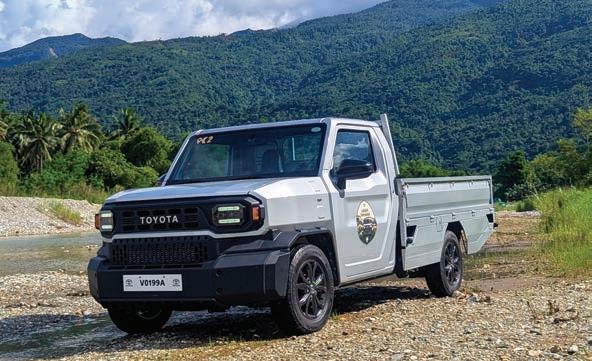
stretch for a driver. With steep gradients and tight curves, it became clear how much torque and drivability the Tamaraw really offers. It never once felt underpowered, even with the climbs—proof that Toyota knew exactly what kind of terrain this vehicle would have to conquer in the real world.
We eventually reached Infinity Resort, our rest stop for the evening, just as dusk painted the horizon. But the most meaningful leg of our trip came the next day.
At Pagturian Mangyan School, nestled in the hills of Puerto Galera, the Tamaraws once again showed their purpose. Loaded with school supplies and donations, they powered up the steep access roads with ease. Greeting us were shy smiles and waving hands from students and teachers—grateful not just for the goods delivered, but for the gesture itself.
This, in many ways, was the heart of Lakbay Tamaraw: a vehicle serving a purpose beyond profit. It wasn’t just showing off power or payload—it was proving that the next-gen Tamaraw is as capable in spirit as it is in function.
After the school visit, we made a quick detour to Ponderosa Golf and Country Club for lunch. Perched above the coastline, the spot offered

sweeping views of Puerto Galera’s rolling hills and blue waters—an ideal setting to take it all in.
The Workhorse Returns— Stronger, Smarter, and More Meaningful
By the time we boarded the return ferry back to Batangas, the Tamaraw had proven itself again—not just as a reliable utility truck, but as a vehicle that can connect cultures, deliver impact, and drive with heart.
In just a few days, we had driven across mountain roads, muddy riverbeds, and sundrenched coastal highways. We’d met local students, conservationists, and community leaders. And through it all, the Tamaraw was there—steady, simple, and dependable. It did what it was built to do without fuss. No drama. Just quiet, consistent work.
In a world where utility vehicles are often overlooked or reduced to fleet numbers, Toyota’s reborn Tamaraw stands out—not just for what it is, but for what it represents: the return of a trusted name, the revival of a legacy, and a new generation of purpose-driven mobility.
It’s back. It’s local. It’s reliable as ever.
And this time, the Tamaraw isn’t just carrying cargo—it’s carrying a mission.
THE NEW BENTAYGA SPEED SETS A NEW STANDARD — BUT WHEN WILL IT LAND IN THE PHILIPPINES?
Words by Anjo Perez
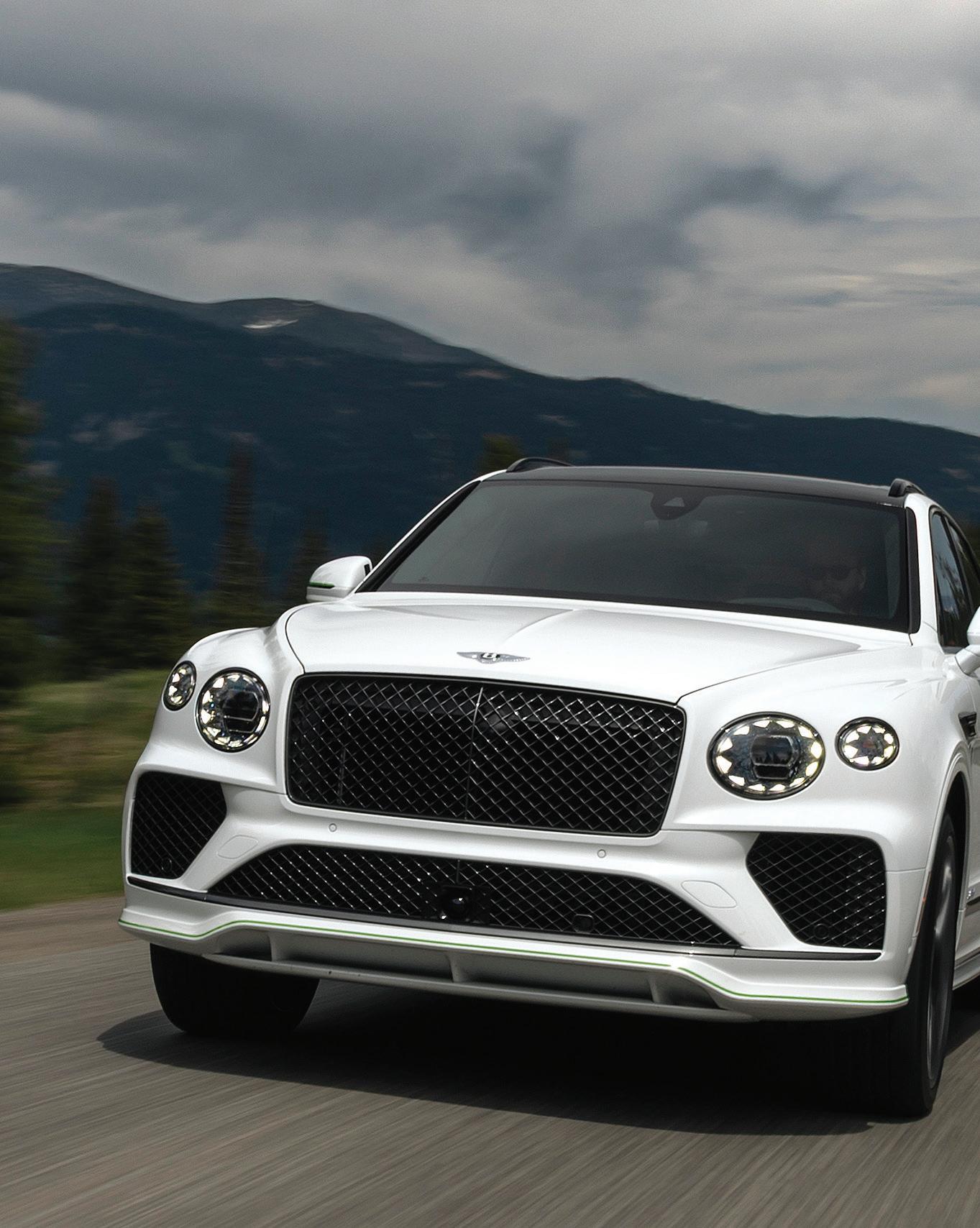


In the world of ultra-luxury SUVs, few names carry the weight that Bentley does. And now, with the unveiling of the new Bentayga Speed, the British marque isn’t just redefining opulence — it’s rewriting the rules of performance in a segment that’s already crowded with contenders trying to claim the throne. This time, however, the focus isn’t just on polished wood and soft leather. Underneath its handcrafted skin lies a V8-powered monster that raises the bar for what a Bentley SUV should be. It’s louder, quicker, more agile — and, in a way, more rebellious than ever before.
Launched globally with a spotlight on the Middle East — a region where Bentley SUVs have long found eager buyers — the new Bentayga Speed arrives with a bold claim: it’s the most powerful and most dynamic Bentayga in the model’s history. But amid all the fanfare, one question
lingers for fans and collectors in our corner of the world: When will it arrive in the Philippines?
At the heart of this new flagship is a 4.0-liter twinturbocharged V8, now tuned to deliver 650 PS and a thumping 850 Nm of torque. Mated to an 8-speed automatic gearbox, it can rocket from 0 to 100 km/h in just 3.4 seconds, with a top speed of 310 km/h — figures
that were once the domain of low-slung supercars, not family-sized SUVs clad in quilted leather.
But it’s not just about straight-line numbers. Bentley has turned up the volume— literally and figuratively—with this model. The sports exhaust system, fitted as standard, brings a deeper, more guttural soundtrack to the experience. For those wanting even more drama, the optional Titanium Akrapovič system dials the growl up further with its
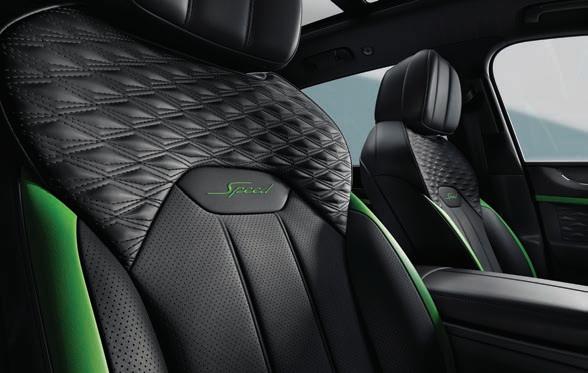
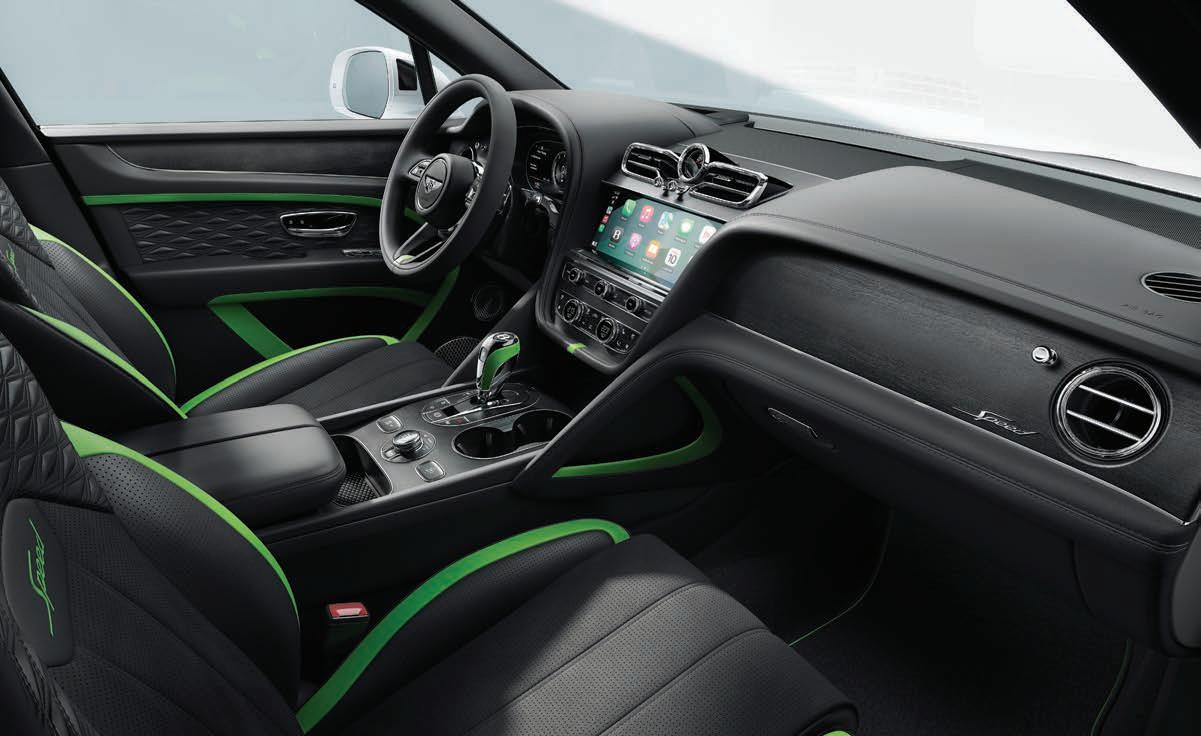
quad tailpipes and distinctive acoustics. The V8 now sounds as potent as it feels, delivering not just power but a full-on sensory event with every throttle input.
A Sharper Edge
Where previous Bentaygas leaned heavily on refinement and touring comfort, this Speed variant adds something Bentley has rarely chased outright: driver engagement. Switch into the recalibrated SPORT mode, and the character transforms. Steering becomes sharper, suspension stiffens by 15%, and throttle response turns twitchier. An ESC Dynamic setting loosens electronic safety nets, enabling controlled slip angles and even poweron oversteer — a first for any Bentley SUV.
For those who dare, Launch Control is also now available — another debut for the model. It’s a nod to the growing number of Bentley customers who want performance not
just as a promise, but as an active part of the ownership experience.
Behind the scenes, torque vectoring by brake, all-wheel drive, and newly integrated all-wheel steering work in harmony to shrink this 2.4ton beast around corners. The rear wheels now countersteer at low speeds for tighter maneuverability, while aligning with the front at higher speeds for added stability. It’s tech typically reserved for highperformance sedans, but in the Bentayga Speed, it elevates handling to a level that no SUV this size should logically reach.
The Luxury Still Lives Here
Of course, it wouldn’t be a
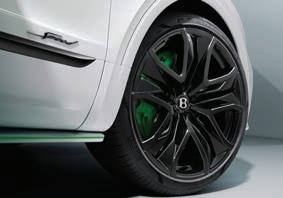
Bentley without the cabin getting its fair share of attention. Inside, the Bentayga Speed is just as much a luxury lounge as its predecessors. But here, the materials and details lean a little more toward performance — think Precision Diamond quilting, Speed badging, and a bolder color split in the upholstery. The darker secondary hides, offset with brighter flashes, subtly hint at the SUV’s dual character: a plush cruiser with the heart of a sports car.
Twin 12.3-inch digital displays keep things modern, while a 14-speaker JBL sound system ensures the soundtrack is just as immersive when the engine isn’t the one providing
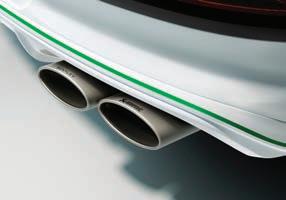
it. For audiophiles and gadget lovers alike, Apple CarPlay, Android Auto, and over-theair updates are all part of the package. And for the practical few among us, there’s even a 1,500-watt AC inverter on board—perfect for powering up gear on a road trip or glamping setup.
On the Outside, Muscle in a Tailored Suit
Visually, Bentley has taken an understated approach to announcing this Speed variant. Sure, there are 22-inch Speed wheels as standard, with an optional upgrade to 23-inch alloys if you go for the carbon ceramic brakes. The usual chrome brightware is toned
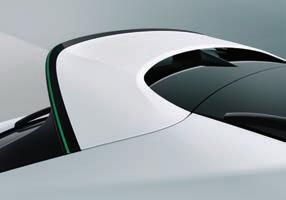
down to a dark-tinted finish, the headlights and tail lamps are darker, and small but meaningful details like the 457TT badge (a nod to its horsepower rating) and Beyond Zero HEV logos subtly distinguish the hybrid powertrain.
It’s the kind of aesthetic that whispers rather than shouts, staying true to Bentley’s ethos: refined, confident, and built for those who don’t need to scream to be noticed.
Will It Come to the Philippines?
If there’s one market in Southeast Asia that has consistently embraced the Bentayga nameplate, it’s the Philippines. Bentley Manila has kept a steady stream of interest since the SUV’s debut, especially among clients who want the ride comfort of a limousine with the go-anywhere presence of an SUV. Given this, the Bentayga Speed’s arrival seems less like a question of if, and
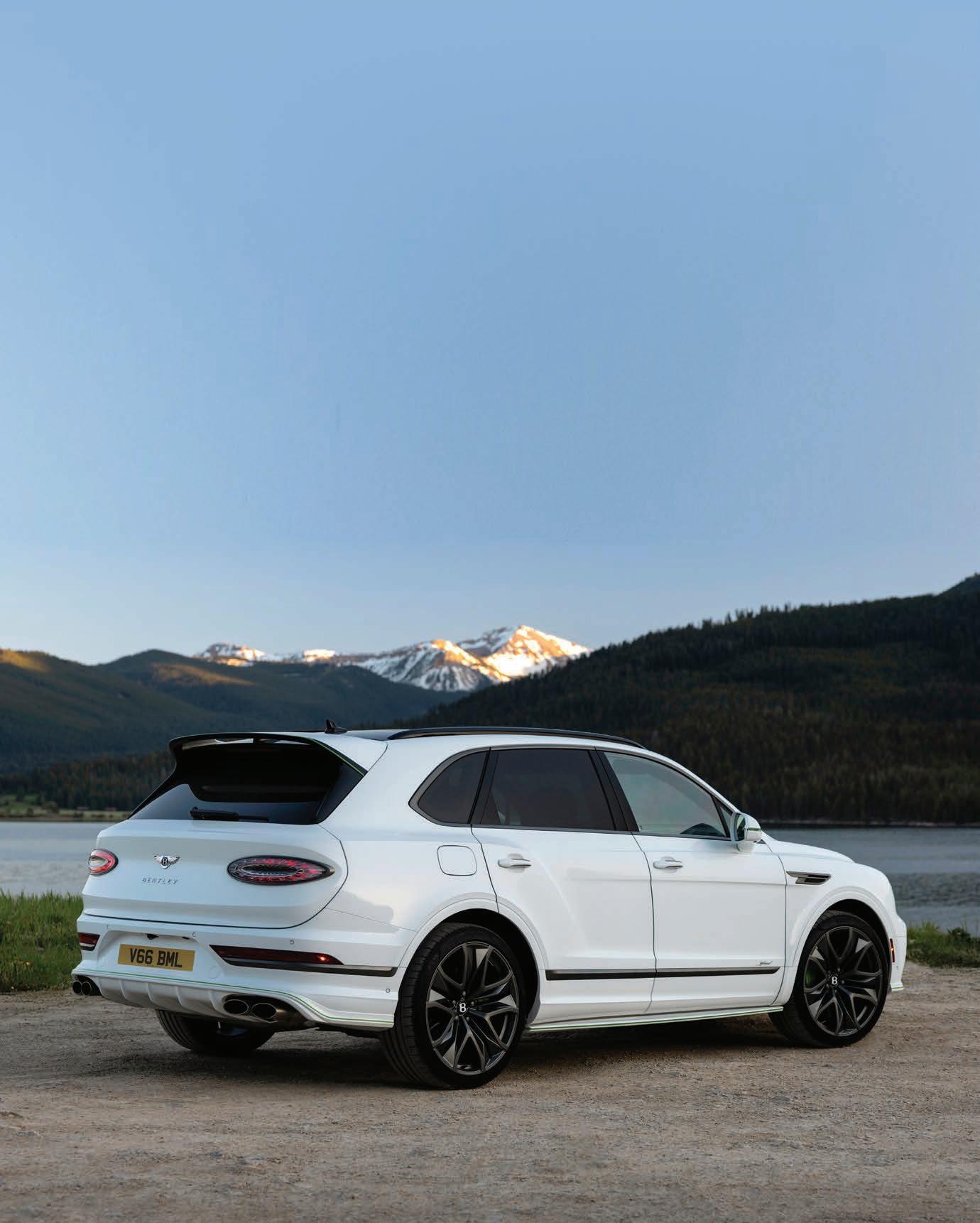
more of when.
With the new V8 Speed replacing the W12 variant in key markets, local luxury buyers waiting for the next big thing from Crewe may not have to wait long. There’s already speculation among dealers and collectors that a limited allocation could be confirmed for the Philippines by early next year—subject, of course, to global supply and production schedules out of Bentley’s factory in the U.K.
Until then, the Bentayga Speed remains something to aspire to: a luxury SUV that delivers performance without compromise, presence without pretense, and a driving experience that’s every bit as exhilarating as its badge promises.
And if it finds its way here— as it almost certainly will—it may just become the new benchmark for what a proper performance-luxury SUV should be.
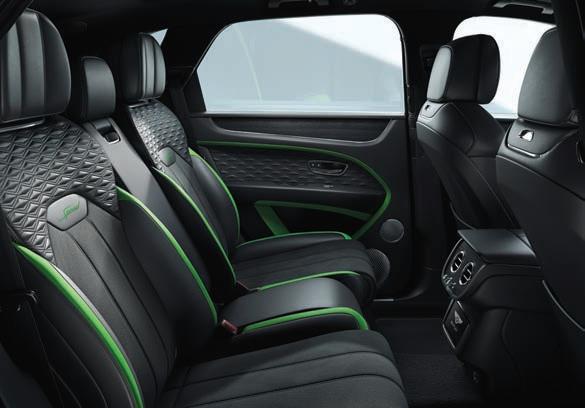
“It’s the kind of aesthetic that whispers rather than shouts, staying true to Bentley’s ethos: refined, confident, and built for those who don’t need to scream to be noticed.”
The Nissan Patrol Nismo is back—and it’s bolder, faster, and sharper than ever before. Making its global debut on the 10th anniversary of the original Patrol Nismo, the 2026 model reaffirms Nissan’s commitment to building performance SUVs that can rule both the racetrack and the desert. While this latest iteration remains exclusive to the Middle Eastern market for now, its upgrades are enough to make

even seasoned gearheads do a double take.
Twin-Turbo
Under the hood sits the same VR35DDTT 3.5-liter twinturbocharged V6 engine, now tuned by Nismo engineers to deliver an impressive 495 horsepower—up by 70 horses from its predecessor—while torque remains at a solid 700 Nm. It’s paired with a recalibrated 9-speed automatic
transmission that benefits from Nismo’s extensive track experience. The engine assembly process includes precise manual inspections, particularly of valve clearances, to ensure optimal performance and reliability.
The 2026 Patrol Nismo is not just a straight-line bruiser—it’s built to handle corners and undulating terrain with grace. Chassis enhancements include a new
electric power steering system for sharper response, along with retuned traction and stability control for better handling at speed. Electronic dampers have been updated to automatically
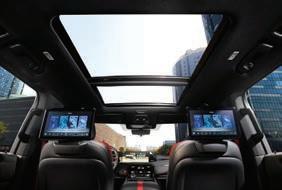
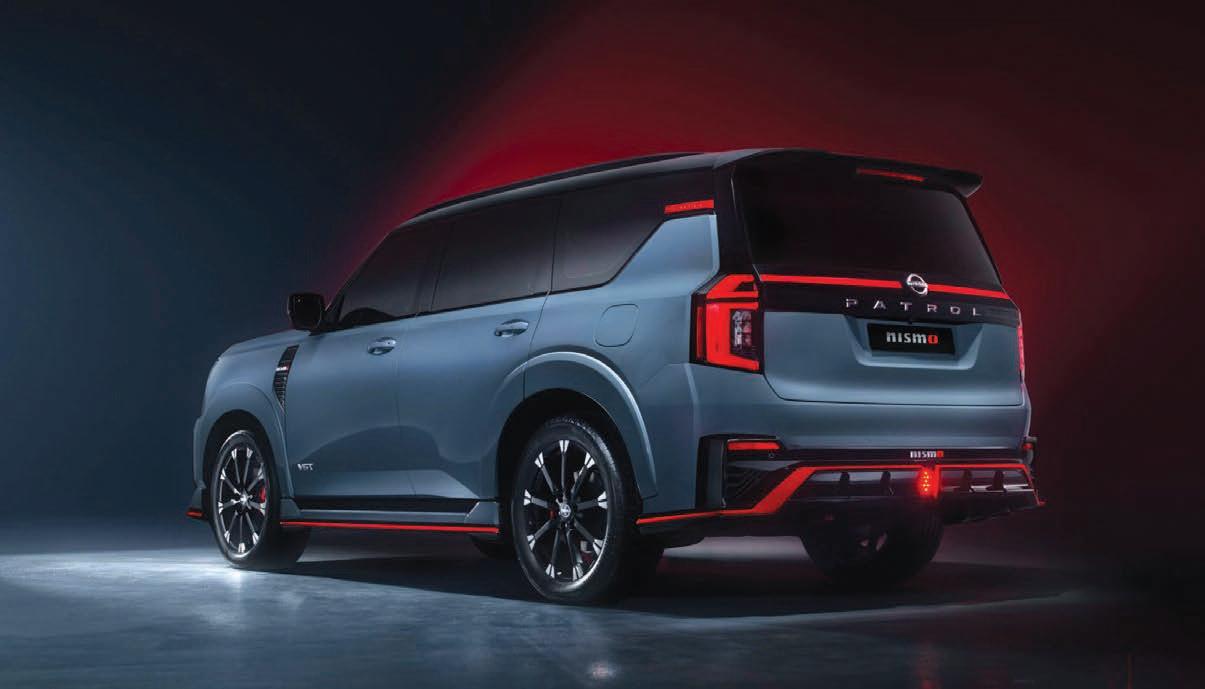
adjust in real time, reducing body roll during aggressive driving while maintaining ride comfort during normal cruising. For those craving even more versatility, an optional adaptive air suspension system is available, allowing drivers to tailor ride height and stiffness depending on the terrain or driving mood.
Visually, the Patrol Nismo wears its motorsport pedigree proudly. A massive mesh grille dominates the front end, seamlessly connecting with lower air channels that improve brake cooling and radiator airflow. The front splitter,
integrated with LED fog lights, gives it a wider, lower stance, while functional aero elements manage drag and downforce.
Along the sides, the Patrol Nismo rolls on 22-inch RAYS forged alloy wheels that are 23% lighter than their standard counterparts—improving not just aesthetics, but unsprung weight and overall handling.
Inside, it’s a blend of highperformance cues and luxury comforts. Red stitching and accents adorn the dashboard, seats, and Alcantara-wrapped steering wheel. Carbon fiber trim completes the sporty feel, while Nismo branding appears

tastefully throughout the cabin. Entertainment and tech are equally premium. Dual 14.3inch Monolith Display screens dominate the dash, while a powerful Klipsch sound system delivers crystal-clear audio. An Active Sound Enhancement system pipes in engine growls from the Nismo-tuned exhaust— because a vehicle like this deserves to sound as thrilling as it drives.
Currently, the 2026 Nissan Patrol Nismo is only available in the Middle East, where demand for high-performance full-size SUVs remains high. But Filipino enthusiasts shouldn’t completely lose hope. The Philippines is Nissan’s second-largest market for the Patrol globally, and while there’s no official word yet, such a strong following might just convince Nissan to consider a limited local release in the future.

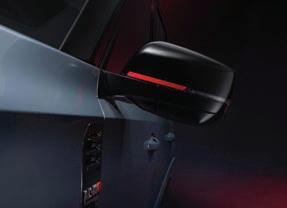
Until then, gray market importers remain the only channel for those eager to get their hands on this rare, highperformance SUV that doesn’t compromise on space or off-road capability.
Bottom Line: The 2026 Nissan Patrol Nismo isn’t just an eightseater SUV. It’s a track-capable, twin-turbocharged powerhouse with serious off-road DNA and the refinement of a luxury cruiser. Whether it’s carving through dunes or cruising through city streets, it delivers excitement with every drive—just don’t expect it to stay under the radar.

Step into any car dealership in the Philippines today and you’ll quickly notice that the market is buzzing. There are more choices than ever—from new Chinese contenders offering bang-forbuck packages, to global brands flexing tech and design. But despite all the noise, there’s one name that still rises to the top of every serious car shopper’s list: Toyota.
It’s a question that many Filipinos eventually find themselves asking when they’re
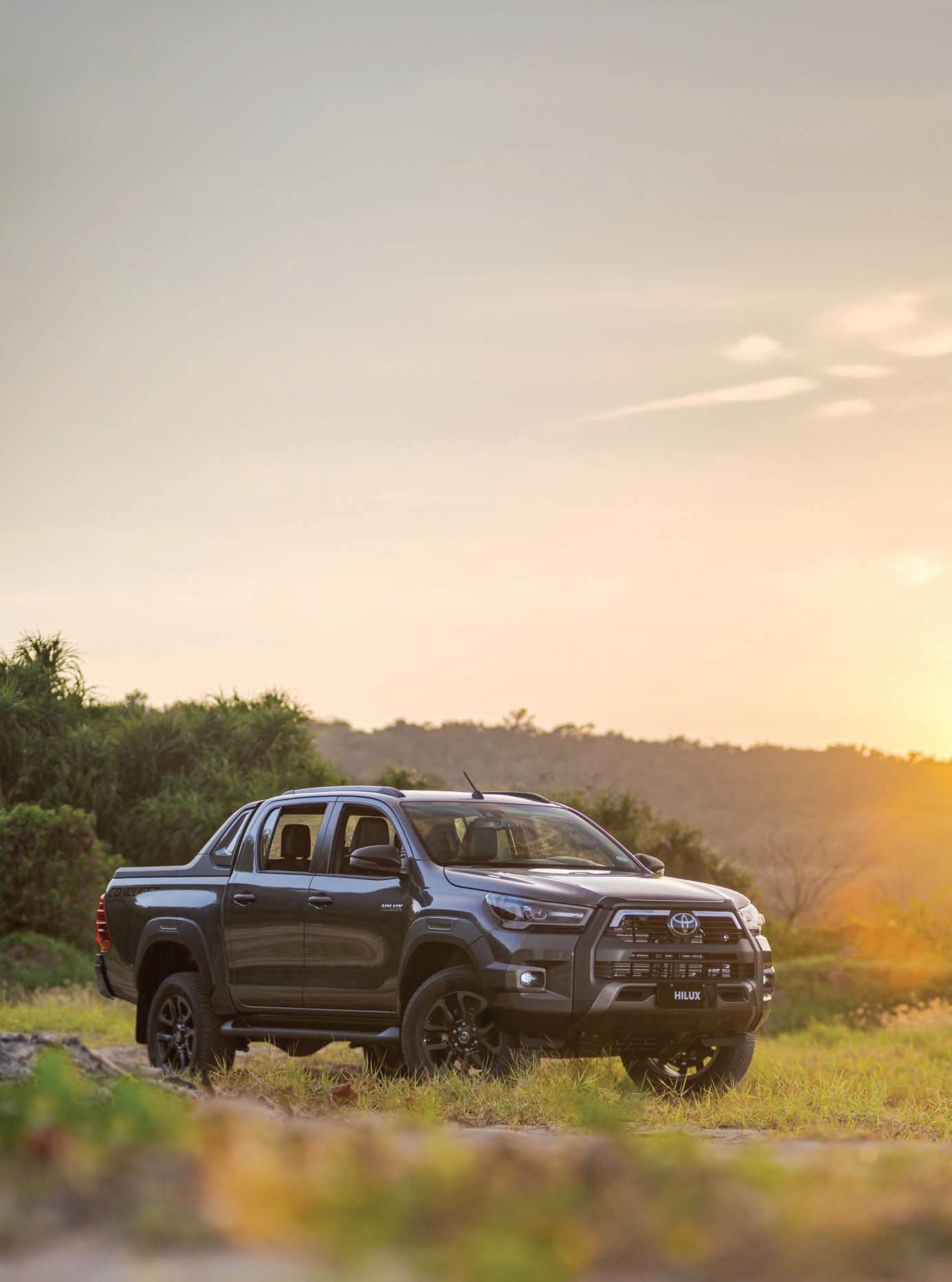
ready to commit to a vehicle:
“Anong brand ang para sa akin?” And more often than not, the answer comes almost instinctively: “Toyota, kasi subok na.”
There’s a reason for that. Or rather, there are many.
Toyota’s story in the Philippines officially began in 1989 when it established operations locally. Since then, it hasn’t just sold vehicles—it has become part of the Filipino way of life. Through decades of economic changes, political shifts, and even the rise of ride-
hailing and delivery apps, Toyota has remained consistent. And in a country where trust is often built slowly and carefully, Toyota has earned it mile after mile, oil change after oil change.
One of the biggest factors behind Toyota’s dominance is its reputation for reliability. For the average Filipino buyer, owning a car isn’t about luxury—it’s about long-term value. A vehicle has to be tough enough for rough roads, forgiving enough to handle a missed PMS, and easy to maintain with parts that are affordable and accessible. That’s
exactly the formula Toyota has mastered.
Drive through any city or far-flung province and you’ll still see old Corollas from the ‘90s, Tamaraws from decades past, and Revos that have doubled as both family cars and small cargo haulers. These are not nostalgia pieces—they’re daily drivers, many still serving as school shuttles, taxis, or delivery units. Their continued presence is a quiet but powerful testament to how Toyota has built vehicles that outlast trends, outlive ownership changes, and often
outdrive the competition.
But Toyota’s appeal isn’t just about durability. Over the years, it has evolved with the needs of Filipino motorists. For first-time buyers navigating narrow city streets and budget constraints, Toyota has created accessible options that don’t feel like compromises. The Wigo and Vios, for example, have become go-to choices for young professionals, ride-hailing drivers, and college parents looking for reliable first cars for their kids. And models like the Avanza provide just the right balance of size and practicality for urban families who need space without sacrificing maneuverability.
For those who need more versatility, Toyota continues to refine and expand its lineup. The Innova has earned its place as a trusted multi-purpose vehicle that can handle long road trips, business errands, or even light cargo. The Rush offers SUV styling in a compact footprint, while the Fortuner has long been a staple for families and executives who want comfort, space, and road presence. Meanwhile, the Hilux has cemented its status as the country’s workhorse—used by farmers, contractors, and fleet operators alike. Whether it’s hauling sacks of rice in the
provinces or wading through floods in the city, the Hilux just works.
More recently, Toyota has led the local shift toward electrified mobility. Long before EVs became the buzzword they are now, Toyota was already selling hybrids in the Philippines. The Camry Hybrid, followed by the Corolla Altis and the Corolla Cross hybrids, introduced Filipino buyers to the idea of fuel efficiency with zero charging anxiety. Today, Toyota offers the most extensive hybrid lineup in the country, including models like the RAV4 HEV, Alphard HEV, and the more recent Zenix and Yaris Cross HEV. These hybrids don’t just help save on gas—they represent Toyota’s commitment to practical, real-world sustainability. For many, they offer the perfect middle ground between traditional combustion engines and the still-developing electric charging infrastructure in the Philippines.
And while Toyota is known for practicality, it hasn’t forgotten about performance. Through its Gazoo Racing (GR) division, the brand has unleashed some of its most exciting models yet. The GR Supra has become an icon in its own right, while the GR Yaris—a rally-bred hot hatch—remains one of the most

sought-after limited-production vehicles in recent years. The GR 86, meanwhile, brings driving joy back into focus for enthusiasts looking for a pure, rear-wheeldrive experience. These are not your everyday Toyotas—but they serve as proof that the brand knows how to have fun when it wants to.
Behind all of this is a dealership and service network that is unmatched in scale and accessibility. With 75 dealerships and 8 service centers across the country, Toyota makes it easy to buy, maintain, and service your vehicle—whether you’re in the heart of Makati or in the middle of Misamis. Many dealers are full-service facilities where you can test drive, explore accessory packages, or inquire about flexible payment schemes
through Toyota Financial Services.
Toyota has also moved with the times in terms of ownership experience. The myToyota App, for example, allows customers to schedule service appointments, receive vehicle maintenance reminders, and connect directly with their dealership—all through their smartphones. The T-SURE program, Toyota’s certified pre-owned vehicle arm, offers peace of mind to secondhand buyers with quality-checked used units backed by warranties. And for those not quite ready to commit to buying, the Kinto One leasing program offers flexible terms for both individuals and companies—another sign that Toyota understands the evolving mobility needs of Filipinos.

issan’s iconic electric vehicle is back—and this time, it’s sharper, smarter, and more determined than ever to lead the charge. Officially unveiled as the third-generation LEAF, the all-new model marks a significant leap forward for the nameplate that helped kick off the modern EV movement over 15 years ago. Since its original debut, the LEAF has racked up nearly 700,000 global sales, proving that electric cars aren’t a passing trend—they’re here to stay.
Now, with the global EV race intensifying and competition more fierce than ever, Nissan is returning to the spotlight with a completely reengineered LEAF. With updated styling, next-gen tech, and serious performance upgrades, this isn’t just a refresh—it’s a full reboot. There’s just one lingering question for Filipino EV fans: When is it coming here?
Built on the CMF-EV platform— the same modular electric
architecture used in the Nissan Ariya—the new LEAF finally catches up to its EV peers in space, form, and function. The flat floor allows for better cabin room and storage, while a longer wheelbase gives the car a more planted, confident look.
Design-wise, the LEAF now embraces what Nissan calls “Timeless Japanese Futurism.” It’s a clean, minimalist take on aerodynamic efficiency, with flush door handles, a wind-slicing silhouette, and intricate 3D tail lamps. Hidden within the grille and lighting
patterns is a clever geometric motif representing “ni” and “san” (2 and 3 in Japanese), anchoring the design in Nissan’s cultural roots while projecting a thoroughly modern aesthetic.
The cabin follows suit. Depending on market and variant, the new LEAF features either dual 12.3-inch displays or a larger 14.3-inch central touchscreen, paired with Nissan’s monolith-style interface. Higher-end trims get Bose® premium sound, a dimming panoramic roof, and cutting-edge visibility features

like Invisible Hood View and Front Wide View—systems designed to assist in tight city maneuvers and low-speed navigation.
Power, Range, and Smarts
Underneath the stylish skin are two powertrain options. The base model pairs a 52 kWh battery with a 130 kW motor, delivering 345 Nm of torque. The longrange version packs a 75 kWh battery, good for 160 kW and 355 Nm, with a U.S.-rated range of up to 303 miles (approx. 490 km).
Charging is fast and efficient. Using a high-speed charger, owners can top up from 10 to 80 percent in about 35 minutes. And Nissan is thinking beyond just mobility: in select markets, the LEAF will offer V2L (Vehicle-to-
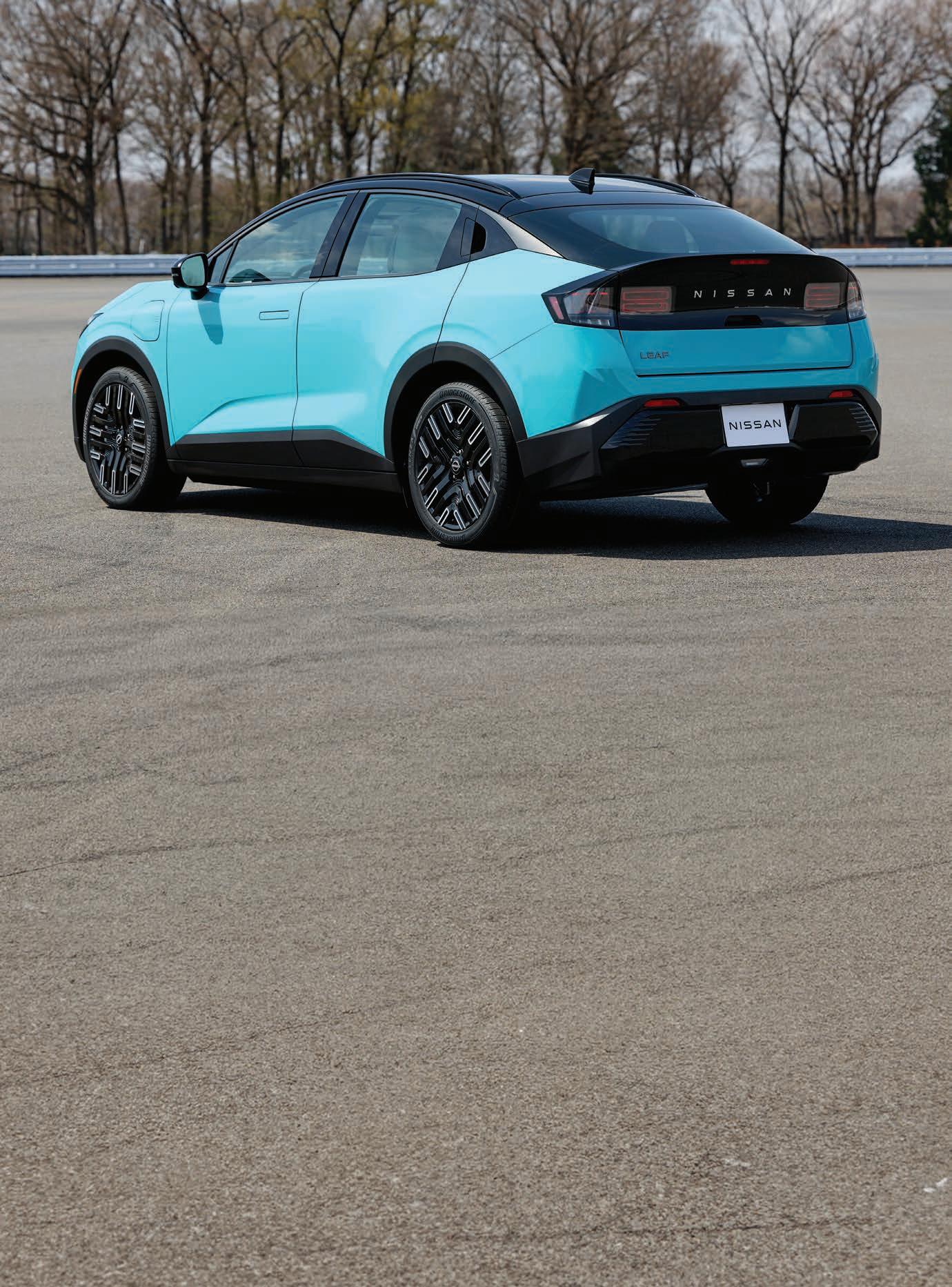
Load) and V2H (Vehicle-to-Home) capabilities, letting users plug in appliances or even support household power needs directly from the car.
In North America, the LEAF will be equipped with the NACS (North American Charging Standard) port, making it compatible with Tesla’s Supercharger network. Over in Europe, Vehicle-to-Grid (V2G) technology is being prepared to help drivers offset power costs or even contribute electricity back to the grid.
Production and Global Rollout
Production of the third-gen LEAF will take place at Nissan’s Tochigi plant in Japan and its Sunderland facility in the U.K..
The model is expected to hit U.S.
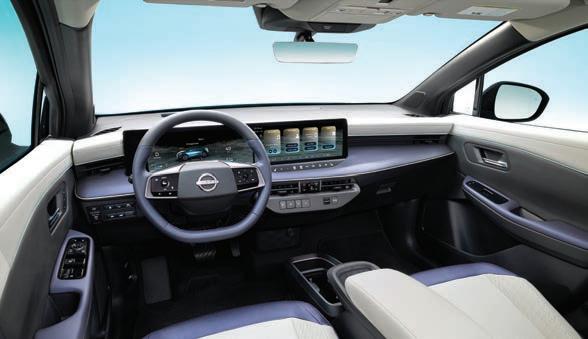

dealerships later this year, with a phased rollout planned for other regions.
What about the Philippines?
So far, Nissan Philippines has yet to make an official announcement regarding the launch date or availability of the all-new LEAF. The current version of the LEAF has been on sale locally since 2021, but with a hefty price tag and limited charging infrastructure, it remains a niche offering. That said, things are changing fast.
Government policies supporting the Electric Vehicle Industry Development Act (EVIDA) are now in full swing. EVs like the LEAF already enjoy zero import duties, exemption from the number coding scheme, and potential registration perks, which could help make newer models more appealing to mainstream buyers.
In short: the conditions are ripening for the arrival of a new
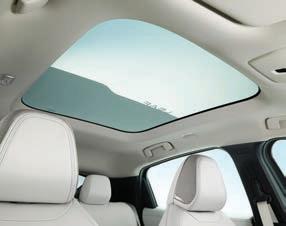
wave of EVs—and the third-gen LEAF could be a frontrunner if Nissan pulls the trigger.
Waiting in the Wings
Until Nissan confirms a Philippine launch date, ecoconscious drivers and EV enthusiasts will be watching closely. With its upgraded looks, real-world range, and tech-savvy features, the all-new LEAF is no longer just for early adopters. It’s positioned to convert even the most loyal ICE drivers— especially in urban centers like Metro Manila where short daily commutes, rising fuel prices, and worsening traffic are pushing motorists to reconsider what they drive.
One thing’s clear: the LEAF isn’t just sticking around—it’s ready to lead again. And when it finally lands on Philippine roads, it might just change the conversation around EV ownership altogether.

Words by Anjo Perez
In the transportation scene often defined by specialization, Suzuki Philippines Incorporated (SPH) stands out for doing it all—and doing it well. For 50 years, the brand has been a staple in the Filipino experience of motion, selling not just motorcycles or cars, but also marine engines. It’s the only mobility brand in the country to operate in all three sectors under one roof, and that unique footprint made its golden anniversary celebration this 2025 all the more meaningful.
From its roots as a motorcycle assembler in 1975 through a joint venture with Rufino Antonio and Associates, Suzuki has evolved into a national force. Its reach is impressive: over 5,000 motorcycle outlets—including 105 exclusive 3S
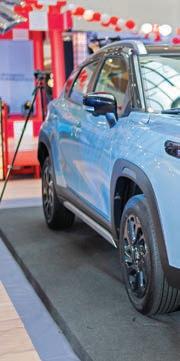
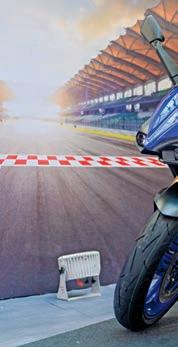
shops—80 automobile dealerships, and 22 marine branches scattered across Luzon, Visayas, and Mindanao. But beyond the numbers lies a deeper truth: Suzuki has become part of the daily lives of millions of Filipinos, offering affordable, reliable, and proudly Japanese-engineered mobility that suits both rural and urban lifestyles.
To mark its 50th year in the Philippines, Suzuki staged three major milestone events that reflected the spirit of the brand: one for its trusted network of dealers, one for its passionate customer base, and one for its growing community of riders and adventurers.
One Suzuki Dealer Convention: Honoring the Partners Behind the Scenes
The anniversary festivities kicked off in grand fashion on June 13 at the Conrad Hotel in Manila with the first-ever One Suzuki Dealer Convention, a landmark gathering of Suzuki’s Motorcycle, Automobile, and Marine divisions under one unified event.
“Together, these individuals form the wheel of Suzuki Philippines’ 50-year journey—a journey powered by shared visions, shared efforts, and a shared belief that we can achieve greatness,” said Norminio Mojica, SPH Managing Director.
The event was also notable for drawing key executives from Suzuki Motor Corporation (SMC)
in Japan, including President and Representative Director Toshihiro Suzuki himself. In his keynote address, Mr. Suzuki acknowledged the indispensable role of the Philippine market in the company’s global success and reaffirmed their long-term commitment.
“I would like to express my

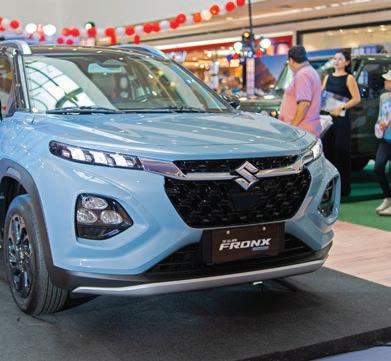
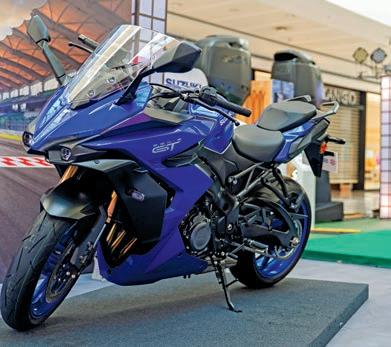
heartfelt gratitude to the people of the Philippines—the government officials, dealers, suppliers, and customers who have supported Suzuki Philippines Incorporated over the past 50 years,” he said. “The demand for mobility in the Philippines is expected to grow, and we are committed to developing infrastructure and products that connect deeply with people’s lives. That’s the essence of our new global brand promise: ‘By Your Side.’”
The One Suzuki Dealer Convention also saw the symbolic passing of the torch among four of the company’s past and present presidents in the country: Koichiro Hirao (current), Hitoshi Ota (1995–2001), Satoshi Uchida (2008–2013), and Hiroshi Suzuki (2013–2019). It was a rare, moving moment that underscored the continuity and evolution of Suzuki’s leadership and vision in the Philippines.
Suzuki Matsuri 2025: A Festival of Mobility and Culture
Over the weekend that followed, Suzuki opened its golden celebration to the public with Suzuki Matsuri 2025, a two-day spectacle at the SM Mall of Asia Activity Center on June 14 and 15. Modeled after Japan’s vibrant summer festivals, the event transformed the venue into a fullfledged Suzuki Village, featuring live demos, vehicle showcases, interactive booths, cultural

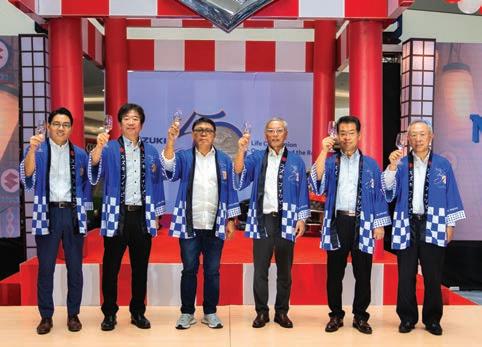
performances, and family-friendly attractions.
“Fifty years ago, Suzuki began with a dream to serve the Filipino people,” said SPH President Koichiro Hirao. “Today, Suzuki stands proudly by the side of every Filipino—on motorcycles, in cars, and even at sea. This festival celebrates not just our Japanese heritage, but our Filipino heart.”
Attendees were treated to a variety of Suzuki’s latest offerings arranged across three experience zones: The Adventure Zone featured rugged rides built for exploration, including the V-STROM 1050DE, V-STROM 800DE, V-STROM 250SX, Raider J Crossover, and the Jimny 5-Door. It also highlighted Suzuki’s Polyboat fitted with a DF2.5 marine engine and two Stealth 250s.
The Sport Zone drew in speed seekers with the powerful Hayabusa, GSX-S1000GT, GSX-8R, and Gixxer SF155, joined by the Jimny 3-Door, XL7 Hybrid, and two flagship DF350A outboard engines.
The Urban Zone catered to commuters and city dwellers with fuel-efficient and stylish offerings like the Avenis, Skydrive Sport, Burgman Street EX, Burgman 400 ABS, and the hybrid-powered Dzire.
But the true star of the show was the Philippine public debut of the Suzuki Fronx—a sharp, subcompact crossover designed to blend practicality with youthful flair. With its bold exterior, compact footprint, and driver-friendly

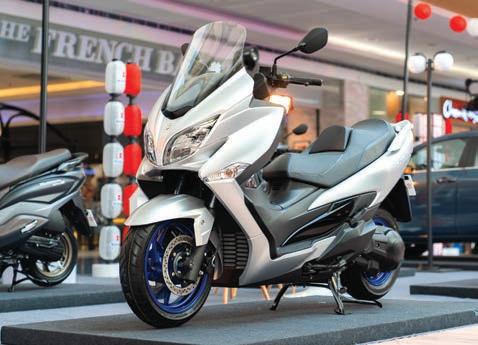
features, the Fronx represents Suzuki’s push to capture a new generation of Filipino motorists who seek efficiency and style without breaking the bank.
Capping off the celebration was the One Suzuki Big Ride, a massive gathering of Suzuki motorcycle owners and enthusiasts from across the country. Riders from all walks of life converged in Metro Manila in what turned out to be one of the largest Suzukiled motorcycle events in recent memory. It was a celebration not just of machines, but of community, freedom, and the shared bond between Suzuki and its loyal riders.
More than just a ride, the event served as a reminder of how Suzuki motorcycles have become integral to Filipino life. Whether zipping through narrow barangay roads or cruising along provincial highways, Suzuki’s two-wheelers have long been the lifeline of countless workers, delivery riders, students, and hobbyists.
Suzuki’s success in the Philippines has always been rooted in one thing: understanding the needs of its people. From the rugged durability of the Raider R150 to the lifestyle versatility of the Jimny, to the dependability of their outboard
engines that support fisherfolk and coastal communities—the brand has stayed relevant because it listens and adapts.
Behind the products is a rock-solid support system of local dealerships, parts suppliers, and aftersales professionals trained to meet global standards. SPH’s widereaching presence has allowed it to deliver not just vehicles but genuine peace of mind to customers, especially in regions where reliable transportation can spell the difference between opportunity and stagnation.
As the company looks forward to its next half-century, SPH aims to build on its heritage of “mobility with heart.” Its unified branding, “By Your Side,” isn’t just a slogan— it’s a promise to remain a trusted companion in every Filipino’s journey, whether they’re chasing dreams in the city, cruising the highways, or fishing the open sea.
At 50, Suzuki isn’t slowing down—it’s shifting into high gear. The brand’s remarkable trajectory, born from humble beginnings and grown through decades of service, community engagement, and innovation, is a testament to what’s possible when a company moves with the people it serves.
And if the golden anniversary was any indication, the next chapter in Suzuki Philippines’ story is just beginning—and it’s looking brighter, bolder, and even more exciting than the last.
In Tacloban City, where opportunities often feel as distant as the city’s skyline, a rare kind of milestone unfolded under the afternoon sun. Fifteen young scholars—fourteen men and one woman—walked across a small stage and into a new chapter of their lives. For them, this wasn’t just a graduation. It was a breakthrough.
These students, coming from some of the most economically challenged communities in the Visayas, completed their training under the Isuzu Heart and Smile Project (IHSP)—a long-running initiative that’s been quietly changing lives since 2008. Spearheaded by Isuzu Motors Limited Japan, in collaboration with TESDA and World Vision, the program offers underprivileged Filipino youth hands-on automotive training, a nationally recognized certificate, and, more importantly, a path out of poverty.
The scene was emotional. Families gathered proudly—many of them experiencing their first graduation ceremony. Tears mixed with applause as students received their National Certificate IV, the highest level of certification in TESDA’s automotive servicing track. Among them was Jaryl Barrios, this year’s valedictorian, whose story perfectly encapsulated the deeper meaning of the occasion.
“When I joined this program, I carried not just my own dreams, but the weight of my family’s hopes as well,” Jaryl said in his speech, holding back tears. “I prayed not just to understand machines, but to find a purpose in learning them.”
Beside him stood Jimwell, his older brother, who accompanied him onstage. Few in the crowd knew that it was Jimwell who initially began the program. But due to health setbacks, he was forced to give up his place. Rather than allow disappointment to win, he passed the opportunity on to Jaryl.
“In that difficult moment, something meaningful came out of it,” Jimwell shared. “I saw in my brother the same fire I had—and I was proud to pass him the dream. Watching him succeed? That’s my victory, too.”
Their story is just one of
Words by Anjo Perez
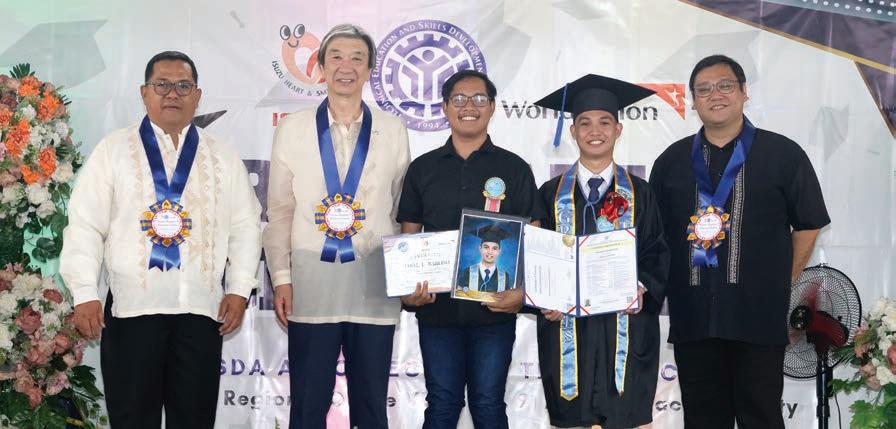
many that underscore what IHSP is really about. The project isn’t just about teaching mechanical skills—it’s about restoring dignity and creating a ripple effect of hope. Many of the graduates come from coastal towns and remote barangays, places where access to quality training, much less long-term employment, is limited. Through this initiative, they not only gain skills—they earn a shot at rewriting their stories.
The IHSP program offers more than just the basic TESDA curriculum. Scholars receive specialized training in Isuzu diesel engine technology, giving them a strong advantage when seeking jobs at Isuzu dealerships or in the broader automotive industry.
The numbers tell a compelling story: 94.3% of IHSP graduates are now employed, with the majority working locally and a significant number securing jobs abroad in countries such as Japan, Australia, the UAE, Saudi Arabia, and the United States. A few have even started their own businesses— proof that the program doesn’t just build workers, it nurtures entrepreneurs.

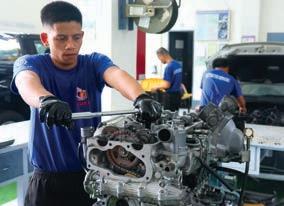
Tetsuya Ikemoto, senior executive from Isuzu Motors Limited, flew in from Japan to personally attend the graduation and congratulate the students. “The Philippine auto industry continues to grow, and with it, the need for skilled, reliable technicians,” he said. “We hope these graduates take pride in their training, and use their skills to not only build their careers, but contribute to the growth of the country.”
The event also served as a warm welcome for Batch 27, as 18 new scholars officially joined the program. They were introduced through a skills demonstration led by the graduating students—many of whom were once in their shoes. It was a symbolic passing of the torch, one that carries more than just knowledge, but a sense of mission.
Isuzu Philippines Corporation President Mikio Tsukui was also in attendance and spoke about the broader significance of the initiative. “Programs like IHSP are proof that when the private sector steps up, real change can happen,”
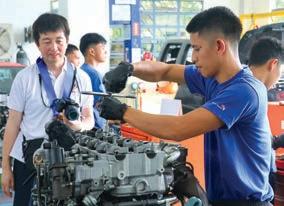
he said. “We’re not just training workers—we’re helping build confident professionals who will contribute to the nation’s future.”
Now on its 17th year, the Heart and Smile Project remains a shining example of how sustained, targeted efforts from the private sector can drive lasting social impact. It’s not just a CSR badge for Isuzu. It’s a living, breathing commitment to lifting others up—one student, one family, one community at a time.
For young people like Jaryl Barrios, and for silent heroes like Jimwell, this program doesn’t just open doors—it rewrites destinies. In a place where ambition is often dulled by circumstance, IHSP offers a powerful alternative: a toolbox, a certification, and a fighting chance. Because when you give the underserved the right skills and the belief that they belong, you don’t just change their lives—you change the lives of everyone around them. And sometimes, all it takes is a wrench, a classroom, and a company that knows it’s not just building vehicles—it’s building futures.



